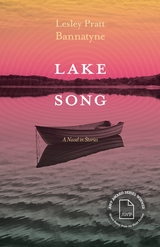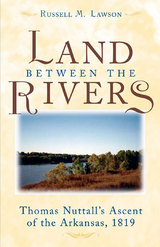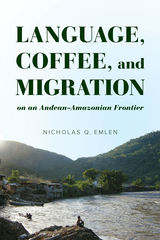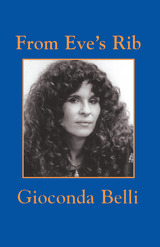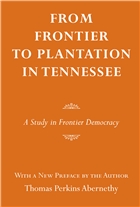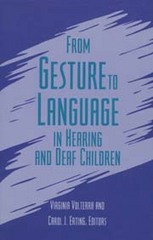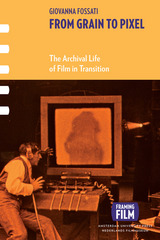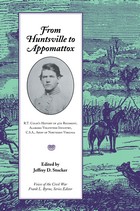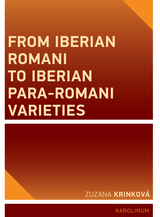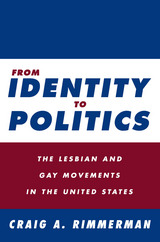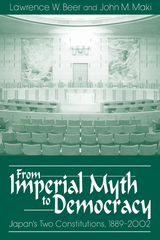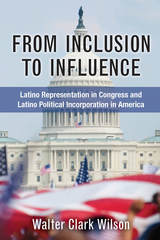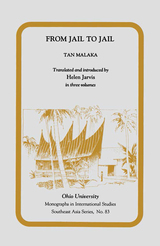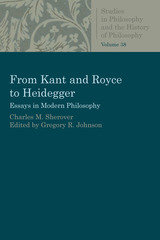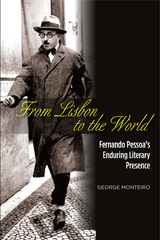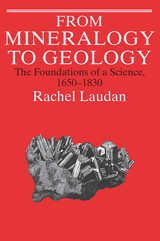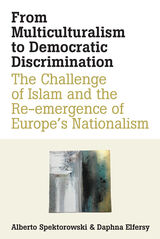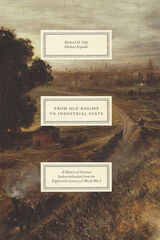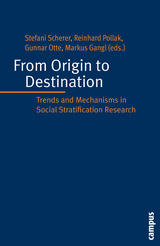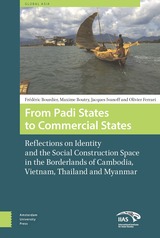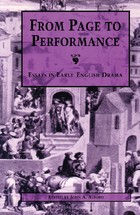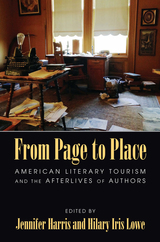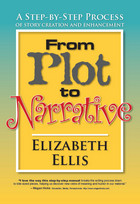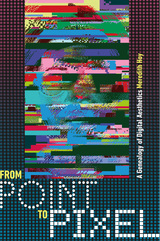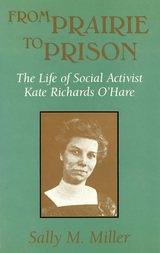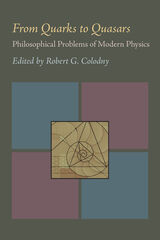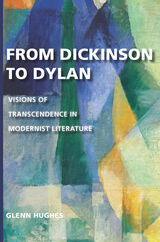 From Dickinson to Dylan: Visions of Transcendence in Modernist Literature
Glenn Hughes
University of Missouri Press, 2020 Glenn Hughes examines the ways in which six literary modernists—Emily Dickinson, Marcel Proust, T. S. Eliot, Ezra Pound, Samuel Beckett, and Bob Dylan—have explored the human relationship to a transcendent mystery of meaning. Hughes argues that visions of transcendence are, perhaps surprisingly, a significant feature in modernist literature, and that these authors’ works account for many of the options for interpreting what transcendent reality might be.
This work is unique in its extended focus, in a comparative study spanning a century, on the persistence and centrality in modernist literature of the struggle to understand and articulate the dependence of human meaning on the mystery of transcendent meaning. Hughes shows us that each of these authors is a mystic in his or her way, and that none are tempted by the modern inclination to suppose that meaning originates with human beings. Together, they address one of the most difficult and important challenges of modern literature: how to be a mystic in modernity.
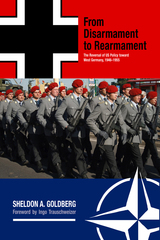 From Disarmament to Rearmament: The Reversal of US Policy toward West Germany, 1946–1955
Sheldon A. Goldberg
Ohio University Press, 2017 At the end of World War II, the Allies were unanimous in their determination to disarm the former aggressor Germany. As the Cold War intensified, however, the decision whether to reverse that policy and to rearm West Germany as a bulwark against the Soviet threat led to disagreements both within the US government and among members of the nascent NATO alliance. The US military took the practical view that a substantial number of German troops would be required to deter any potential Soviet assault. The State Department, on the other hand, initially advocated an alternative strategy of strengthening European institutions but eventually came around to the military’s position that an armed West Germany was preferable to a weak state on the dividing line between the Western democracies and the Soviet satellite states. Sheldon A. Goldberg traces the military, diplomatic, and political threads of postwar policy toward West Germany and provides insights into the inner workings of alliance building and the roles of bureaucrats and military officers as well as those of diplomats and statesmen. He draws on previously unexamined primary sources to construct a cogent account of the political and diplomatic negotiations that led to West Germany’s accession to NATO and the shaping of European order for the next forty years.
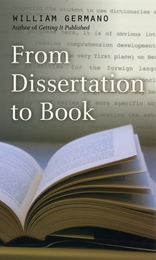 From Dissertation to Book
William Germano
University of Chicago Press, 2005 All new Phd's hope that their dissertations can become books. But a dissertation is written for a committee and a book for the larger world. William Germano's From Dissertation to Book is the essential guide for academic writers who want to revise a doctoral thesis for publication. The author of Getting It Published, Germano draws upon his extensive experience in academic publishing to provide writers with a state-of-the-art view of how to turn a dissertation into a manuscript that publishers will notice.
Acknowledging first that not all theses can become books, Germano shows how some dissertations might have a better life as one or more journal articles or as chapters in a newly conceived book. But even dissertations strong enough to be published as books first need to become book manuscripts, and at the heart of From Dissertation to Book is the idea that revising the dissertation is a fundamental process of adapting from one genre of writing to another.
Germano offers clear guidance on how to do just this. Writers will find advice on such topics as rethinking the table of contents, taming runaway footnotes, shaping chapter length, and confronting the limitations of jargon, alongside helpful timetables for light or heavy revision. With crisp directives, engaging examples, and a sympathetic eye for the foibles of academic writing, From Dissertation to Book reveals to recent PhD's the process of careful and thoughtful revision—a truly invaluable skill as they grow into their new roles as professional writers.
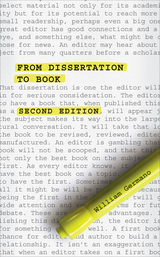 From Dissertation to Book, Second Edition
William Germano
University of Chicago Press, 2013 When a dissertation crosses my desk, I usually want to grab it by its metaphorical lapels and give it a good shake. “You know something!” I would say if it could hear me. “Now tell it to us in language we can understand!”
Since its publication in 2005, From Dissertation to Book has helped thousands of young academic authors get their books beyond the thesis committee and into the hands of interested publishers and general readers. Now revised and updated to reflect the evolution of scholarly publishing, this edition includes a new chapter arguing that the future of academic writing is in the hands of young scholars who must create work that meets the broader expectations of readers rather than the narrow requirements of academic committees.
At the heart of From Dissertation to Book is the idea that revising the dissertation is fundamentally a process of shifting its focus from the concerns of a narrow audience—a committee or advisors—to those of a broader scholarly audience that wants writing to be both informative and engaging. William Germano offers clear guidance on how to do this, with advice on such topics as rethinking the table of contents, taming runaway footnotes, shaping chapter length, and confronting the limitations of jargon, alongside helpful timetables for light or heavy revision.
Germano draws on his years of experience in both academia and publishing to show writers how to turn a dissertation into a book that an audience will actually enjoy, whether reading on a page or a screen. Germano also acknowledges that not all dissertations can or even should become books and explores other, often overlooked, options, such as turning them into journal articles or chapters in an edited work.
With clear directions, engaging examples, and an eye for the idiosyncrasies of academic writing, From Dissertation to Book reveals to recent PhDs the secrets of careful and thoughtful revision—a skill that will be truly invaluable as they add “author” to their curriculum vitae.
 From Dixie to Rocky Top: Music and Meaning in Southeastern Conference Football
Carrie Tipton
Vanderbilt University Press, 2023 Listen as you read! From Dixie to Rocky Top: Book Playlist, now on Spotify. The first book to explore the history of college fight songs as a culturally important phenomenon, From Dixie to Rocky Top zeroes in on the US South, where college football has forged a powerful, quasi-religious sense of meaning and identity throughout the region. Tracing the story of Southeastern Conference (SEC) fight songs from the late nineteenth to the early twenty-first century, author Carrie Tipton places this popular repertory within the broader commercial music industry and uses fight songs to explore themes of authorship and copyright; the commodification of school spirit; and the construction of race, gender, and regional identity in Southern football culture. This book unearths the history embedded in SEC football’s music traditions, drawing from the archives of the seventeen universities currently or formerly in the conference. Alongside rich primary sources, Tipton incorporates approaches and literature from sports history, Southern and American history, Southern and American studies, and musicology. Chronicling iconic Southern fight songs’ origins, dissemination, meanings, and cultural reception over a turbulent century, From Dixie to Rocky Top weaves a compelling narrative around a virtually unstudied body of popular music.
 From Doctor to Healer: The Transformative Journey
St. John, Gloria
Rutgers University Press, 1998 Why would a successful physician who has undergone seven years of rigorous medical training take the trouble to seek out and learn to practice alternative methods of healing such as homeopathy and Chinese medicine? From Doctor to Healer answers this question as it traces the transformational journeys of physicians who move across the philosophical spectrum of American medicine from doctor to healer. Robbie Davis-Floyd and Gloria St. John conducted extensive interviews to discover how and why physicians make the move to alternative medicine, what sparks this shift, and what beliefs they abandon or embrace in the process. After outlining the basic models of American health care-the technocratic, humanistic, and holistic-the authors follow the thoughts and experiences of forty physicians as they expand their horizons in order to offer effective patient care. The book focuses on the radical shift from one end of the spectrum to the other-from the technocratic approach to holism-made by most of the interviewees. Because many American physicians find such a drastic change too threatening, the authors also address the less radical transition to humanism-a movement toward compassionate care arising from within the medical system.
 From Domestic Women to Sensitive Young Men: Translating the Individual in Early Colonial Korea
Yoon Sun Yang
Harvard University Press, 2017 The notion of the individual was initially translated into Korean near the end of the nineteenth century and took root during the early years of Japanese colonial influence. Yoon Sun Yang argues that the first literary iterations of the Korean individual were prototypically female figures appearing in the early colonial domestic novel—a genre developed by reform-minded male writers—as schoolgirls, housewives, female ghosts, femmes fatales, and female same-sex partners. Such female figures have long been viewed as lacking in modernity because, unlike numerous male characters in Korean literature after the late 1910s, they did not assert their own modernity, or that of the nation, by exploring their interiority. Yang, however, shows that no reading of Korean modernity can ignore these figures, because the early colonial domestic novel cast them as individuals in terms of their usefulness or relevance to the nation, whether model citizens or iconoclasts.
By including these earlier narratives within modern Korean literary history and positing that they too were engaged in the translation of individuality into Korean, Yang’s study not only disrupts the canonical account of a non-gendered, linear progress toward modern Korean selfhood but also expands our understanding of the role played by translation in Korea’s construction of modern gender roles.
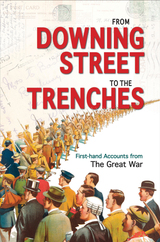 From Downing Street to the Trenches: First-hand Accounts from the Great War, 1914-1916
Mike Webb
Bodleian Library Publishing, 2014 As we look back on World War I on the occasion of its hundredth anniversary, we do so with the benefit of hindsight and the accumulated wisdom of a century of writing and thought. But what was it like to experience firsthand those first few years of war—to see an aerial view of the famous Battle of the Somme? How did key political figures make the difficult decision to go to war? And what did young men of the time believe their role ought to be?
From Downing Street to the Trenches gathers eyewitness accounts and photographs that vividly convey this lived experience. The letters of Prime Minister H. H. Asquith show the strain of wartime leadership and shed light on his later downfall, while letters home from the young Harold Macmillan are suffused with his experiences in the trenches and mark the beginning of his road to Downing Street. Although it was forbidden to record cabinet discussions, Secretary of State Lewis Harcourt’s unauthorized diary provides a window into the government of the time, complete with character sketches of some of the leading figures, including Winston Churchill. In addition to political figures, the book draws on many local records, including the diary of an Essex rector, written to record the impact of the war on his community and parish.
Filled with fear and sorrow but also suffused with hope for the future, the accounts collected here paint a highly personal and immediate picture of the war as it was happening to real people of the time.
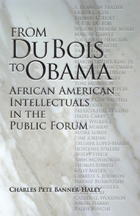 From Du Bois to Obama: African American Intellectuals in the Public Forum
Charles Pete Banner-Haley
Southern Illinois University Press, 2014 In his groundbreaking new book Charles Pete Banner-Haley explores the history of African American intellectualism and reveals the efforts of black intellectuals in the ongoing struggle against racism, showing how they have responded to Jim Crow segregation, violence against black Americans, and the more subtle racism of the postintegration age. Banner-Haley asserts that African American intellectuals—including academicians, social critics, activists, and writers—serve to generate debate, policy, and change, acting as a moral force to persuade Americans to acknowledge their history of slavery and racism, become more inclusive and accepting of humanity, and take responsibility for social justice.
Other topics addressed in this insightful study include the disconnection over time between black intellectuals and the masses for which they speak; the ways African American intellectuals identify themselves in relation to the larger black community, America as a whole, and the rest of the world; how black intellectuals have gained legitimacy in American society and have accrued moral capital, especially in the area of civil rights; and how that moral capital has been expended. Among the influential figures covered in the book are W. E. B. Du Bois, Ralph Ellison, Richard Wright, James Weldon Johnson, E. Franklin Frazier, Ralph Bunche, Oliver C. Cox, George S. Schuyler, Zora Neale Hurston, Martin Luther King, Jr., Jesse Jackson, Cornel West, Toni Morrison, bell hooks, Charles Johnson, and Barack Obama.
African American intellectuals, as Banner-Haley makes clear, run the political gamut from liberal to conservative. He discusses the emergence of black conservatism, with its accompanying questions about affirmative action, government intervention on behalf of African Americans, and the notion of a color-blind society. He also looks at how popular music—particularly rap and hip-hop—television, movies, cartoons, and other media have functioned as arenas for investigating questions of identity, exploring whether African American intellectuals can also be authentically black.
A concluding discussion of the so-called browning of America, and the subsequent rise in visibility and influence of black intellectuals culminates with the historic election of President Barack Obama, an African American intellectual who has made significant contributions to American society through his books, articles, and speeches. Banner-Haley ponders what Obama’s election will mean for the future of race relations and black intellectualism in America.
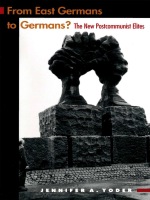 From East Germans to Germans?: The New Postcommunist Elites
Jennifer A. Yoder
Duke University Press, 1999 In 1990 Germany launched an experiment to transplant democracy into a formerly communist country, effectively dismantling the system of the German Democratic Republic and rebuilding it in the likeness of the democratic Federal Republic of Germany. From East Germans to Germans? examines the role of the first generation of democratically elected political elites in the former GDR’s transition to democracy.
Although the quick transplant of a ready-made democratic system supported by West German financial backing and expertise provided benefits, problems arose for the development of postcommunist political leadership and for the growth of mass support for the democratic system. Jennifer A. Yoder analyzes the implications of the transition process for democratic legitimation and integration. Based on field research in East Germany that included interviews with parliamentarians, her study addresses issues such as culture, identity, and the lack of continuity between the old and new political elites. Although the availability of West German role models, together with pressure to conform, allowed the process of decommunization to occur much faster than elsewhere in Eastern Europe, the cultural differences between east and west are more extensive and complex than previously assumed. Unification has also been followed by a reinvigoration of regional interests. Yoder shows how some political elites have adopted western German patterns, while others openly criticize many of the practices and policies originating in Bonn and present themselves as democratic alternatives and advocates for East German interests in the new Germany. Indeed, for many East Germans, these new regional elites are regarded as the only representatives of their interests in the western-dominated political system.
Providing insight into elite-building at a time of transition and a valuable alternative to the “institutions versus culture” debate found in traditional analyses of political change, this book will interest political scientists and students and scholars of European politics and German studies.
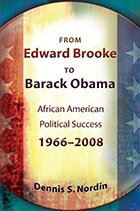 From Edward Brooke to Barack Obama: African American Political Success, 1966-2008
Dennis S. Nordin
University of Missouri Press, 2012 In 2008, American history was forever changed with the election of Barack Obama, the United States’ first African American president. However, Obama was far from the first African American to run for a public office or to face the complexities of race in a political campaign. For over a century, offices ranging from city mayor to state senator have been filled by African Americans, making race a factor in many elections.
In From Edward Brooke to Barack Obama, Dennis S. Nordin navigates the history of biracial elections by examining the experiences of a variety of African American politicians from across the country, revealing how voters, both black and white, respond to the issue of race in an election. The idea to compare the African American political experience across several levels of office first occurred to Nordin as he was researching Arthur W. Mitchell’s 1934 congressional campaign. The question of white voter support was of particular significance, as was whether the continuation of that support depended upon his avoiding minority issues in office. To begin answering these questions and others, Nordin compares the experiences of eleven African American politicians. Taken from across the country to ensure a wide sample and accurate depiction of the subject, the case studies examined include Tom Bradley, mayor of Los Angeles; David Dinkins, mayor of New York; Freeman Bosley Jr., mayor of St. Louis; Senator Edward Brooke of Massachusetts; Senator Carol Moseley-Braun of Illinois; Governor L. Douglas Wilder of Virginia; and Representative J. C. Watts Jr. of Oklahoma, among others. As Nordin analyzes these individuals and their contribution to the whole, he concludes that biracial elections in the United States have yet to progress beyond race.
From Edward Brooke to Barack Obama investigates the implications of race in politics, a highly relevant topic in today’s American society. It offers readers a chronological overview of the progress made over the last several decades as well as shows where there is room for growth in the political arena. By taking a pertinent topic for the era and placing it in the context of history, Nordin successfully chronicles the roles of race and race relations in American politics.
 From Egypt to Babylon: The International Age 1550–500 BC
Paul Collins
Harvard University Press, 2008 For those who believe that globalization is a purely modern phenomenon, this book holds a startling and absorbing lesson. From Egypt to Babylon immerses readers in a world of exotic empires and states as they waxed and waned and interacted in a period of extraordinary internationalism—all before the rise of the Persian Empire.
The ancient Egyptians, Minoans, Mycenaeans, Hittites, Canaanites, Hurrians, Aramaeans, Israelites, Urartians, Mannaeans, Assyrians, Phrygians, Kassites, Chaldaeans, Elamites, Scythians, Medes, and Persians: these are the societies who for a millennia peopled the world from the Aegean and Egypt in the west to what we know now as Iraq and Iran in the east. In a concise introduction, illustrated with objects drawn largely from the collections of the British Museum, this book takes the reader through the vast and varied landscape of this period, where a far-flung world was linked by military expansion, diplomatic relations, and movement of goods and peoples that brought about profound cultural exchanges and technological and social revolutions. The story brings the reader from the foundations of the Egyptian empire through the turmoil at the end of the second millennium bce to the unprecedented political unification of the whole region by kings of Persia.
From Egypt to Babylon weaves together the political histories of the region’s diverse societies for the first time, tracing shifting fortunes and burgeoning colonies, trading connections and cultural pressures in what was truly the world’s first international age.
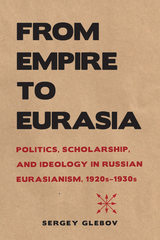 From Empire to Eurasia: Politics, Scholarship, and Ideology in Russian Eurasianism, 1920s–1930s
Sergey Glebov
Northern Illinois University Press, 2017 The Eurasianist movement was launched in the 1920s by a group of young Russian émigrés who had recently emerged from years of fighting and destruction. Drawing on the cultural fermentation of Russian modernism in the arts and literature, as well as in politics and scholarship, the movement sought to reimagine the former imperial space in the wake of Europe’s Great War. The Eurasianists argued that as an heir to the nomadic empires of the steppes, Russia should follow a non-European path of development.
In the context of rising Nazi and Soviet powers, the Eurasianists rejected liberal democracy and sought alternatives to Communism and capitalism. Deeply connected to the Russian cultural and scholarly milieus, Eurasianism played a role in the articulation of the structuralist paradigm in interwar Europe. However, the movement was not as homogenous as its name may suggest. Its founders disagreed on a range of issues and argued bitterly about what weight should be accorded to one or another idea in their overall conception of Eurasia.
In this first English language history of the Eurasianist movement based on extensive archival research, Sergey Glebov offers a historically grounded critique of the concept of Eurasia by interrogating the context in which it was first used to describe the former Russian Empire. This definitive study will appeal to students and scholars of Russian and European history and culture.
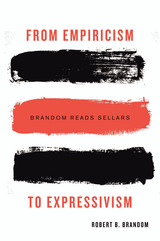 From Empiricism to Expressivism: Brandom Reads Sellars
Robert B. Brandom
Harvard University Press, 2014 The American philosopher Wilfrid Sellars ranks as one of the leading twentieth-century critics of empiricism—a philosophical approach to knowledge that seeks to ground it in human sense experience. Sellars stood in the forefront of a recoil within analytic philosophy from the foundationalist assumptions of contemporary empiricists. From Empiricism to Expressivism is a far-reaching reinterpretation of Sellars from one of the philosopher’s most brilliant intellectual heirs.
Unifying and extending Sellars’s most important ideas, Robert Brandom constructs a theory of pragmatic expressivism which, in contrast to empiricism, understands meaning and knowledge in terms of the role expressions play in social practices. The key lies in Sellars’s radical reworking of Kant’s idea of the categories: the idea that the expressive job characteristic of many of the most important philosophical concepts is not to describe or explain the empirical world but rather to make explicit essential features of the conceptual framework that makes description and explanation possible.
Brandom reconciles otherwise disparate elements of Sellars’s system, revealing a greater level of coherence and consistency in the philosopher’s arguments against empiricism than has usually been acknowledged. From Empiricism to Expressivism clarifies what Sellars had in mind when he talked about moving analytic philosophy from its Humean to its Kantian phase, and why such a move might be of crucial importance today.
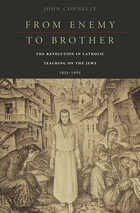 From Enemy to Brother: The Revolution in Catholic Teaching on the Jews, 1933–1965
John Connelly
Harvard University Press, 2012 In 1965 the Second Vatican Council declared that God loves the Jews. Before that, the Church had taught for centuries that Jews were cursed by God and, in the 1940s, mostly kept silent as Jews were slaughtered by the Nazis. How did an institution whose wisdom is said to be unchanging undertake one of the most enormous, yet undiscussed, ideological swings in modern history?
The radical shift of Vatican II grew out of a buried history, a theological struggle in Central Europe in the years just before the Holocaust, when a small group of Catholic converts (especially former Jew Johannes Oesterreicher and former Protestant Karl Thieme) fought to keep Nazi racism from entering their newfound church. Through decades of engagement, extending from debates in academic journals, to popular education, to lobbying in the corridors of the Vatican, this unlikely duo overcame the most problematic aspect of Catholic history. Their success came not through appeals to morality but rather from a rediscovery of neglected portions of scripture.
From Enemy to Brother illuminates the baffling silence of the Catholic Church during the Holocaust, showing how the ancient teaching of deicide—according to which the Jews were condemned to suffer until they turned to Christ—constituted the Church’s only language to talk about the Jews. As he explores the process of theological change, John Connelly moves from the speechless Vatican to those Catholics who endeavored to find a new language to speak to the Jews on the eve of, and in the shadow of, the Holocaust.
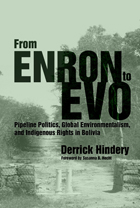 From Enron to Evo: Pipeline Politics, Global Environmentalism, and Indigenous Rights in Bolivia
Derrick Hindery; Foreword by Susanna B. Hecht
University of Arizona Press, 2013 Throughout the Americas, a boom in oil, gas, and mining development has pushed the extractive frontier deeper into Indigenous territories. Centering on a long-term study of Enron and Shell’s Cuiabá pipeline, From Enron to Evo traces the struggles of Bolivia’s Indigenous peoples for self-determination over their lives and territories. In his analysis of their response to this encroaching development, author Derrick Hindery also sheds light on surprising similarities between neoliberal reform and the policies of the nation’s first Indigenous president, Evo Morales.
Drawing upon extensive interviews and document analysis, Hindery argues that many of the structural conditions created by neoliberal policies—including partial privatization of the oil and gas sector—still persist under Morales. Tactics employed by both Morales and his neoliberal predecessors utilize the rhetoric of environmental protection and Indigenous rights to justify oil, gas, mining, and road development in Indigenous territories and sensitive ecoregions.
Indigenous peoples, while mindful of gains made during Morales’s tenure, are increasingly dissatisfied with the administration’s development model, particularly when it infringes upon their right to self-determination. From Enron to Evo demonstrates their dynamic and pragmatic strategies to cope with development and adversity, while also advancing their own aims.
Offering a critique of both free-market piracy and the dilemmas of resource nationalism, this is a groundbreaking book for scholars, policy-makers, and advocates concerned with Indigenous politics, social movements, environmental justice, and resistance in an era of expanding resource development.
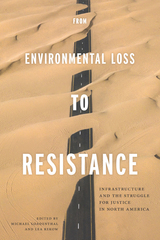 From Environmental Loss to Resistance: Infrastructure and the Struggle for Justice in North America
Michael Loadenthal
University of Massachusetts Press, 2020 North Americans have reached a socioenvironmental tipping point where social transformation has become necessary to secure a stable and desirable future. As hurricanes destroy coastal areas that once hosted schools and homes, petroleum refineries choke nearby communities and their parks, and pipeline construction threatens water rights for indigenous peoples, communities are left to determine how to best manage and mitigate environmental loss.
In this new collection, a range of contributors—among them researchers, practitioners, organizers, and activists—explore the ways in which people counter or cope with feelings of despair, leverage action for positive change, and formulate pathways to achieve environmental justice goals. These essays pay particular attention to issues of race, class, economic liberalization, and geography; place contemporary environmental struggles in a critical context that emphasizes justice, connection, and reconciliation; and raise important questions about the challenges and responses that concern those pursuing environmental justice.
Contributors include the volume editors, Carol J. Adams, Randall Amster, Jan Inglis, Eileen Delehanty Pearkes, Zoë Roller, and Michael Truscello.
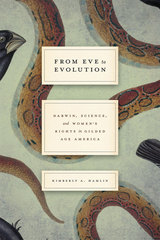 From Eve to Evolution: Darwin, Science, and Women's Rights in Gilded Age America
Kimberly A. Hamlin
University of Chicago Press, 2014 From Eve to Evolution provides the first full-length study of American women’s responses to evolutionary theory and illuminates the role science played in the nineteenth-century women’s rights movement. Kimberly A. Hamlin reveals how a number of nineteenth-century women, raised on the idea that Eve’s sin forever fixed women’s subordinate status, embraced Darwinian evolution—especially sexual selection theory as explained in The Descent of Man—as an alternative to the creation story in Genesis.
Hamlin chronicles the lives and writings of the women who combined their enthusiasm for evolutionary science with their commitment to women’s rights, including Antoinette Brown Blackwell, Eliza Burt Gamble, Helen Hamilton Gardener, Charlotte Perkins Gilman, and Elizabeth Cady Stanton. These Darwinian feminists believed evolutionary science proved that women were not inferior to men, that it was natural for mothers to work outside the home, and that women should control reproduction. The practical applications of this evolutionary feminism came to fruition, Hamlin shows, in the early thinking and writing of the American birth control pioneer Margaret Sanger.
Much scholarship has been dedicated to analyzing what Darwin and other male evolutionists had to say about women, but very little has been written regarding what women themselves had to say about evolution. From Eve to Evolution adds much-needed female voices to the vast literature on Darwin in America.
From Eves Rib
Gioconda Belli
Northwestern University Press, 1995 Gioconda Belli's poetry, widely published and revered in Latin America and Europe, celebrates the longing for a society in which humanity constructs its future, animated by an inextinguishable erotic, maternal, and transcentendly loving desire. As Salman Rushdie wrote in his book, The Jaguar Smile: A Nicaraguan Journey, her poetry is "a kind of public love poetry that comes closer to expressing the passion of Nicaragua than anything I [have] yet heard."
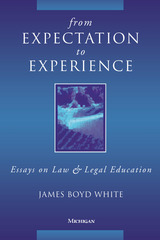 From Expectation to Experience: Essays on Law and Legal Education
James Boyd White
University of Michigan Press, 2000 In this collection of essays, James Boyd White continues his work in the rhetorical and literary analysis of law, seeing it as a system for the creation of social meaning. White's focus is on the intellectual and ethical possibilities of law, based on the view that law is not merely a logical enterprise, nor a mere matter of politics and power, but rather an activity of the whole mind, including its imaginative and affective capacities.
The essays here are united by two basic themes. First, the essays suggest that law can usefully be regarded not only as a set of rules designed to produce results in the material world, as it usually is regarded, but also as an imaginative and intellectual activity that has as its end the claim of meaning for human experience, both individual and collective. Second, they argue that education, including in the law, works by the constant modification of expectation by experience.
White claims that as we grow, whether as individuals or as a community, we constantly shape our expectations to our experiences. This happens with particular force and clarity in the law, which seeks to create both a certain set of expectations--this is how it works as a system of regulation--and a series of occasions and methods for their revision. White's interest is in the way these understandings can affect legal teaching, practice, and criticism.
The essays in this book examine such topics as the nature of legal education; the possibilities for writing in the law for both judges and lawyers; the relation between the practice of making and claiming meaning as it works in the law and in literatures more usually though of as imaginative, such as poetry or drama; the ways in which the law talks, and ought to talk, about business corporations, religion, and individual judgments; and the ethical possibilities of the practice of law when it is conceived of as a field for the making of meaning.
From Expectation to Experience will be of interest to lawyers, legal scholars, as well as students of law, law and literature, and ethics and literature.
James Boyd White is Hart Wright Professor of Law, Professor of English, and Adjunct Professor of Classical Studies, University of Michigan.
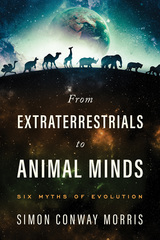 From Extraterrestrials to Animal Minds: Six Myths of Evolution
Morris, Simon Conway
Templeton Press, 2022 In this learned romp of science writing, Cambridge professor Simon Conway Morris cheerfully challenges six assumptions—what he calls ‘myths’—that too often pass as unquestioned truths amongst the evolutionary orthodox.
His convivial tour begins with the idea that evolution is boundless in the kinds of biological systems it can produce. Not true, he says. The process is highly circumscribed and delimited. Nor is it random. This popular notion holds that evolution proceeds blindly, with no endgame. But Conway Morris suggests otherwise, pointing to evidence that the processes of evolution are “seeded with inevitabilities.”
If that is so, then what about mass extinctions? Don’t they steer the development of life in radically new directions? Rather the reverse, claims Conway Morris. Such cataclysms accelerate evolutionary developments that were going to happen anyway. And what about that other evolutionary canard: the “missing link”? There is plenty to choose from in the fossil record, but persistently overlooked is that in any group, there is not one but a phalanx of “missing links.” Once again, we under-score the near-inevitability of evolutionary outcomes.
Turning from fossils to minds, Conway Morris critically examines the popular tenet that the intelligence of humans and animals are the same thing, a difference of degree, not kind. A closer scrutiny of our minds shows that, in reality, an unbridgeable gulf separates us from even the chimpanzees, so begging questions of consciousness and Mind.
Finally, Conway Morris tackles the question of extraterrestrials. Undoubtedly, the size and scale of the universe suggest that alien life must exist somewhere beyond Earth and our tiny siloed solar system? After all, evolutionary convergence more than hints that human-like forms are universal. But Dr. Conway Morris has serious doubts. The famous Fermi Paradox (“Where are they?”) appears to hold: Alone in the cosmos—and unique, but not quite in the way one might expect.
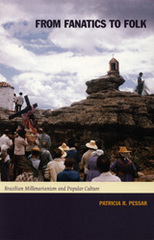 From Fanatics to Folk: Brazilian Millenarianism and Popular Culture
Patricia R. Pessar
Duke University Press, 2004 From Fanatics to Folk rejects conventional understandings of Brazilian millenarianism as exceptional and self-defeating. Considering millenarianism over the long sweep of Brazilian history, Patricia R. Pessar shows it to have been both dominant discourse and popular culture—at different times the inspiration for colonial conquest, for backlanders’ resistance to a modernizing church and state, and for the nostalgic appropriation by today’s elites in pursuit of “traditional” folklore and “authentic” expressions of faith. Pessar focuses on Santa Brígida, a Northeast Brazilian millenarian movement begun in the 1930s. She examines the movement from its founding by Pedro Batista—initially disparaged as a charlatan by the backland elite and later celebrated as a modernizer, patriot, and benefactor—through the contemporary struggles of its followers to maintain their transgressive religious beliefs in the face of increased attention from politicians, clergy, journalists, filmmakers, researchers, and museum curators. Pessar combines cultural history spanning the colonial period to the present; comparative case studies of the Canudos, Contestado, Juazeiro, and Santa Brígida movements; and three decades of ethnographic research in the Brazilian Northeast. Highlighting the involvement of a broad range of individuals and institutions, the cross-fertilization between movements, contestation and accommodation vis-à-vis the church and state, and matters of spirituality and faith, From Fanatics to Folk reveals Brazilian millenarianism as long-enduring and constantly in flux.
From Fear to Fraternity: A Russian Tale of Crime, Economy and Modernity
Patricia Rawlinson
Pluto Press, 2010 The end of communism marked the re-emergence of a huge rise in organised crime across Russia and Eastern Europe. High-profile efforts to combat it have met with little success.
Patricia Rawlinson argues that burgeoning crime rates result not only from the failures of communism but also from the problems of free market economies.
Drawing on interviews with members of the Russian criminal underworld, the business community, journalists and the militia, she argues that organised crime provides us with a barometer of economic well-being, not just for Russia but for any market economy.
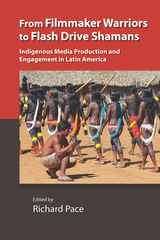 From Filmmaker Warriors to Flash Drive Shamans: Indigenous Media Production and Engagement in Latin America
Richard Pace
Vanderbilt University Press, 2018 From Filmmaker Warriors to Flash Drive Shamans broadens the base of research on Indigenous media in Latin America through thirteen chapters that explore groups such as the Kayapó of Brazil, the Mapuche of Chile, the Kichwa of Ecuador, and the Ayuuk of Mexico, among others, as they engage video, DVDs, photography, television, radio, and the internet.
The authors cover a range of topics such as the prospects of collaborative film production, the complications of archiving materials, and the contrasting meanings of and even conflict over "embedded aesthetics" in media production—i.e., how media reflects in some fashion the ownership, authorship, and/or cultural sensibilities of its community of origin. Other topics include active audiences engaging television programming in unanticipated ways, philosophical ruminations about the voices of the dead captured on digital recorders, the innovative uses of digital platforms on the internet to connect across generations and even across cultures, and the overall challenges to obtaining media sovereignty in all manner of media production.
The book opens with contributions from the founders of Indigenous Media Studies, with an overview of global Indigenous media by Faye Ginsburg and an interview with Terence Turner that took place shortly before his death.
 From Foot Soldier to Finance Minister: Takahashi Korekiyo, Japan’s Keynes
Richard J. Smethurst
Harvard University Press, 2007 From his birth in the lowest stratum of the samurai class to his assassination at the hands of right-wing militarists, Takahashi Korekiyo (1854-1936) lived through tumultuous times that shaped the course of modern Japanese history. Takahashi is considered "Japan's Keynes" in many circles because of the forward-thinking (and controversial) fiscal and monetary policies--including deficit financing, currency devaluation, and lower interest rates--that he implemented to help Japan rebound from the Great Depression and move toward a modern economy.
Richard J. Smethurst's engaging biography underscores the profound influence of the seven-time finance minister on the political and economic development of Japan by casting new light on Takahashi's unusual background, unique talents, and singular experiences as a charismatic and cosmopolitan financial statesman.
Along with the many fascinating personal episodes--such as working as a houseboy in California and running a silver mine in the Andes--that molded Takahashi and his thinking, the book also highlights four major aspects of Takahashi's life: his unorthodox self-education, his two decades of service at the highest levels of government, his pathbreaking economic and political policies before and during the Depression, and his efforts to stem the rising tide of militarism in the 1930s. Deftly weaving together archival sources, personal correspondence, and historical analysis, Smethurst's study paints an intimate portrait of a key figure in the history of modern Japan.
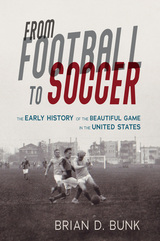 From Football to Soccer: The Early History of the Beautiful Game in the United States
Brian D. Bunk
University of Illinois Press, 2021 Rediscovering soccer's long history in the U.S. Across North America, native peoples and colonists alike played a variety of kicking games long before soccer's emergence in the late 1800s. Brian D. Bunk examines the development and social impact of these sports through the rise of professional soccer after World War I. As he shows, the various games called football gave women an outlet as athletes and encouraged men to form social bonds based on educational experience, occupation, ethnic identity, or military service. Football also followed young people to college as higher education expanded in the nineteenth century. University play, along with the arrival of immigrants from the British Isles, helped spark the creation of organized soccer in the United States—and the beautiful game's transformation into a truly international sport. A multilayered look at one game’s place in American life, From Football to Soccer refutes the notion of the U.S. as a land outside of football history.
 From Forest to Steppe: The Russian Art of Building in Wood
William Craft Brumfield
Duke University Press, 2025 Throughout Russian history, local craftsmen have shown remarkable skill in fashioning wood into items of daily use, from bridges and street paving to carts and boats to household utensils and combs. Russia has the largest forested zone on the planet, so its architecture was also traditionally made from timber. From homes to churches to forts, Russian buildings are almost all, underneath, constructed with logs, often covered by plank siding or by lathing and plaster.
In From Forest to Steppe, renowned scholar and photographer William Craft Brumfield offers a panoramic survey of Russia’s centuries-long heritage of wooden architecture. Lavishly illustrated with more than 400 color photographs, the volume links log-built barns, windmills, houses, and churches in the Far North; Buddhist shrines in the Transbaikal region; and eighteenth-century palaces on the outskirts of Moscow. Brumfield also takes readers to the estate houses of many Russian literary giants, from Chekhov and Tolstoy to Dostoevsky and Pushkin. Spanning thousands of photographed sites, five decades of field work, and seven time zones, Brumfield’s photographs offer compelling evidence of the adaptability of log construction and its ability to transcend class, cultural, and aesthetic boundaries.
In the decades since Brumfield began photographing Russian architecture, many of the buildings he has documented have been demolished or abandoned and left to rot at alarming rates. Brumfield observes a contradiction in contemporary Russia: It acknowledges the cultural importance of wooden buildings yet struggles to find and dedicate the resources and solutions needed to save them. A hymn and elegy to the long Russian practice of building with wood, From Forest to Steppe is an unparalleled look into one of the world’s most singular architectural traditions.
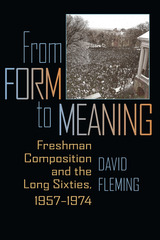 From Form to Meaning: Freshman Composition and the Long Sixties, 1957–1974
David Fleming
University of Pittsburgh Press, 2011
In the spring of 1968, the English faculty at the University of Wisconsin-Madison (UW) voted to remedialize the first semester of its required freshman composition course, English 101. The following year, it eliminated outright the second semester course, English 102. For the next quarter-century, UW had no real campus-wide writing requirement, putting it out of step with its peer institutions and preventing it from fully joining the “composition revolution” of the 1970s. In From Form to Meaning, David Fleming chronicles these events, situating them against the backdrop of late 1960s student radicalism and within the wider changes taking place in U.S. higher education at the time.
Fleming begins with the founding of UW in 1848. He examines the rhetorical education provided in the university’s first half-century, the birth of a required, two semester composition course in 1898, faculty experimentation with that course in the 1920s and 1930s, and the rise of a massive “current-traditional” writing program, staffed primarily by graduate teaching assistants (TAs), after World War II. He then reveals how, starting around 1965, tensions between faculty and TAs concerning English 101-102 began to mount. By 1969, as the TAs were trying to take over the committee that supervised the course, the English faculty simply abandoned its long-standing commitment to freshman writing.
In telling the story of composition’s demise at UW, Fleming shows how contributing factors—the growing reliance on TAs; the questioning of traditional curricula by young instructors and their students; the disinterest of faculty in teaching and administering general education courses—were part of a larger shift affecting universities nationally. He also connects the events of this period to the long, embattled history of freshman composition in the United States. And he offers his own thoughts on the qualities of the course that have allowed it to survive and regenerate for over 125 years.
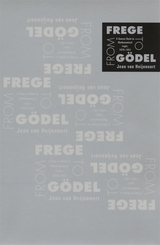 From Frege to Gödel: A Source Book in Mathematical Logic, 1879–1931
Jean van Heijenoort
Harvard University Press, 1967 The fundamental texts of the great classical period in modern logic, some of them never before available in English translation, are here gathered together for the first time. Modern logic, heralded by Leibniz, may be said to have been initiated by Boole, De Morgan, and Jevons, but it was the publication in 1879 of Gottlob Frege’s Begriffsschrift that opened a great epoch in the history of logic by presenting, in full-fledged form, the propositional calculus and quantification theory.
Frege’s book, translated in its entirety, begins the present volume. The emergence of two new fields, set theory and foundations of mathematics, on the borders of logic, mathematics, and philosophy, is depicted by the texts that follow. Peano and Dedekind illustrate the trend that led to Principia Mathematica. Burali-Forti, Cantor, Russell, Richard, and König mark the appearance of the modern paradoxes. Hilbert, Russell, and Zermelo show various ways of overcoming these paradoxes and initiate, respectively, proof theory, the theory of types, and axiomatic set theory. Skolem generalizes Löwenheim’s theorem, and he and Fraenkel amend Zermelo’s axiomatization of set theory, while von Neumann offers a somewhat different system. The controversy between Hubert and Brouwer during the twenties is presented in papers of theirs and in others by Weyl, Bernays, Ackermann, and Kolmogorov. The volume concludes with papers by Herbrand and by Gödel, including the latter’s famous incompleteness paper.
Of the forty-five contributions here collected all but five are presented in extenso. Those not originally written in English have been translated with exemplary care and exactness; the translators are themselves mathematical logicians as well as skilled interpreters of sometimes obscure texts. Each paper is introduced by a note that sets it in perspective, explains its importance, and points out difficulties in interpretation. Editorial comments and footnotes are interpolated where needed, and an extensive bibliography is included.
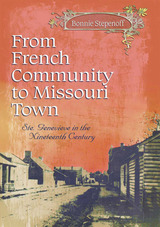 From French Community to Missouri Town: Ste. Genevieve in the Nineteenth Century
Bonnie Stepenoff
University of Missouri Press, 2024 A small French settlement thrived for half a century on the west bank of the Mississippi River before the Louisiana Purchase made it part of the United States in 1803. But for the citizens of Ste. Genevieve, becoming Americans involved more than simply acknowledging a transfer of power. Bonnie Stepenoff has written an engaging history of Missouri’s oldest permanent settlement to explore what it meant to be Americanized in our country’s early years. Picking up where other studies of Ste. Genevieve leave off, she traces the dramatic changes wrought by the transfer of sovereignty to show the process of social and economic transformation on a young nation’s new frontier. Stepenoff tells how French and Spanish residents—later joined by German immigrants and American settlers—made necessary compromises to achieve order and community, forging a democracy that represented different approaches to such matters as education, religion, property laws, and women’s rights. By examining the town’s historical circumstances, its legal institutions, and especially its popular customs, she shows how Ste. Genevieve differed from other towns along the Mississippi. Stepenoff has plumbed the town’s voluminous archives to share previously untold stories of Ste. Genevieve citizens that reflect how Americanization affected their lives. In these pages we meet a free woman of color who sued a prominent white family for support of her children; a slave who obtained her own freedom and then purchased her daughters’ freedom; a local sheriff who joined Aaron Burr’s conspiracy; and a doctor who treated cholera victims and later became a U.S. senator. More than colorful characters, these are real people shown pursuing justice and liberty under a new flag. The story of Ste. Genevieve serves as a testament to Tocqueville’s observations on American democracy while also challenging some of the commonly held beliefs about that institution. From French Community to Missouri Town provides a better understanding not only of how democracy works but also of what it meant to become American when America was still young.
From Freud's Consulting Room: The Unconscious in a Scientific Age
Judith M. Hughes
Harvard University Press, 1994 The science of mind been plagued by intractable philosophical puzzles, chiefamong them the distortions of memory and therelation between mind and body. SigmundFreud's clinical practice forced him to grapplewith these problems, and out of that strugglepsychoanalysis emerged.
From Freud's Consulting Room charts the development of his ideasthrough his clinical work, the successes and failures of his most dramatic and significant case histories, and the creation of a discipline recognizably distinct from its neighbors.
From Frontier to Plantation In Tennessee: A Study in Frontier Democracy
Thomas Perkins Abernethy
University of Alabama Press, 1967 A reprint of Abernethy's excellent historical study of the state of Tennesse from its founding through the antebellum years. In documenting the development of an agrarian society on the frontier, Abernethy develops important and controversial theses on the relation between frontier life and the development of American democracy, calling into question the mythology and motives previously associated with leaders such as William Blount, Andrew Jackson, James K. Polk, and Andrew Johnson.
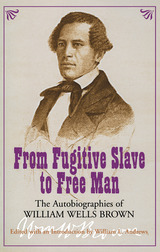 From Fugitive Slave to Free Man: The Autobiographies of William Wells Brown
Edited with an Introduction by William L. Andrews
University of Missouri Press, 2003 Growing up as a slave in an urban area of Missouri allowed William Wells Brown to live a life that was different from that of the plantation slave so often discussed in slave histories. Born in 1814, the son of a white man and a slave woman, Brown spent the first twenty years of his life mainly in St. Louis and the surrounding areas working as a house servant, a field hand, a tavern keeper’s assistant, a printer’s helper, an assistant in a medical office, and a handyman for James Walker, a Missouri slave trader. During his time with Walker, Brown made three trips up and down the Mississippi River. These trips allowed him to encounter slavery from every perspective and provided experiences he would draw on throughout his writing career. In From Fugitive Slave to Free Man, two of Brown’s best-known writings, Narrative of William W. Brown, A Fugitive Slave. Written by Himself and My Southern Home: or, The South and Its People, are reprinted together with an expanded introduction by William L. Andrews. Brown’s Narrative, published in 1847, was his first autobiographical writing and was received with wide acclaim, going through four American and five British editions. Only Frederick Douglass’s autobiography sold better, casting a constant shadow over Brown’s works. Douglass and his life were touted as extraordinary, while Brown was referred to as the typical “every man’s slave.” However, the life of William Brown and his writings prove otherwise. Determined to be a man of letters, Brown was the first African American to write a travel book, Three Years in Europe: or, Places I Have Seen and People I Have Met, which was based on his time abroad in Paris at an international peace conference and in England on an anti-slavery crusade. A year later he published Clotel, the first novel written by an African American and the first to exploit the decades-old rumors of an affair between President Thomas Jefferson and his slave Sally Hemmings. Between 1854 and 1867, Brown published the first drama by an African American, The Escape: or, A Leap for Freedom, and two volumes of black history, one of which is the first military history of the African American in the United States. In 1880, Brown wrote his final autobiography, My Southern Home. In it he endeavors to explain the complex interrelationships between blacks and whites in the South. Taken together, both of the books included in this volume provide fascinating contrasts, especially in their depictions of slavery, and illustrate the creative innovations Brown developed in various forms of life writing—some of which were more experimental than Douglass’s and more prophetic of the future of African American literature.
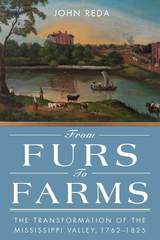 From Furs to Farms: The Transformation of the Mississippi Valley, 1762–1825
John Reda
Northern Illinois University Press, 2017 This original study tells the story of the Illinois Country, a collection of French villages that straddled the Mississippi River for nearly a century before it was divided by the treaties that ended the Seven Years’ War in the early 1760s. Spain acquired the territory on the west side of the river and Great Britain the territory on the east. After the 1783 Treaty of Paris and the 1803 Louisiana Purchase, the entire region was controlled by the United States, and the white inhabitants were transformed from subjects to citizens. By 1825, Indian claims to the land that had become the states of Illinois and Missouri were nearly all extinguished, and most of the Indians had moved west.
John Reda focuses on the people behind the Illinois Country’s transformation from a society based on the fur trade between Europeans, Indians, and mixed-race (métis) peoples to one based on the commodification of land and the development of commercial agriculture. Many of these people were white and became active participants in the development of local, state, and federal governmental institutions. But many were Indian or métis people who lost both their lands and livelihoods, or black people who arrived—and remained—in bondage.
In From Furs to Farms, Reda rewrites early national American history to include the specific people and places that make the period far more complex and compelling than what is depicted in the standard narrative. This fascinating work will interest historians, students, and general readers of US history and Midwestern studies.
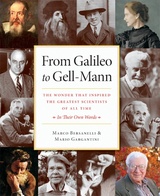 From Galileo to Gell-Mann: The Wonder that Inspired the Greatest Scientists of All Time: In Their Own Words
Marco Bersanelli
Templeton Press, 2009 From time to time, the diligent science student huddled over dense volumes of research findings and highly technical data will stumble upon a truly rare treasure: the author’s answer to the question of, “Why?” Why did the authors of these volumes commit themselves so ardently to life in the laboratory? What was it that motivated them to keep their eye to microscope for years on end? Why did the world’s greatest scientists devote their lives to research—an endeavor where failure is the exponentially more likely outcome than success?
In their new anthology, From Galileo to Gell-Mann, Marco Bersanelli and Mario Gargantini have gathered the answers to these fascinating questions from over one hundred of the brightest scientific minds from our past and our present. It is a goldmine of insight that previously could only to be found hidden deep within thousands of scattershot pages of footnotes from out-of-print journals, rare books, and unpublished papers. Throughout the work, Bersanelli and Gargantini also offer insightful commentary and discussion on the readings.
Among the most remarkable similarities that emerge when one considers together these writings from the likes of Albert Einstein, Gregor Mendel, Marie Curie, and others, is the sense of wonder and outright awe at what the study of the natural world can reveal. From Galileo to Gell-Mann makes it clear that science and all parallel attempts to understand our human existence—including fields like philosophy to theology—are viewed as nothing less than grand adventures to those that are probing the limits of what we know.
From Gesture to Language in Hearing and Deaf Children
Virginia Volterra
Gallaudet University Press, 1994 In 21 essays on communicative gesturing in the first two years of life, this vital collection demonstrates the importance of gesture in a child’s transition to a linguistic system. Introductions preceding each section emphasize the parallels between the findings in these studies and the general body of scholarship devoted to the process of spoken language acquisition.
Renowned scholars contributing to this volume include Ursula Bellugi, Judy Snitzer Reilly, Susan Goldwin-Meadow, Andrew Lock, M. Chiara Levorato, and many others.
From Gift to Commodity: Capitalism and Sacrifice in Nineteenth-Century American Fiction
Hildegard Hoeller
University of New Hampshire Press, 2012 In this rich interdisciplinary study, Hildegard Hoeller argues that nineteenth-century American culture was driven by and deeply occupied with the tension between gift and market exchange. Rooting her analysis in the period’s fiction, she shows how American novelists from Hannah Foster to Frank Norris grappled with the role of the gift based on trust, social bonds, and faith in an increasingly capitalist culture based on self-interest, market transactions, and economic reason. Placing the notion of sacrifice at the center of her discussion, Hoeller taps into the poignant discourse of modes of exchange, revealing central tensions of American fiction and culture.
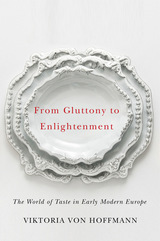 From Gluttony to Enlightenment: The World of Taste in Early Modern Europe
Viktoria von Hoffmann
University of Illinois Press, 2016 Scorned since antiquity as low and animal, the sense of taste is celebrated today as an ally of joy, a source of adventure, and an arena for pursuing sophistication. The French exalted taste as an entrée to ecstasy, and revolutionized their cuisine and language to express this new way of engaging with the world. Viktoria von Hoffmann explores four kinds of early modern texts--culinary, medical, religious, and philosophical--to follow taste's ascent from the sinful to the beautiful. Combining food studies and sensory history, she takes readers on an odyssey that redefined a fundamental human experience. Scholars and cooks rediscovered a vast array of ways to prepare and present foods. Far-sailing fleets returned to Europe bursting with new vegetables, exotic fruits, and pungent spices. Hosts refined notions of hospitality in the home while philosophers pondered the body and its perceptions. As von Hoffmann shows, these labors produced a sea change in perception and thought, one that moved taste from the base realm of the tongue to the ethereal heights of aesthetics.
From Good King Wenceslas to the Good Soldier Švejk: A Dictionary of Czech Popular Culture
Andrew Roberts
Central European University Press, 2005 Roberts' book follows in the tradition of recent scholarship that seeks to emphasize the importance of popular culture and the wealth of knowledge that can be gained through an analysis of the daily lives and practices of individuals. Focusing on popular songs, movie stars, famous athletes, traditional dishes, and children's games that are second nature to every Czech, Roberts' work serves as an introduction to Czech popular culture. This dictionary is a sizeable achievement as it offers an English readership an invaluable source of information to a rich body of material that has thus far remained ephemeral. The six hundred entries are cross-referenced and allow readers to pursue particular topics in greater depth. Written in a readable style this work is easily accessible to a wide readership.
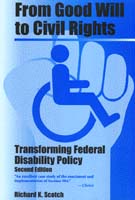 From good will to civil rights: transforming federal disability policy
Richard K. Scotch
Temple University Press, 1984 "An excellent case study of the enactment and implementation of Section 504...this book will interest students of the American public policy-making processes as well as those with a special interest in civil rights and disability policy."
--Choice
Now that curb cuts, braille elevator buttons, and closed caption television are commonplace, many people assume that disabled people are now full participants in American society. This book tells a rather different story. It tells how America's disabled mobilized to effect sweeping changes in public policy, not once but twice, and it suggests that the struggle is not yet over.
The first edition of From Good Will to Civil Rights traced the changes in federal disability policy, focusing on the development and implementation of Section 504 of the Rehabilitation Act of 1973. Richard K. Scotch's extensive interviews with policymakers, leaders of the disability rights movement, and other advocates, supplemented the sketchy official history of the legislation with the detailed, behind-the-scenes story, illuminating the role of the disability rights movement in shaping Section 504. Charting the shifts in policy and activist agendas through the 1990s, this new edition surveys the effects and disappointments associated with the Americans with Disabilities Act, passed in 1990, in the context of the continuing movement to secure full civil rights for disabled people.
"This analysis...is almost certain to become a classic work in the literature that will eventually emerge in this field."
--Harlan Hahn, Contemporary Sociology
"The best thing about Scotch's book is that it shows why, despite the broad rights language of the legislation and its regulations, Section 504 exists in a vacuum, with this country still, for the most part, unconcerned about disability rights.... Advocates should read Scotch's book... It's a good place to start on the future."
--The Disability Rag
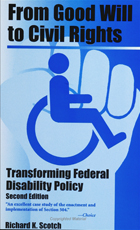 From Good Will To Civil Rights: Transforming Federal Disability Policy
Richard K. Scotch
Temple University Press, 2001 Now that curb cuts, braille elevator buttons, and closed caption television are commonplace, many people assume that disabled people are now full participants in American society. This book tells a rather different story. It tells how America's disabled mobilized to effect sweeping changes in public policy, not once but twice, and it suggests that the struggle is not yet over.
The first edition of From Good Will to Civil Rights traced the changes in federal disability policy, focusing on the development and implementation of Section 504 of the Rehabilitation Act of 1973. Richard K. Scotch's extensive interviews with policymakers, leaders of the disability rights movement, and other advocates, supplemented the sketchy official history of the legislation with the detailed, behind-the-scenes story, illuminating the role of the disability rights movement in shaping Section 504. Charting the shifts in policy and activist agendas through the 1990's, this new edition surveys the effects and disappointments associated with the Americans with Disabilities Act, passed in 1990, in the context of the continuing movement to secure civil rights for disabled people.
From Grain to Pixel: The Archival Life of Film in Transition
Giovanna
Fossati
Amsterdam University Press, 2018
Film is in a state of rapid change: the transition from analog to digital is profoundly affecting not just filmmaking and film distribution but a number of other facets of the industry, including the ways in which films are archived. In From Grain to Pixel—the first volume in the new Framing Filmseries from Amsterdam University Press—Giovanna Fossati brings together scholars and archivists to discuss their theories on digitization and to propose new possibilities for future archives.
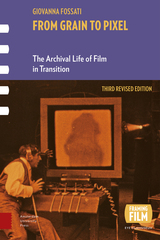 From Grain to Pixel: The Archival Life of Film in Transition, Third Revised Edition
Giovanna Fossati
Amsterdam University Press, 2019 In From Grain to Pixel, Giovanna Fossati analyzes the transition from analog to digital film and its profound effects on filmmaking and film archiving. Reflecting on the theoretical conceptualization of the medium itself, Fossati poses significant questions about the status of physical film and the practice of its archival preservation, restoration, and presentation. From Grain to Pixel attempts to bridge the fields of film archiving and academic research by addressing the discourse on film's ontology and analyzing how different interpretations of what film is affect the role and practices of film archives. By proposing a novel theorization of film archival practice, Fossati aims to stimulate a renewed dialogue between film scholars and film archivists. Almost a decade after its first publication, this revised edition covers the latest developments in the field. Besides a new general introduction, a new conclusion, and extensive updates to each chapter, a novel theoretical framework and an additional case study have been included.
 From Gray to Blue: Galvanized Yankees and the Last Years of the American Civil War
Patrick H. Garrow
University of Tennessee Press, 2025 Amid the chaos of battle and the harsh conditions of prisoner-of-war camps, tens of thousands of soldiers from both the Union and Confederate armies made controversial decisions to switch their allegiances. Building upon his 2020 work, Changing Sides: Union Prisoners of War Who Joined the Confederate Army, Patrick Garrow explores the other side of this overlooked aspect of Civil War history.
Significantly expanding on previous scholarship around "galvanized Yankees," Garrow begins his study with an overview of Civil War prisons as a whole. He outlines unsavory conditions endured by prisoners of war on both sides, including a lack of proper shelter, food, potable water, and medical care. Notably, Garrow argues that the deplorable conditions of these army prisons were not the only motivator that fueled soldiers' decisions to switch sides as the war waned. Garrow investigates service records, pension files, period newspapers, and regimental histories to uncover the complex motivations of Confederate prisoners of war who joined Federal forces. He documents the individual histories of twelve distinct infantry and calvary regiments, contextualizing the wartime climate, struggles, and political leanings of the soldiers grappling with survival and allegiance during the Civil War.
Alongside Garrow's first volume, From Gray to Blue is an insightful addition to existing Civil War scholarship that will engage and inform both history scholars and general readers.
From Guerrillas To Government: The Eritrean People’s Liberation Front
David Pool
Ohio University Press, 2001 In 1991 the Eritrean People’s Liberation Front (EPLF) took over Asmara and completed the liberation of Eritrea; formal independence came two years later after a referendum in May 1993. It was the climax of a thirty-year struggle, though the EPLF itself was formed only in the early 1970s. From the beginning, Eritrean nationalism was divided. Ethiopia’s appeal to a joint Christian imperial past alienated the Muslim pastoral lowland people in the areas where Eritrean nationalism first appeared. It was not until the early 1970s that the Christian elements of the population finally joined the liberation struggle on a substantial scale.
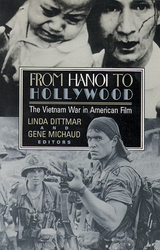 From Hanoi to Hollywood: The Vietnam War in American Film
Dittmar, Linda
Rutgers University Press, 1990 This volume is about power. It is about the power to make war and to destroy lives. It is also about another kind of power-the power to make images that may distort, displace, and destroy knowledge of the times in which those lives were lived. Many of the nineteen essays gathered in this volume are about the interrelationships between these two types of power. They demonstrate, as well, yet another type of power, the power of critical thinking to challenge dangerous myths and to confront prevailing ideologies. The title of this anthology calls attention to the process whereby aspects of the Vietnam War have been appropriated by the American cultural industry. Probing the large body of emotion-laden, controversial films, From Hanoi to Hollywood is concerned with the retelling of history and the retrospection that such a process involves. In this anthology, an awareness of film as a cultural artifact that molds beliefs and guides action is emphasized, an awareness that the contributors bring to a variety of films. Their essays span over one hundred documentary and fiction films, and include in-depth analyses of major commercial films, ranging from Apocalypse Now to Platoon, Rambo: First Blood Part II, and Full Metal Jacket, and documentaries from In the Year of the Pig to Dear America: Letters Home from Vietnam. The essays in this volume deal with representations of the Vietnam war in documentary film and television reporting, examining the ways the power of film is used to deliver political messages. There are surprises here, new readings, and important insights on the ways we as a society have attempted to come to terms with the experiences of the Vietnam era. The book also contains two appendixes-a detailed chronology charting the relationship between major historical events and the release of American war films from 1954 through 1988, and a filmography listing information on over four hundred American and foreign films about the Vietnam War.
 From Here to Free Trade: Essays in Post-Uruguay Round Trade Strategy
Ernest H. Preeg
University of Chicago Press, 1998 In his new book, Ernest Preeg analyzes international trade and investment in the 1990s and lays out a comprehensive U.S. trade strategy for the uncertain period ahead. He examines the influence of the World Trade Organization (WTO) and argues that economic globalization is beneficial to the U.S. economy in the short- to medium-term while raising important questions about national sovereignty and security over the longer term. Preeg believes regional free trade agreements will soon encompass the majority of world trade, but they can conflict with the WTO's multilateral objectives. The central challenge for U.S. trade strategy, then, is to integrate the now largely separate multilateral and regional tracks of the world trading system.
The first essay assesses U.S. interests in economic globalization, the second examines recent steps toward free trade at the multilateral and regional levels, and the next three offer an in-depth critique of U.S. regional free trade objectives in the Americas, across the Pacific, and possibly with Europe. The final essay presents a multilateral/regional synthesis for going from here to free trade over the coming decade.
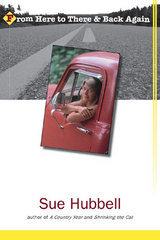 From Here to There and Back Again
Sue Hubbell
University of Michigan Press, 2004 "Sue Hubbell's From Here to There and Back Again is stylish and thought-provoking. As her brother I have long admired her mince pies and her ability to knit her own thermal underwear."
---Bil Gilbert "The real masterwork that Sue Hubbell has created is her life."
---New York Times Book Review "A latter-day Henry Thoreau with a sense of the absurd."
---Chicago Sun-Times "Sue Hubbell writes splendidly."
---William Least Heat-Moon "Prose as clear, languorous and beautiful as honey poured from a jar."
---People From Here to There and Back Again is the much-anticipated collection of essays on an array of offbeat and engrossing subjects by magazine essayist and nature writer Sue Hubbell, author of A Country Year, Shrinking the Cat, and Waiting for Aphrodite. Reading Sue Hubbell is like embarking on a journey of discovery with a close friend. Her writing is witty, learned yet unassuming, intensely personal, and pointedly honest as she ranges far and wide on such topics as after-hours truck stops, the country's best pie restaurants, bowling shoes, Costa Rica's blue morpho butterfly, earthquakes, and the honey trade. Several of her pieces take place in Michigan locales as well, including Elvis sightings in Vicksburg and the magicians' convention in Colon. In the end you'll return from these travels refreshed, enlightened-and wiser.
 From Here to There: The Art and Science of Finding and Losing Our Way
Michael Bond
Harvard University Press, 2020 A Wired Most Fascinating Book of the Year
“An important book that reminds us that navigation remains one of our most underappreciated arts.”
—Tristan Gooley, author of The Lost Art of Reading Nature’s Signs
“If you want to understand what rats can teach us about better-planned cities, why walking into a different room can help you find your car keys, or how your brain’s grid, border, and speed cells combine to give us a sense of direction, this book has all the answers.”
—The Scotsman
How is it that some of us can walk unfamiliar streets without losing our way, while the rest of us struggle even with a GPS? Navigating in uncharted territory is a remarkable feat if you stop to think about it. In this beguiling mix of science and storytelling, Michael Bond explores how we do it: how our brains make the “cognitive maps” that keep us orientated and how that anchors our sense of wellbeing. Children are instinctive explorers, developing a spatial understanding as they roam. And yet today few of us make use of the wayfinding skills that we inherited from our nomadic ancestors.
Bond tells stories of the lost and found—sailors, orienteering champions, early aviators—and explores why being lost can be such a devastating experience. He considers how our understanding of the world around us affects our psychology and helps us see how our reliance on technology may be changing who we are.
“Bond concludes that, by setting aside our GPS devices, by redesigning parts of our cities and play areas, and sometimes just by letting ourselves get lost, we can indeed revivify our ability to find our way, to the benefit of our inner world no less than the outer one.”
—Science
“A thoughtful argument about how our ability to find our way is integral to our nature.”
—Sunday Times
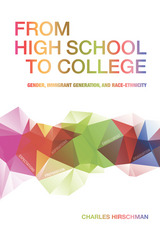 From High School to College: Gender, Immigrant Generation, and Race-Ethnicity
Charles Hirschman
Russell Sage Foundation, 2016 Today, over 75 percent of high school seniors aspire to graduate from college. However, only one-third of Americans hold a bachelor’s degree, and college graduation rates vary significantly by race/ethnicity and parental socioeconomic status. If most young adults aspire to obtain a college degree, why are these disparities so great? In From High School to College, Charles Hirschman analyzes the period between leaving high school and completing college for nearly 10,000 public and private school students across the Pacific Northwest. Hirschman finds that although there are few gender, racial, or immigration-related disparities in students’ aspirations to attend and complete college, certain groups succeed at the highest rates. For example, he finds that women achieve better high school grades and report receiving more support and encouragement from family, peers, and educators. They tend to outperform men in terms of preparing for college, enrolling in college within a year of finishing high school, and completing a degree. Similarly, second-generation immigrants are better prepared for college than first-generation immigrants, in part because they do not have to face language barriers or learn how to navigate the American educational system. Hirschman also documents that racial disparities in college graduation rates remain stark. In his sample, 35 percent of white students graduated from college within seven years of completing high school, compared to only 19 percent of black students and 18 percent of Hispanic students. Students’ socioeconomic origins—including parental education and employment, home ownership, and family structure—account for most of the college graduation gap between disadvantaged minorities and white students. Further, while a few Asian ethnic groups have achieved college completion rates on par with whites, such as Chinese and Koreans, others, whose socioeconomic origins more resemble those of black and Hispanic students, such as Filipinos and Cambodians, also lag behind in preparedness, enrollment, and graduation from college. With a growing number of young adults seeking college degrees, understanding the barriers that different students encounter provides vital information for social scientists and educators. From High School to College illuminates how gender, immigration, and ethnicity influence the path to college graduation.
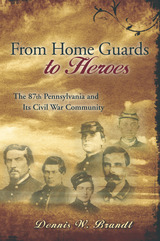 From Home Guards to Heroes: The 87th Pennsylvania and Its Civil War Community
Dennis W. Brandt
University of Missouri Press, 2007 The soldiers of the 87th Pennsylvania Infantry fought in the Overland campaign under Grant and in the Shenandoah valley under Sheridan, notably at the Battle of Monocacy. But as Dennis Brandt reveals in From Home Guards to Heroes, their real story takes place beyond the battlefield. The 87th drew its men from the Scotch-Irish and German populations of York and Adams counties in south-central Pennsylvania—a region with closer ties to Baltimore than to Philadelphia—where some citizens shared Marylanders’ southern views on race while others aided the Underground Railroad. Brandt’s unique regimental history investigates why these “boys from York” enlisted and why some deserted, the ways in which soldiers reflected their home communities, and the area’s attitudes toward the war both before and after hostilities broke out. Brandt takes a humanistic approach to the Civil War, revealing the more personal aspects of the struggle in a book that focuses on the soldiers themselves. Using their own words to describe action both on and off the battlefield, he sheds light on the lives of ordinary men: the comparative values of farm and city boys, their motives and concerns, the effect of battle on soldiers and their families, and the suffering that veterans took to the grave. Brandt also looks at soldiers’ racial views, illuminating their deepest worries about the war, and at community politics and problems of discipline surrounding this ideologically divided unit. Grounded in more than a decade of research into nearly two thousand military records, this is one of the few regimental histories based on more than one thousand pension records for the entire regiment, plus nearly eight hundred additional record sets for other area soldiers. Brandt tapped regional newspapers and a cache of unpublished letters and diaries—some from private collections not previously known—to provide an invaluable account of Civil War sensibilities in a northern area bordering a slave state. From Home Guards to Heroes is a book about war in which humanity rather than troop movement takes center stage. Engagingly written for a wide audience and meticulously researched, it offers a distinctive image of a community and the intimate lives of the men it sent off to fight—and a story that will intrigue any Civil War aficionado.
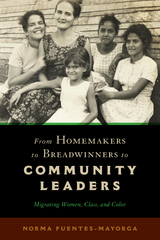 From Homemakers to Breadwinners to Community Leaders: Migrating Women, Class, and Color
Norma Fuentes-Mayorga
Rutgers University Press, 2022 In From Homemakers to Breadwinners to Community Leaders, Norma Fuentes-Mayorga compares the immigration and integration experiences of Dominican and Mexican women in New York City, a traditional destination for Dominicans but a relatively new one for Mexicans. Her book documents the significance of women-led migration within an increasingly racialized context and underscores the contributions women make to their communities of origin and of settlement. Fuentes-Mayorga’s research is timely, especially against the backdrop of policy debates about the future of family reunification laws and the unprecedented immigration of women and minors from Latin America, many of whom seek human rights protection or to reunite with families in the US. From Homemakers to Breadwinners to Community Leaders provides a compelling look at the suffering of migrant mothers and the mourning of family separation, but also at the agency and contributions that women make with their imported human capital and remittances to the receiving and sending community. Ultimately the book contributes further understanding to the heterogeneity of Latin American immigration and highlights the social mobility of Afro-Caribbean and indigenous migrant women in New York.
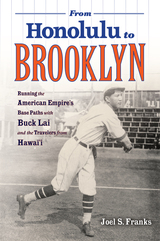 From Honolulu to Brooklyn: Running the American Empire’s Base Paths with Buck Lai and the Travelers from Hawai’i
Joel S. Franks
Rutgers University Press, 2022 From 1912 to 1916, a group of baseball players from Hawaiʻ i barnstormed the U.S. mainland. While initially all Chinese, the Travelers became more multiethnic and multiracial with ballplayers possessing Chinese, Japanese, Hawaiian, and European ancestries. As a group and as individuals the Travelers' experiences represent a still much too marginalized facet of baseball and sport history. Arguably, they traveled more miles and played in more ball parks in the American empire than any other group of ballplayers of their time. Outside of the major leagues, they were likely the most famous nine of the 1910s, dominating their college opponents and more than holding their own against top-flight white and black independent teams. And once the Travelers’ journeys were done, a team leader and star Buck Lai gained fame in independent baseball on the East Coast of the U.S., while former teammates ran base paths and ran for political office as they confronted racism and colonialism in Hawaiʻ i.
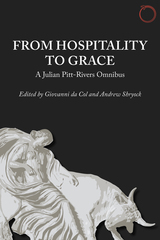 From Hospitality to Grace: A Julian Pitt-Rivers Omnibus
Julian Pitt-Rivers
HAU, 2015 The Pitt-Rivers Omnibus brings together the definitive essays and lectures of the influential social anthropologist Julian A. Pitt-Rivers, a corpus of work that has, until now, remained scattered, untranslated, and unedited. Illuminating the themes and topics that he engaged throughout his life—including hospitality, grace, the symbolic economy of reciprocity, kinship, the paradoxes of friendship, ritual logics, the anthropology of dress, and more—this omnibus brings his reflections to new life.
Holding Pitt-Rivers’s diversity of subjects and ethnographic foci in the same gaze, this book reveals a theoretical unity that ran through his work and highlights his iconic wit and brilliance. Striking at the heart of anthropological theory, the pieces here explore the relationship between the mental and the material, between what is thought and what is done. Classic, definitive, and yet still extraordinarily relevant for contemporary anthropology, Pitt-Rivers’s lifetime contribution will provide a new generation of anthropologists with an invaluable resource for reflection on both ethnographic and theoretical issues.
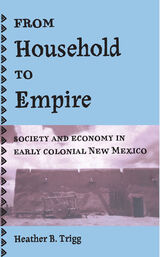 From Household to Empire: Society and Economy in Early Colonial New Mexico
Heather B. Trigg
University of Arizona Press, 2005 Published in cooperation with the William P. Clements Center for Southwest Studies, Southern Methodist University Settlers at Santa Fe and outlying homesteads during the seventeenth century established a thriving economy that saw the exchange of commodities produced by indigenous peoples, settlers, and Franciscan friars for goods manufactured as far away as China, France, and Turkey. This early Spanish colonial period in New Mexico provides an opportunity to explore both economic activity within a colony and the relations between colony and homeland. By examining the material remains of this era from 1598 to 1680, Heather Trigg reveals a more complete picture of colonial life. Drawing on both archaeological and historical sources, Trigg analyzes the various levels of economic activity that developed: production of items in colonial households, exchanges between households, and trade between the colony and Mexico. Rather than focusing only on the flow of products and services, she also explores the social mechanisms that likely had a significant impact on the economic life of the colony. Because economic activity was important to so many aspects of daily life, she is able to show how and why colonial society worked the way it did. While focusing on the colonists, she also explores their relations with Pueblo peoples. Through her analysis of these two pools of data, Trigg generates insights not usually gleaned from the limited texts of the period, providing information about average colonists in addition to the governors and clergy usually covered in historical accounts. By using specific examples from historical documents and archaeological materials, she shows that colonists from all levels of society modified both formal and informal rules of economic behavior to better fit the reality of the colonial frontier. With its valuable comparative data on colonization, From Household to Empire provides a novel way of examining colonial economies by focusing on the maintenance and modification of social values. For all readers fascinated by the history of the Southwest, this book provides a fuller picture of life in early New Mexico than has previously been seen.
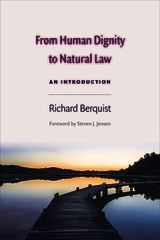 From Human Dignity to Natural Law: An Introduction
Richard Berquist
Catholic University of America Press, 2019 From Human Dignity to Natural Law shows how the whole of the natural law, as understood in the Aristotelian Thomistic tradition, is contained implicitly in human dignity. Human dignity means existing for one’s own good (the common good as well as one’s individual good), and not as a mere means to an alien good. But what is the true human good? This question is answered with a careful analysis of Aristotle’s definition of happiness. The natural law can then be understood as the precepts that guide us in achieving happiness.
To show that human dignity is a reality in the nature of things and not a mere human invention, it is necessary to show that human beings exist by nature for the achievement of the properly human good in which happiness is found. This implies finality in nature. Since contemporary natural science does not recognize final causality, the book explains why living things, as least, must exist for a purpose and why the scientific method, as currently understood, is not able to deal with this question. These reflections will also enable us to respond to a common criticism of natural law theory: that it attempts to derive statements of what ought to be from statements about what is.
After defining the natural law and relating it to human or positive law, Richard Berquist considers Aquinas’s formulation of the first principle of the natural law. It then discusses the love commandments to love God above all things and to love one’s neighbor as oneself as the first precepts of the natural law. Subsequent chapters are devoted to clarifying and defending natural law precepts concerned with the life issues, with sexual morality and marriage, and with fundamental natural rights. From Human Dignity to Natural Law concludes with a discussion of alternatives to the natural law.
From Humors to Medical Science: A HISTORY OF AMERICAN MEDICINE
John Duffy
University of Illinois Press, 1993
John Duffy's classic history, formerly titled The Healers, has
been thoroughly revised and updated for this second edition, which includes
new chapters on women and minorities in medicine and on the challenges
currently facing the health care field.
"This remains the only comprehensive history of American medicine.
The treatment of the emergence of modern medicine and the flowering of
surgery is especially fresh and well done. As one of the respected scholars
in our profession, John Duffy has again demonstrated his wide knowledge
of the subject."
-- Thomas N. Brunner, author of To the Ends of the Earth: Women's
Search for Education in Medicine
From Huntsville To Appomattox: R. T. Coles's History Of 4Th Regiment,
Jeffrey D. Stocker
University of Tennessee Press, 1996 Cole was adjutant of the Alabama Volunteer Infantry, one of the few Confederate regiments to see action in both the western and eastern theaters of the Civil War. After the war he refreshed and augmented his memory with other accounts to document both the military and the human aspects of the regiment's campaigns. End notes identify people and events and refer to other sources. This is the first full publication. Annotation c. by Book News, Inc., Portland, Or.
From Iberian Romani to Iberian Para-Romani Varieties
Zuzana Krinková
Karolinum Press, 2015 Linguistic contact between Romani and Spanish, Catalan and other languages of the Iberian Peninsula began in the first half of the fifteenth century. This contact resulted in the emergence of what are known as the Para-Romani varieties—mixed languages that predominantly make use of the grammar of the surrounding language, while at least partly retaining the Romani-derived vocabulary. This book describes their evolution from the earlier, inflectional Iberian Romani and argues that this previous, fifteenth-century Iberian Romani was similar to the “Early Romani” of the Byzantine period. Based on an extensive body of language material dated between the seventeenth and twenty-first centuries, the book also draws attention to some language phenomena in these varieties which, until now, have not previously been described.
From Identity To Politics: Lesbian & Gay Movements In The U.S.
Craig Rimmerman
Temple University Press, 2001 Liberal democracy has provided a certain degree of lesbian and gay rights. But those rights, as we now know, are not unlimited, and they continue to be the focus of efforts by lesbian and gay movements in the United States to promote social change. In this compelling critique, Craig Rimmerman looks at the past, present, and future of the movements to analyze whether it is possible for them to link identity concerns with a progressive coalition for political, social, and gender change, one that take into account race, class, and gender inequalities.
Enriched by eight years of interviews in Washington, D.C. and New York City, and by the author's experience as a Capitol Hill staffer, From Identity to Politics will provoke discussion in classrooms and caucus rooms across the United States.
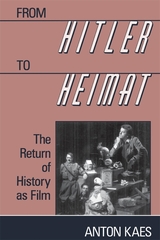 From Hitler to Heimat: The Return of History as Film
Anton Kaes
Harvard University Press West German filmmakers have tried to repeatedly over the past half-century to come to terms with Germany’s stigmatized history. How can Hitler and the Holocaust, how can the complicity and shame of the average German be narrated and visualized? How can Auschwitz be reconstructed? Anton Kaes argues that a major shift in German attitudes occurred in the mid-1970s—a shift best illustrated in films of the New German Cinema, which have focused less on guilt and atonement than on personal memory and yearning for national identity.
To support his claim, Kaes devotes a chapter to each of five complex and celebrated films of the modern German era: Hans Jürgen Syberberg's Hitler, a Film from Germany, a provocative restaging of German history in postmodern tableaux; The Marriage of Maria Braun, the personal and political reflection on postwar Germany with which Rainer Werner Fassbinder first caught the attention of American and European audiences; Helma Sanders-Brahms's feminist and autobiographical film Germany, Pale Mother, relating the unexplored role of German women during and after the war; Alexander Kluge's The Patriot, a self-reflexive collage of verbal and visual quotations from the entire course of the German past; and, finally, Edgar Reitz's Heimat, a 16-hour epic rendering of German history from 1918 to the present from the perspective of everyday life in the provinces.
Despite radical differences in style and form, these films are all concerned with memory, representation, and the dialogue between past and present Kaes draws from a variety of disciplines, interweaving textual interpretation, cultural history, and current theory to create a dynamic approach to highly complex and multi-voiced films. His book will engage readers interested in postwar German history, politics, and culture; in film and media studies; and in the interplay of history, memory, and film.
 From Hitler to Heimat: The Return of History as Film
Anton Kaes
Harvard University Press, 1989 West German filmmakers have tried to repeatedly over the past half-century to come to terms with Germany’s stigmatized history. How can Hitler and the Holocaust, how can the complicity and shame of the average German be narrated and visualized? How can Auschwitz be reconstructed? Anton Kaes argues that a major shift in German attitudes occurred in the mid-1970s—a shift best illustrated in films of the New German Cinema, which have focused less on guilt and atonement than on personal memory and yearning for national identity.
To support his claim, Kaes devotes a chapter to each of five complex and celebrated films of the modern German era: Hans Jürgen Syberberg's Hitler, a Film from Germany, a provocative restaging of German history in postmodern tableaux; The Marriage of Maria Braun, the personal and political reflection on postwar Germany with which Rainer Werner Fassbinder first caught the attention of American and European audiences; Helma Sanders-Brahms's feminist and autobiographical film Germany, Pale Mother, relating the unexplored role of German women during and after the war; Alexander Kluge's The Patriot, a self-reflexive collage of verbal and visual quotations from the entire course of the German past; and, finally, Edgar Reitz's Heimat, a 16-hour epic rendering of German history from 1918 to the present from the perspective of everyday life in the provinces.
Despite radical differences in style and form, these films are all concerned with memory, representation, and the dialogue between past and present Kaes draws from a variety of disciplines, interweaving textual interpretation, cultural history, and current theory to create a dynamic approach to highly complex and multi-voiced films. His book will engage readers interested in postwar German history, politics, and culture; in film and media studies; and in the interplay of history, memory, and film.
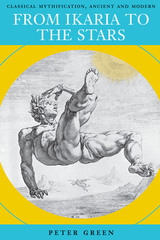 From Ikaria to the Stars: Classical Mythification, Ancient and Modern
By Peter Green
University of Texas Press, 2004 "I hadn't, till I really started digging, gauged the fierce intensity of the need for myth in the human psyche, of any age, or sensed the variety of motives dictating that need," writes Peter Green in the introduction to this wide-ranging collection of essays on classical mythology and the mythic experience. Using the need for myth as the starting point for exploring a number of topics in Greek mythology and history, Green advances new ideas about why the human urge to make myths persists across the millennia and why the borderland between mythology and history can sometimes be hard to map. Green looks at both specific problems in classical mythology and larger theoretical issues. His explorations underscore how mythic expression opens a door into non-rational and quasi-rational modes of thought in which it becomes possible to rewrite painful truths and unacceptable history—which is, Green argues, a dangerous enterprise. His study of the intersections between classical mythology and Greek history ultimately drives home a larger point, "the degree of mythification and deception (of oneself no less than of others) of which the human mind is capable."
From Imperial Myth to Democracy: Japan's Two Constitutions, 1889-2002
Lawrence W. Beer
University Press of Colorado, 2002 While English-language studies of Japanese law have enjoyed remarkable growth in the past half-century, scholars have given only scant attention to the broad sweep of Japan's constitutional history. Deftly combining legal and historical analysis, Lawrence W. Beer and John M. Maki contrast Japan's two modern-era constitutions - the Meiji Constitution of 1889 and the Showa Constitution of 1947. Moving beyond a narrowly focused study of the documents themselves, Beer and Maki present these constitutions as key to understanding differences in Japanese society and politics before and after World War II. Their clear and fluid presentation makes this an engaging and approachable study of not only constitutional law but also this remarkable period in Japanese history.
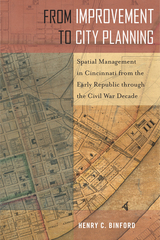 From Improvement to City Planning: Spatial Management in Cincinnati from the Early Republic through the Civil War Decade
Henry C. Binford
Temple University Press, 2021 From Improvement to City Planning emphasizes the ways people in nineteenth-century America managed urban growth. Historian Henry Binford shows how efforts to improve space were entwined with the evolution of urban governance (i.e., regulation)—and also influenced by a small group of advantaged families. Binford looks specifically at Cincinnati, Ohio, then the largest and most important interior city west of the Appalachian Mountains. He shows that it was not just industrialization, but also beliefs about morality, race, health, poverty, and “slum” environments, that demanded an improvement of urban space. As such, movements for public parks and large-scale sanitary engineering in the 1840s and ’50s initiated the beginning of modern city planning. However, there were limitations and consequences to these efforts.. Many Americans believed that remaking city environments could also remake citizens. From Improvement to City Planning examines how the experiences of city living in the early republic prompted city dwellers to think about and shape urban space.
From Inclusion to Influence: Latino Representation in Congress and Latino Political Incorporation in America
Walter Clark Wilson
University of Michigan Press, 2017 In From Inclusion to Influence, Walter Wilson addresses urgent questions regarding the political incorporation of Latinos in America. First, he demonstrates that Latino representatives in the U.S. Congress do, in fact, represent Latino interests more effectively than do other representatives, both by serving as conduits connecting fellow Latinos to the government and by introducing their concerns into the legislative process. Then, moving beyond the debate about descriptive and substantive representation, Wilson identifies the ways in which the efforts of Latinos in Congress enable the meaningful inclusion of Latinos in politics, foster the ability of Latinos to shape public policy, and ultimately promote democracy in an increasingly diverse nation.
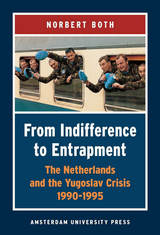 From Indifference to Entrapment: The Netherlands and the Yugoslav Crisis, 1990-1995
Norbert Both
Amsterdam University Press, 2000 A detailed analysis of the response to the Yugoslav crisis by one of America's key allies in NATO. The author focuses on the question of how a Western bureaucracy faced up to the most complex foreign policy challenge of the 1990s. The Netherlands, as a 'pocket-sized medium power', is an interesting case study. While the margins for Dutch foreign policy are limited, fate had it that the Netherlands occupied the European presidency during the second half of 1991, when the recognition issue divided the West and the parameters for the subsequent international intervention in the Balkans were set. By July 1995, the involvement of the Netherlands had deepened to the extent that Dutch troops who found themselves trapped in the UN safe area of Srebrenica together with the local Muslim population were unable to prevent the worst massacre in Europe since the Second World War.
This study is based on interviews with all the major players, including two former Defence Ministers and two former Ministers of Foreign Affairs, and on documents from the Netherlands Ministry of Foreign Affairs, made available under the country's own 'freedom of information act'.
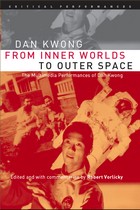 From Inner Worlds to Outer Space: The Multimedia Performances of Dan Kwong
Dan Kwong
University of Michigan Press, 2004 Praise for Dan Kwong:
"Somehow, Kwong has held onto his sense of childlike wonder about the cosmos, and that awe informs his free-wheeling and uproarious performance."
-Asian Week
"He weaves striking, multi-focus stage pictures around simple monologues about his Chinese and Japanese grandfathers, ironic accounts of his own childhood, and litanies of the trials facing Asian American males."
-L.A. Times
"Saturated with high-spirited enthusiasm . . . a refreshingly forthright approach to his often dark material."
-Chicago Tribune
"Kwong's humor is warm and loving . . . it stems from a delightfully twisted taste for the absurdity of human behavior. . . . Be prepared to laugh, to be moved, and to fall in love with a performer."
-L.A. Reader
Dan Kwong's performances delve into the complexities of growing up as a working-class Chinese-Japanese-American male in L.A., land of Hollywood and Disney. Kwong's remarkable performances, a potent array of multimedia effects and athletic physicalization, investigate questions of identity and the intersecting effects of race, culture, class, gender, and sexuality. From Inner Worlds to Outer Space brings together Kwong's scripts with illuminating commentary by critic Robert Vorlicky. The book includes interviews that reveal Kwong's personal and artistic influences, his evolution as an artist, and his philosophical and technical approach to art-making.
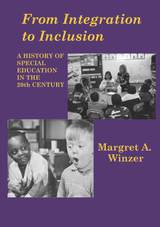 From Integration to Inclusion: A History of Special Education in the 20th Century
Margret A. Winzer
Gallaudet University Press, 2009 Since Margret A. Winzer wrote her landmark work The History of Special Education, much has transpired in this field, which she again has captured in a remarkable display of scholarship. Winzer’s new study From Integration to Inclusion: A History of Special Education in the 20th Century focuses chiefly on the significant events of the twentieth and early twenty-first centuries in the United States and Canada. Its key dynamics consist of a retrospective overview of the paradigms that emerged from and shaped special education; a critical assessment of past progress and reform, including failures and disappointments; and an analysis of the theoretical diversity within the discipline.
In this stand-alone volume, Winzer juxtaposes the historical study of disability and of special schooling and service provision with reference to broader social systems, protocols, and practices. She documents how prevailing emotional and intellectual climates influence disability and schooling, and also takes into account the social, political, and ideological factors that affect educational theory and practice. Winzer recognizes that reform has been the Zeitgeist of the history of special education. Crucial problems such as defining exceptional conditions and separating them from one another were formulated in contexts organized along moral, theological, legislative, medical, and social dimensions. Many of these reforms failed for various reasons, which Winzer thoroughly explains in her study. Most of these reforms evolved from the long and honorable pedigree that the field of special education has possessed since its earliest antecedents, now admirably brought up to date by this outstanding work.
 From Interrogation to Integration: Centering Social Justice in Special Collections, Archives, and Preservation
Kim Hoffman
Association of College & Research Libraries, 2025 From their inception, special collections and archives have memorialized the lives of people in power, serving as a tool to preserve the status quo and perpetuate systemic oppression. From Interrogation to Integration: Centering Social Justice in Special Collections, Archives, and Preservation collects case studies, research projects, lesson plans, stories, practical strategies, color illustrations, and accessible, low-cost solutions from authors who have grappled directly with the legacy of harm present in their own institutions. The volume is organized into five themes: - Research
- Description
- Preservation and Access
- Outreach
- Instruction
Centering social justice in our daily practice and tasks is a form of resistance against external pressures. From Interrogation to Integration contributes to ongoing efforts to create a more inclusive, diverse, just, and equitable profession while acknowledging both the scale and complexity of that work.
 From Interwar Pluralism to Postwar Neoclassicism, Volume 30
Mary S. Morgan and Malcolm Rutherford, eds.
Duke University Press From Interwar Pluralism to Postwar Neoclassicism seeks to change assumptions about American economics during the transformative period between the world wars. The twelve essays by respected economists and historians collected here take a precise look at the mechanisms that brought about the shift from pluralism to neoclassicism in American economics. They discuss such topics as the demise of the Social Gospel Movement, the role of general education and graduate study in Chicago economics, the Sherman Antitrust Act, the transformation of economics through a survey of journal articles, and changes in American monetary thought. Contributors. Roger E. Backhouse, Márcia L. Balisciano, Bradley W. Bateman, Jeff Biddle, Ross B. Emmett, Crauford D. W. Goodwin, D. Wade Hands, Anne Mayhew, Steven G. Medema, Perry Mehrling, Philip Mirowski, Mary S. Morgan, Malcolm Rutherford, E. Roy Weintraub
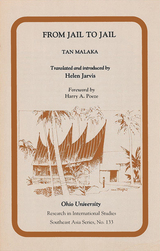 From Jail to Jail
Tan Malaka
Ohio University Press, 2020 From Jail to Jail is the political autobiography of Sutan Ibrahim gelar Tan Malaka, an enigmatic and colorful political thinker of twentieth-century Asia, who was one of the most influential figures of the Indonesian Revolution. Variously labeled a communist, Trotskyite, and nationalist, Tan Malaka managed to run afoul of nearly every political group and faction involved in the Indonesian struggle for independence. During his decades of political activity, he spent periods of exile and hiding in nearly every country in Southeast Asia. As a Marxist who was expelled from and became a bitter enemy of his country’s Communist Party and as a nationalist who was imprisoned and murdered by his own government’s forces as a danger to its anticolonial struggle, Tan Malaka was and continues to be soaked in contradiction and controversy. Translated by Helen Javis and with a new introduction from Harry A. Poeze, this edition of From Jail to Jail contextualizes the life and political accomplishments of Tan Malaka in one of the few known autobiographies by a Marxist of this political era and region.
From Jail to Jail: Mis Sea#83 Tpg#8
Tan Malaka
Ohio University Press, 1991 From Jail to Jail is the political autobiography of Sutan Ibrahim gelar Tan Malaka, an enigmatic and colorful political thinker of twentieth-century Asia, who was one of the most influential figures of the Indonesian Revolution. Variously labeled a communist, Trotskyite, and nationalist, Tan Malaka managed to run afoul of nearly every political group and faction involved in the Indonesian struggle for independence. During his decades of political activity, he spent periods of exile and hiding in nearly every country in Southeast Asia. As a Marxist who was expelled from and became a bitter enemy of his country’s Communist Party and as a nationalist who was imprisoned and murdered by his own government’s forces as a danger to its anticolonial struggle, Tan Malaka was and continues to be soaked in contradiction and controversy.
 From Jane Austen to Joseph Conrad
Robert C. Rathburn and Martin Steinmann Jr., Editors
University of Minnesota Press, 1967 From Jane Austen to Joseph Conrad was first published in 1967. Minnesota Archive Editions uses digital technology to make long-unavailable books once again accessible, and are published unaltered from the original University of Minnesota Press editions. David Daisches, Douglas Bush, Robert B. Heilman, Arthur Mizener, and William Van O'Connor are among the contributors to this volume of essays on the nineteenth-century British novel. Each of the selections has been written expressly for this book and is published here for the first time. There are a total of 20 essays, each by a different contributor. In addition, Rathburn, in an introductory essay, relates the nineteenth-century novel to that of the eighteenth century and Steinmann, in the concluding essay, discusses the nineteenth-century novel in relation to that of the present century. The contributors, in addition to the two editors of the volume, and the novelists they discuss are the following: Charles Murrah, Jane Austen; Alan D Mckillop, Jane Austen; David Dasches, Walter Scott; Curtis Dahl, Edward Bulwer-Lytton; J. Y T. Greig, William Makepeace Thackeray; Douglas Bush, Charles Dickens; George H. Ford, Dickens; Melvin; R. Watson, the Brontes; Robert B. Heilman, Charlotte Bronte; Yvonne French, Elizabeth Gaskell; Bradford A. Booth, Anthony Trollope; Arthur Mizener, Anthony Trollope; Gordon S. Haight, George Eliot; Sumner J. Ferris, George Eliot; Wayne Burns, Charles Reade; Fabian Gudas, George Meredith; John Holloway, Thomas Hardy; Jacob Korg, George Gissing; William Van O'Connor, Samuel Burlter; W. Y. Tindall, Joseph Conrad. Although each essay is focused on a single novel or on one aspect of the novelist, all of them are written to give the reader sense of the novelist's whole achievement.
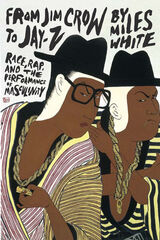 From Jim Crow to Jay-Z: Race, Rap, and the Performance of Masculinity
Miles White
University of Illinois Press, 2011 This multilayered study of the representation of black masculinity in musical and cultural performance takes aim at the reduction of African American male culture to stereotypes of deviance, misogyny, and excess. Broadening the significance of hip-hop culture by linking it to other expressive forms within popular culture, Miles White examines how these representations have both encouraged the demonization of young black males in the United States and abroad and contributed to the construction of their identities. From Jim Crow to Jay-Z traces black male representations to chattel slavery and American minstrelsy as early examples of fetishization and commodification of black male subjectivity. Continuing with diverse discussions including black action films, heavyweight prizefighting, Elvis Presley's performance of blackness, and white rappers such as Vanilla Ice and Eminem, White establishes a sophisticated framework for interpreting and critiquing black masculinity in hip-hop music and culture. Arguing that black music has undeniably shaped American popular culture and that hip-hop tropes have exerted a defining influence on young male aspirations and behavior, White draws a critical link between the body, musical sound, and the construction of identity.
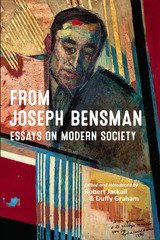 From Joseph Bensman: Essays on Modern Society
Robert Jackall
University of Tennessee Press, 2014
Joseph Bensman (1922-1986), a renowned analyst of modern institutions, professions, and culture, was Distinguished Professor of Sociology at the Graduate Center, City University of New York, and at City College of New York. From Joseph Bensman: Essays on Modern Society brings together some of his finest work, often done in collaboration with colleagues such as Arthur J. Vidich, Robert Lilienfeld, Bernard Rosenberg, and Israel Gerver.
In the introduction to this volume, editors Robert Jackall and Duffy Graham identify Bensman’s trademark habits of mind: an analytical stance, fundamentally objective and dispassionate; a vigilant awareness of the reach and vitality of bureaucracy; an ability to discern intellectual problems in superficially unremarkable phenomena; attention to empirical detail and suspicion of theoretical abstractions; and appreciation of irony and unintended consequences.
Robert Jackall is Willmott Family Professor of Sociology and Public Affairs at Williams College. He is the author of Moral Mazes: The World of Corporate Managers
and Street Stories: The World of Police Detectives, among other books. Duffy Graham is the author of The Consciousness of the Litigator.
From Kant and Royce to Heidegger: Essays in Modern Philosophy
Charles Sherover
Catholic University of America Press, 2019 In this study, Charles M. Sherover argues that there is a single, substantial line of development that can be traced from the work of Leibniz through Kant and Royce to Heidegger. Sherover traces a movement from deep within the roots of German idealism through Royce's insights into American pragmatism to the ethical ramifications of Heidegger's existential phenomenology, and then provides an analysis of the neglected ethical and political implications of Heidegger's Being and Time. The essays lead finally to Sherover's own view of the self as a member of a moral and political community.
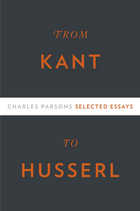 From Kant to Husserl: Selected Essays
Charles Parsons
Harvard University Press, 2012 In From Kant to Husserl, Charles Parsons examines a wide range of historical opinion on philosophical questions, from mathematics to phenomenology. Amplifying his early ideas on Kant’s philosophy of arithmetic, Parsons uses Kant’s lectures on metaphysics to explore how his arithmetical concepts relate to the categories. He then turns to early reactions by two immediate successors of Kant, Johann Schultz and Bernard Bolzano, to shed light on disputed questions regarding interpretation of Kant’s philosophy of mathematics. Interested, as well, in what Kant meant by “pure natural science,” Parsons considers the relationship between the first Critique and the Metaphysical Foundations of Natural Science. His commentary on Kant’s Transcendental Aesthetic departs from mathematics to engage the vexed question of what it tells about the meaning of Kant’s transcendental idealism.
Proceeding on to phenomenology, Parsons examines Frege’s evolving idea of extensions, his attitude toward set theory, and his correspondence, particularly exchanges with Russell and Husserl. An essay on Brentano brings out, in the case of judgment, an alternative to the now standard Fregean view of negation, and, on truth, alternatives to the traditional correspondence view that are still discussed today. Ending with the question of why Husserl did not take the “linguistic turn,” a final essay included here marks the only article-length discussion of Husserl Parsons has ever written, despite a long-standing engagement with this philosopher.
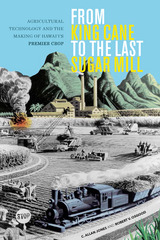 From King Cane to the Last Sugar Mill: Agricultural Technology and the Making of Hawai`i's Premier Crop
C. Allan Jones and Robert V. Osgood
University of Hawaii Press, 2015 Sugarcane cultivation began in Hawai‘i with the arrival of Polynesian settlers, expanding into a commercial crop in the early 1800s. Hawai‘i’s sugar industry, a significant economic and political force in the last half of the nineteenth century entered the twentieth century heralding major improvements in sugarcane varieties, irrigation systems, fertilizer use, biological pest control, and the use of steam power for field and factory operations. By the 1920s the industry was probably the most technologically advanced in the world. However, Hawai‘i’s annexation by the United States in 1898 invalidated the Kingdom’s contract labor laws, reduced the plantations’ hold on labor, and resulted in successful strikes by Japanese and Filipino workers. The industry survived the low sugar prices of the Great Depression and labor shortages of World War II by mechanizing to increase labor productivity. The industry saw science-driven gains in productivity and profitability in the 1950s and 1960s, but beginning in the 1970s unprecedented economic pressures reduced the number of plantations from twenty-seven in 1970 to only four in 2000. By 2011 only one plantation remained. This book focuses on the technological and scientific advances that allowed Hawai‘i’s sugar industry to become a world leader and HC&S to survive into the twenty-first century. The authors also discuss the enormous societal and environmental changes caused by the sugar industry’s aggressive search for labor, land, and water resources.
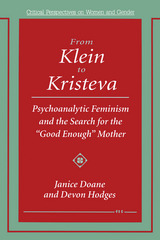 From Klein to Kristeva: Psychoanalytic Feminism and the Search for the "Good Enough" Mother
Janice Doane and Devon Hodges
University of Michigan Press, 1993 Recent feminist and psychoanalytic accounts of mothering have been profoundly shaped by the work of Melanie Klein, D. W. Winnicott, Nancy Chodorow, and Julia Kristeva. Although their work spans many decades, these writers share the goal of understanding object relations, that is, the child's relation to internalized "objects" —most often the mother, as the child's first caretaker. Doane and Hodges chart the development of "mother-centered" psychoanalysis and its influence on feminist thought in a number of fields and show how the effort to elevate the importance of the mother has become implicated in the current effort to restrict possibilities for women to "opportunities" associated with hearth and home. The authors argue that discussions of the maternal role always exist within an ideological framework in which they are purveyed to particular groups at particular times. In our own historical moment, ideas of maternal propriety have been vigorously argued, as in custody battles, where experts debate whether or not individual women are "good enough" mothers. From Klein to Kristeva traces the ways in which object-relations accounts of mothering have worked to encourage the view that "good enough" mothers find "their whole self" at home. What does this view of mothering mean for working women? How does it help promote arguments that "fetal rights" are more important than a mother's own desires? By recovering the historial context of object-relations theory and closely attending to the language of important theorists, Doane and Hodges make visible the extraordinary influence of object relations on the discourses in many fields and demonstrate the power of psychological theory to shape both popular and academic discussions of maternal propriety.
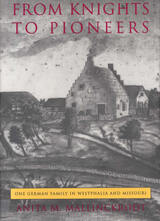 From Knights to Pioneers: One German Family in Westphalia and Missouri
Anita M. Mallinckrodt
Southern Illinois University Press, 1994
Anita M. Mallinckrodt traces the 750-year history of the Mallinckrodt family from its earliest documented beginnings in thirteenth-century Westphalia (in the Dortmund area) through immigration to Missouri in 1831 and beyond.
In part 1, Mallinckrodt tells the story of some of her family’s leading personalities in order to explicate the history and society of medieval and early modern Germany: the life and times of knight Ludwig (c. 1241) and crusader Gerd (c. 1450–1504); the 1451 and 1492 adventures of the mercenary knight Hermann and his son Wilhelm; the 1594 feuding of the noble brothers Dietrich and Hermann, which led to a double murder; the liberal Dortmund publisher Arnold’s struggles in the early 1800s to establish freedom of the press and to free Westphalian farmers from serfdom; and the wealthy, aristocratic Sister Pauline (b. 1817), founder of the Sisters of Charity and recently beatified for her efforts on behalf of the poor and blind children of her day.
In parts 2 and 3, Mallinckrodt focuses on the first of her forebears to immigrate to the New World—Julius and Emil in 1831, followed by Conrad, Hermann, August, Helene, Sophie, and Luise in 1838—and their immediate families and descendants in Missouri. These early pioneers cleared the forests, built schools and churches, supported German-language periodicals, and founded social and cultural organizations that would benefit later waves of immigrants. In the 1860s, they participated in their adopted country’s Civil War and held strong views toward slavery and the Union. Mallinckrodt ends her family’s history with the deaths of the Dortmund pioneers in the 1890s.
But From Knights to Pioneers is much more than a single family’s history. The experiences Mallinckrodt relates reflect those of many German families who left their mark on centuries of history and of many midwestern families transplanted from the Old World. Especially interesting is the continuity between the old and new ways of life—entries on genealogical tables need not end with the comment "immigrated to the USA," for immigrants often wrote notable chapters of family history that deserve recognition in their old homelands. Similarly, knowledge of pre-immigration history is essential for those Americans whose traditions surely did not begin, as oral history often suggests, with the fact that "great-grandfather arrived in the Midwest from Germany in 1831." Thus the purpose of this book is to set a family’s immigration chapter against its European background, without passing judgment on the cultural influence of outstanding individuals in the United States or of German immigration per se.
Drawing on her extensive research in both Europe and the United States, Mallinckrodt presents an exceptionally detailed picture of the social and political contexts of each of her subjects. The richness of her exposition of both the Old World background and the lives of the immigrants to the New World offers important insights into aspects of European and American history.
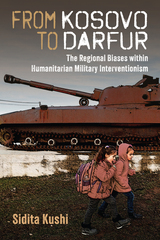 From Kosovo to Darfur: The Regional Biases within Humanitarian Military Interventionism
Sidita Kushi
University of Michigan Press, 2025 Why are some violent crises more likely to prompt humanitarian military interventions than others? Conventional wisdom says that humanitarian military interventions occur due to national interests, shared values and norms, or economic benefits for the interveners. Yet neither of these factors can fully explain the selectivity of such interventions. The international community continues to ignore the decades-long suffering in Darfur, often dismisses the genocidal policies within Myanmar, and even perpetuates the suffering in contemporary Yemen, while undertaking humanitarian-laden missions in Libya, Syria, and the Balkans.
Using in-depth case studies and new data on all post–Cold War internal armed conflicts matched to third-party responses, From Kosovo to Darfur offers the first regionally sensitive analysis of humanitarian military intervention since the end of the Cold War. It shows that international military interventions in the context of acute humanitarian crises are driven by different pathways within the Western versus the non-Western world and fueled by elite perceptions of the crisis, making interventions closer to the geographic and cultural West most probable and most intense. As our international community becomes increasingly interdependent and aware of human suffering across borders, From Kosovo to Darfur points to new pathways of conflict trajectories and reveals vital implications for leaders, scholars, and nongovernmental actors advocating for or against international military intervention as a policy choice.
 From Kosovo to Kabul and Beyond: Human Rights and International Intervention
David Chandler
Pluto Press, 2006 'That the human rights rationale for interventionism is a genuine menace to human rights and to democracy is convincingly demonstrated in this fine book.'
Edward S. Herman
'Chandler deftly unpicks the hypocrisy and double standards behind our "ethical" bombing in the balkans and Asia.'
Independent
'Chandler's book is thorough and relentless in its critique of human rights consensus.'
Spiked
'David Chandler has emerged in recent years as one of Britain's foremost critics of the hypocrisy of human rights.'
The Spectator
This new and updated edition of David Chandler's acclaimed book takes a critical look at the way in which human rights issues have been brought to the fore in international affairs. The UN and Nato's new policy of interventionism--as shown in Iraq, Somalia, Bosnia, Kosovo and East Timor--has been hailed as part of a new 'ethical' approach to foreign policy. David Chandler offers a rigorous critique of this apparently benign shift in international relations to reveal the worrying political implications of a new human rights discourse. He asks why the West can now prioritise the rights of individuals over the traditional rights of state sovereignty, and why this shift has happened so quickly. Charting the development of a human rights-based foreign policy, he considers the theoretical problems of defining human rights and sets this within the changing framework of international law. Meticulous and compelling, From Kosovo to Kabul and Beyond offers a disturbing insight into the political implications of a human rights-led foreign policy, and the covert agenda that it conceals.
David Chandler is Professor of International Relations, Centre for the Study of Democracy, University of Westminster. He has written widely on democracy, human rights and international relations and is also the author of Bosnia: Faking Democracy After Dayton (Pluto Press, 1999/ 2000) and Constructing Global Civil Society: (2004), editor of Rethinking Human Rights: Critical Approaches to International Politics (2002) and Peace without Politics: Ten Years of State-Building in Bosnia (2005), and co-editor of Global Civil Society: Contested Futures (2005).
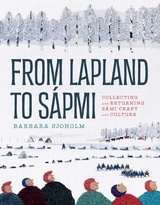 From Lapland to Sápmi: Collecting and Returning Sámi Craft and Culture
Barbara Sjoholm
University of Minnesota Press, 2023 A cultural history of Sápmi and the Nordic countries as told through objects and artifacts
Material objects—things made, used, and treasured—tell the story of a people and place. So it is for the Indigenous Sámi living in Norway, Sweden, Finland, and Russia, whose story unfolds across borders and centuries, in museums and private collections. The objects created by the Sámi for daily and ceremonial use were purchased and taken by Scandinavians and foreign travelers in Lapland from the seventeenth century to the present, and the collections described in From Lapland to Sápmi map a complex history that is gradually shifting to a renaissance of Sámi culture and craft, along with the return of many historical objects to Sápmi, the Sámi homeland. The Sámi objects first collected in Lapland by non-Indigenous people were drums and other sacred artifacts, but later came to include handmade knives, decorated spoons, clothing, and other domestic items owned by Sámi reindeer herders and fishers, as well as artisanal crafts created for sale. Barbara Sjoholm describes how these objects made their way via clergy, merchants, and early scientists into curiosity cabinets and eventually to museums in Copenhagen, Stockholm, Oslo, and abroad. Musicians, writers, and tourists also collected Sámi culture for research and enjoyment. Displays of Sámi material culture in Scandinavia and England, Germany, and other countries in museums, exhibition halls, and even zoos often became part of racist and colonial discourse as examples of primitive culture, and soon figured in the debates of ethnographers and curators over representations of national folk traditions and “exotic” peoples. Sjoholm follows these objects and collections from the Age of Enlightenment through the twentieth century, when artisanship took on new forms in commerce and museology and the Sámi began to organize politically and culturally. Today, several collections of Sámi objects are in the process of repatriation, while a new generation of artists, activists, and artisans finds inspiration in traditional heritage and languages. Deftly written and amply illustrated, with contextual notes on language and Nordic history, From Lapland to Sápmi brings to light the history of collecting, displaying, and returning Sámi material culture, as well as the story of Sámi creativity and individual and collective agency.
From Latin to Italian: An Historical Outline of the Phonology and Morphology of the Italian Language
C.H. Grandgent
Harvard University Press A guidebook for students of Romance philology, this volume presents the phonetic and morphological principles that emerge from a study of the development of the ancient tongue into the standard of speech of today. Inasmuch as this language is in its origin mainly Tuscan, and especially Florentine, the examination has to do mostly with Florence and Tuscany, but other dialects are cited when they have at any period made contributions to the literary vocabulary. The discussion of inflectional forms really includes the more conspicuous changes in syntax. In the midst of a mass of detail the author has attempted to keep the fundamental outlines of his subject clear. He has tried also to explain the phenomena in the light of our present knowledge of phonetics and of linguistic history.
 From Latin to Romance in Sound Charts
Peter Boyd-Bowman
Georgetown University Press, 1980 This handbook offers a synopsis of the regular changes that Latin words underwent in the course of their evolution into modern Romance languages (Italian, Spanish, Portuguese, and French, with their English cognates). Although it is intended for the nonspecialist, students of Romance philology will find it useful as a ready reference and as a source of abundant examples of Latin sound changes. The synopsis is presented in the form of separate alphabetical charts for each major sound change. The rules, stated as simply as possible, do not generally explain the evolution of the changes, but only the end results. For those desiring further information, there are notes after most rules outlining exceptions to or modifications of that rule and often sketching successive stages in the development of the sound. Several minor or sporadic sound changes are also treated in note form. Each chart is supplemented by a list of additional words illustrating the same sound change. From Latin to Roman in Sound Charts has been used successfully as a graduate level text for such courses as History of Spanish, History of French, and Romance Linguistics.
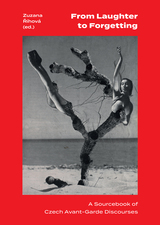 From Laughter to Forgetting: A Sourcebook of Czech Avant-Garde Discourses
Edited by Zuzana Ríhová
Karolinum Press, 2023 A comprehensive reader on the Czech literary avant-garde.
In recent years a prominent trend in the study of European modernism and the avant-garde has been increased attention to texts and traditions that have long stood in the shadow of the French, German, and British traditions that dominate the canon. Yet this more expansive view of European modernism and the avant-garde has been hindered by the limited range of texts available outside the original languages. This book addresses that problem by offering a wide-ranging selection of literary, theoretical, and documentary sources from one of the most dynamic and original European avant-garde traditions: that of the first Czechoslovak Republic and of the Bohemian lands. The Czech avant-garde is in many respects the ideal “alternative” avant-garde to present in detail to a wider readership: it tracks Central European developments and was often influential internationally while being deeply embedded in particular cultural dynamics that produced original forms. This volume returns interwar Czech avant-garde writings to their place as a firmly embedded component of the European avant-garde.
From Liberal Values to Democratic Transition: Essays in Honor of Janos Kis
Ronald Dworkin
Central European University Press, 2004 The book contains twelve essays by Stephen Holmes, Frances M. Kamm, Mária Ludassy, Steven Lukes, Gyorgy Markus, András Sajó, Gáspár Miklós Tamás, Andrew Arato, Timothy Garton Ash, Béla Greskovits, Will Kymlicka, and Aleksander Smolar. The studies explore a wide scope of subjects that belong to disciplines ranging from moral philosophy, through theory of human rights, democratic transition, constitutionalism, to political economy. The common denominator of the studies collected is their reference to the scholarly output of János Kis, in honor of his sixtieth birthday. János Kis is a distinguished political philosopher who, after many years spent as a dissident under the Communist regime, emerged as an important political figure in Hungary's transition to democracy. Currently he is University Professor of Philosophy at Central European University, Budapest.
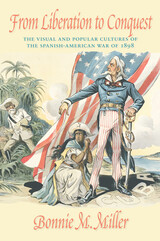 From Liberation to Conquest: The Visual and Popular Cultures of the Spanish-American War of 1898
Bonnie M. Miller
University of Massachusetts Press, 2011 The American people overwhelmingly supported the nation's entry into the Spanish-American War of 1898, which led to U.S. imperial expansion into the Caribbean and Pacific. In this book, Bonnie M. Miller explores the basis of that support, showing how the nation's leading media makers—editorialists, cartoonists, filmmakers, photographers, and stage performers—captured the public's interest in the Cuban crisis with heart-rending depictions of Cuban civilians, particularly women, brutalized by bloodthirsty Spanish pirates.
Although media campaigns initially advocated for the United States to step in to rescue Cuba from the horrors of colonial oppression, the war ended just months later with the U.S. acquisition of Spain's remaining empire, including Cuba, Puerto Rico, Guam, and the Philippines. President William McKinley heeded the call for war, with the American people behind him, and then proceeded to use the conflict to further his foreign policy agenda of expanding U.S. interests in the Caribbean and Far East.
Miller examines the shifting media portrayals of U.S. actions for the duration of the conflict, from liberation to conquest. She shows how the media capitalized on the public's thirst for drama, action, and spectacle and adapted to emerging imperial possibilities. Growing resistance to American imperialism by the war's end unraveled the consensus in support of U.S policy abroad and produced a rich debate that found expression in American visual and popular culture.
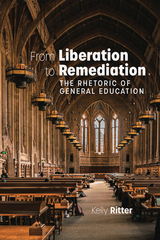 From Liberation to Remediation: The Rhetoric of General Education
Kelly Ritter
Utah State University Press, 2026 Ever since its origins as a post–World War II movement designed to democratize education and promote civic engagement, General Education has been the source and subject of political battles. From Liberation to Remediation explores how Gen Ed’s initial goal of providing a common intellectual foundation for all students has been gradually undermined, resulting in a growing perception that General Education is unnecessary for high-achieving students and is instead a remedial path for those deemed underprepared.
Kelly Ritter addresses how lawmakers, for-profit testing companies, and even universities fuel public misconceptions of what Gen Ed can provide for our democracy and the role that a broad-based college education plays in social uplift. Tracing the history of the public rhetoric that persuades parents and students to see these courses as a set of interchangeable precollege credits to gain (or game) by any means necessary, she examines how positive and negative public responses to the curricula affected the position of core subjects in US universities, focusing on first-year writing. She also explores the role local, state, and organizational politics played in Gen Ed’s positioning, including decisions related to race, social class, and educational attainment; the impact credit-by-exemption and seamless transfer had on the quality and import of Gen Ed programming in both high schools and colleges; and the perceived use-value of the courses themselves in the face of rising college costs. Finally, she considers which student populations have benefited from the denigration of Gen Ed’s value and which have been left behind.
Drawing on archival research and case studies, From Liberation to Remediation raises important questions about equity, access, and the role of General Education in US higher education’s future and demonstrates that recovering the original post-war democratizing principles and practices of Gen Ed is critical to the continuance of a literate, empathetic, and civic-minded democracy for the twenty-first century.
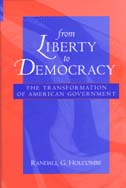 From Liberty to Democracy: The Transformation of American Government
Randall G. Holcombe
University of Michigan Press, 2002 At the nation's founding, the fundamental principle underlying American government was liberty, and the nation's new government was designed to protect the rights of individuals. The American founders intended to design a government that would protect the rights of its citizens, and at that time the most serious threat to people's rights was government. Thus, the United States government was designed with a constitutionally limited scope to preserve the rights of individuals and limit the powers of government.
The government's activities during two world wars and the Great Depression greatly increased its involvement in people's economic affairs, and by the time of Lyndon Johnson's Great Society, the transformation was complete. By the end of the twentieth century, the fundamental principle underlying American government had been transformed to democracy, and public policy was designed to further the will of the majority. The result has been a government that is larger and broader in scope.
From Liberty to Democracy examines American political history using the framework of public choice theory to show how American government grew more democratic, and how this resulted in an increase in the size and scope of government. It should appeal to historians, political scientists, and economists who are interested in the evolution of American government but does not assume any specialized training and can be read by anyone interested in American political history.
Randall G. Holcombe is DeVoe Moore Professor of Economics, Florida State University
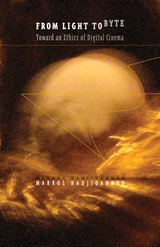 From Light to Byte: Toward an Ethics of Digital Cinema
Markos Hadjioannou
University of Minnesota Press, 2012 Cinema has been undergoing a profound technological shift: celluloid film is being replaced by digital media in the production, distribution, and reception of moving images. Concerned with the debate surrounding digital cinema’s ontology and the interrelationship between cinema cultures, From Light to Byte investigates the very idea of change as it is expressed in the current technological transition. Markos Hadjioannou asks what is different in the way digital movies depict the world and engage with the individual and how we might best address the issue of technological shift within media archaeologies. Hadjioannou turns to the technical basis of the image as his first point of departure, considering the creative and perceptual activities of moviemakers and viewers. Grounded in film history, film theory, and philosophy, he explores how the digital configures its engagement with reality and the individual while simultaneously replaying and destabilizing celluloid’s own structures. He observes that, where film’s photographic foundation encourages an existential association between individual and reality, digital representations are graphic renditions of mathematical codes whose causal relations are more difficult to trace. Throughout this work Hadjioannou examines how the two technologies set themselves up with reference to reality, physicality, spatiality, and temporality, and he concludes that the question concerning digital cinema is ultimately one of ethical implications—a question, that is, of the individual’s ability to respond to the image of the world.
From Lisbon to the World: Fernando Pessoa's Enduring Literary Presence
George Monteiro
Sussex Academic Press, 2022 Fernando Pessoa is one of the 20th centurysgreatest poets. Until some years ago known in the English-speaking world only among a minority of connaisseurs, his work is finally being translatedinto English. Born in Lisbon in 1888, Pessoa was only forty-seven when he died, but he left behind a staggering number of unpublished manuscripts that are still beingbrought to light. George Steiner heralded the day Pessoa discovered his major Portuguese heteronyms.Today well over a hundred Pessoa heteronyms are known. Lately, another Pessoa is emerging - an English writer and thinker.In this volume Monteiro continues to explore and interpret the world of Pessoa to English-speaking readers.
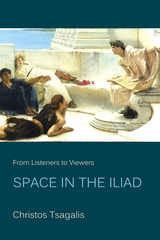 From Listeners to Viewers: Space in the Iliad
Christos Tsagalis
Harvard University Press, 2012 What do we mean by “space” in the Iliad? The aim of this book is to offer a systematic and comprehensive presentation of the different types and functions of space in the earliest work of Greek literature. By adopting a twofold division between simple and embedded story space, the former pertaining to the actions of characters and the latter to their thoughts, Christos Tsagalis shows how character drawing and authority are deeply influenced by active spatial representation.
Similes and descriptive passages, in which space looms large, are also viewed in a new light as the author explores the relation between space designated in the similes and in the corresponding action of the main narrative. Given the importance in cognitive theory of the role of memory in an oral medium such as epic song, the book analyzes Homeric modes of visual memory, implicit knowledge, and mnemonic formats in order to better understand the composition and presentation of descriptive and ekphrastic passages, with special emphasis on the numerous prized objects and the monumental shield of Achilles.
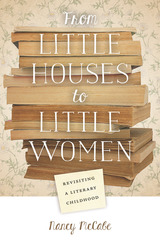 From Little Houses to Little Women: Revisiting a Literary Childhood
Nancy McCabe
University of Missouri Press, 2018 A typical travel book takes readers along on a trip with the author, but a great travel book does much more than that, inviting readers along on a mental and spiritual journey as well. This distinction is what separates Nancy McCabe’s From Little Houses to Little Women from the typical and allows it to take its place not only as a great travel book but also as a memoir about the children’s books that have shaped all of our imaginations. McCabe, who grew up in Kansas just a few hours from the Ingalls family’s home in Little House on the Prairie, always felt a deep connection with Laura Ingalls Wilder, author of the Little House series. McCabe read Little House on the Prairie during her childhood and visited Wilder sites around the Midwest with her aunt when she was thirteen. But then she didn’t read the series again until she decided to revisit in adulthood the books that had so influenced her childhood. It was this decision that ultimately sparked her desire to visit the places that inspired many of her childhood favorites, taking her on a journey that included stops in the Missouri of Laura Ingalls Wilder, the Minnesota of Maud Hart Lovelace, the Massachusetts of Louisa May Alcott, and even the Canada of Lucy Maud Montgomery.
From Little Houses to Little Women reveals McCabe’s powerful connection to the characters and authors who inspired many generations of readers. Traveling with McCabe as she rediscovers the books that shaped her and ultimately helped her to forge her own path, readers will enjoy revisiting their own childhood favorites as well.
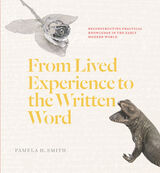 From Lived Experience to the Written Word: Reconstructing Practical Knowledge in the Early Modern World
Pamela H. Smith
University of Chicago Press, 2022 How and why early modern European artisans began to record their knowledge.
In From Lived Experience to the Written Word, Pamela H. Smith considers how and why, beginning in 1400 CE, European craftspeople began to write down their making practices. Rather than simply passing along knowledge in the workshop, these literate artisans chose to publish handbooks, guides, treatises, tip sheets, graphs, and recipe books, sparking early technical writing and laying the groundwork for how we think about scientific knowledge today.
Focusing on metalworking from 1400–1800 CE, Smith looks at the nature of craft knowledge and skill, studying present-day and historical practices, objects, recipes, and artisanal manuals. From these sources, she considers how we can reconstruct centuries of largely lost knowledge. In doing so, she aims not only to unearth the techniques, material processes, and embodied experience of the past but also to gain insight into the lifeworld of artisans and their understandings of matter.
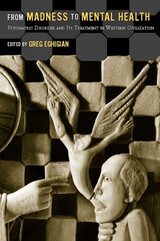 From Madness to Mental Health: Psychiatric Disorder and Its Treatment in Western Civilization
Eghigian, Greg
Rutgers University Press, 2009 From Madness to Mental Health neither glorifies nor denigrates the contributions of psychiatry, clinical psychology, and psychotherapy, but rather considers how mental disorders have historically challenged the ways in which human beings have understood and valued their bodies, minds, and souls. Greg Eghigian has compiled a unique anthology of readings, from ancient times to the present, that includes Hippocrates; Julian of Norwich's Revelations of Divine Love, penned in the 1390s; Dorothea Dix; Aaron T. Beck; Carl Rogers; and others, culled from religious texts, clinical case studies, memoirs, academic lectures, hospital and government records, legal and medical treatises, and art collections. Incorporating historical experiences of medical practitioners and those deemed mentally ill, From Madness to Mental Health also includes an updated bibliography of first-person narratives on mental illness compiled by Gail A. Hornstein.
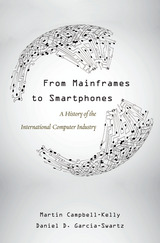 From Mainframes to Smartphones: A History of the International Computer Industry
Martin Campbell-Kelly and Daniel D. Garcia-Swartz
Harvard University Press, 2015 This compact history traces the computer industry from its origins in 1950s mainframes, through the establishment of standards beginning in 1965 and the introduction of personal computing in the 1980s. It concludes with the Internet’s explosive growth since 1995. Across these four periods, Martin Campbell-Kelly and Daniel Garcia-Swartz describe the steady trend toward miniaturization and explain its consequences for the bundles of interacting components that make up a computer system. With miniaturization, the price of computation fell and entry into the industry became less costly. Companies supplying different components learned to cooperate even as they competed with other businesses for market share. Simultaneously with miniaturization—and equally consequential—the core of the computer industry shifted from hardware to software and services. Companies that failed to adapt to this trend were left behind.
Governments did not turn a blind eye to the activities of entrepreneurs. The U.S. government was the major customer for computers in the early years. Several European governments subsidized private corporations, and Japan fostered R&D in private firms while protecting its domestic market from foreign competition. From Mainframes to Smartphones is international in scope and broad in its purview of this revolutionary industry.
 From Mammies to Militants: Domestics in Black American Literature from Charles Chesnutt to Toni Morrison
Trudier Harris
University of Alabama Press, 2023 Welfare queen, hot momma, unwed mother: these stereotypes of Black women share their historical conception in the image of the Black woman as domestic. Focusing on the issue of stereotypes, the new edition of Trudier Harris’s classic 1982 study From Mammies to Militants examines the position of the domestic in Black American literature with a new afterword bringing her analysis into the present.
From Charles Chesnutt’s The Marrow of Tradition to Toni Morrison’s The Bluest Eye, Black writers, some of whom worked as maids themselves, have manipulated the stereotype in a strategic way as a figure to comment on Black-white relations or to dramatize the conflicts of the Black protagonists. In fact, the characters themselves, like real-life maids, often use the stereotype to their advantage or to trick their oppressors.
Harris combines folkloristic, sociological, historical, and psychological analyses with literary ones, drawing on her own interviews with Black women who worked as domestics. She explores the differences between Northern and Southern maids and between “mammy” and “militant.” Her invaluable book provides a sweeping exploration of Black American writers of the twentieth century, with extended discussion of works by Charles Chesnutt, Kristin Hunter, Toni Morrison, Richard Wright, Ann Petry, William Melvin Kelley, Alice Childress, John A. Williams, Douglas Turner Ward, Barbara Woods, Ted Shine, and Ed Bullins. Often privileging political statements over realistic characterization in the design of their texts, the authors in Harris’s study urged Black Americans to take action to change their powerless conditions, politely if possible, violently if necessary. Through their commitment to improving the conditions of Black people in America, these writers demonstrate the connectedness of art and politics.
In her new afterword, “From Militants to Movie Stars,” Harris looks at domestic workers in African American literature after the original publication of her book in 1982. Exploring five subsequent literary treatments of Black domestic workers from Ernest J. Gaines’s A Lesson Before Dying to Lynn Nottage’s By the Way, Meet Vera Stark, Harris tracks how the landscape of representation of domestic workers has broken with tradition and continues to transform into something entirely new.
 From Mammies to Militants: Domestics in Black American Literature from Charles Chesnutt to Toni Morrison
Trudier Harris
University of Alabama Press, 2023 Welfare queen, hot momma, unwed mother: these stereotypes of Black women share their historical conception in the image of the Black woman as domestic. Focusing on the issue of stereotypes, the new edition of Trudier Harris’s classic 1982 study From Mammies to Militants examines the position of the domestic in Black American literature with a new afterword bringing her analysis into the present.
From Charles Chesnutt’s The Marrow of Tradition to Toni Morrison’s The Bluest Eye, Black writers, some of whom worked as maids themselves, have manipulated the stereotype in a strategic way as a figure to comment on Black-white relations or to dramatize the conflicts of the Black protagonists. In fact, the characters themselves, like real-life maids, often use the stereotype to their advantage or to trick their oppressors.
Harris combines folkloristic, sociological, historical, and psychological analyses with literary ones, drawing on her own interviews with Black women who worked as domestics. She explores the differences between Northern and Southern maids and between “mammy” and “militant.” Her invaluable book provides a sweeping exploration of Black American writers of the twentieth century, with extended discussion of works by Charles Chesnutt, Kristin Hunter, Toni Morrison, Richard Wright, Ann Petry, William Melvin Kelley, Alice Childress, John A. Williams, Douglas Turner Ward, Barbara Woods, Ted Shine, and Ed Bullins. Often privileging political statements over realistic characterization in the design of their texts, the authors in Harris’s study urged Black Americans to take action to change their powerless conditions, politely if possible, violently if necessary. Through their commitment to improving the conditions of Black people in America, these writers demonstrate the connectedness of art and politics.
In her new afterword, “From Militants to Movie Stars,” Harris looks at domestic workers in African American literature after the original publication of her book in 1982. Exploring five subsequent literary treatments of Black domestic workers from Ernest J. Gaines’s A Lesson Before Dying to Lynn Nottage’s By the Way, Meet Vera Stark, Harris tracks how the landscape of representation of domestic workers has broken with tradition and continues to transform into something entirely new.
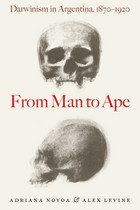 From Man to Ape: Darwinism in Argentina, 1870-1920
Adriana Novoa and Alex Levine
University of Chicago Press, 2010 Upon its publication, The Origin of Species was critically embraced in Europe and North America. But how did Darwin’s theories fare in other regions of the world? Adriana Novoa and Alex Levine offer here a history and interpretation of the reception of Darwinism in Argentina, illuminating the ways culture shapes scientific enterprise.
In order to explore how Argentina’s particular interests, ambitions, political anxieties, and prejudices shaped scientific research, From Man to Ape focuses on Darwin’s use of analogies. Both analogy and metaphor are culturally situated, and by studying scientific activity at Europe’s geographical and cultural periphery, Novoa and Levine show that familiar analogies assume unfamiliar and sometimes startling guises in Argentina. The transformation of these analogies in the Argentine context led science—as well as the interaction between science, popular culture, and public policy—in surprising directions. In diverging from European models, Argentine Darwinism reveals a great deal about both Darwinism and science in general.
Novel in its approach and its subject, From Man to Ape reveals a new way of understanding Latin American science and its impact on the scientific communities of Europe and North America.
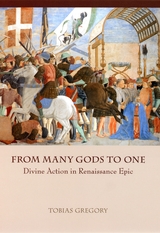 From Many Gods to One: Divine Action in Renaissance Epic
Tobias Gregory
University of Chicago Press, 2006 Epic poets of the Renaissance looked to emulate the poems of Greco-Roman antiquity, but doing so presented a dilemma: what to do about the gods? Divine intervention plays a major part in the epics of Homer and Virgil—indeed, quarrels within the family of Olympian gods are essential to the narrative structure of those poems—yet poets of the Renaissance recognized that the cantankerous Olympians could not be imitated too closely. The divine action of their classical models had to be transformed to accord with contemporary tastes and Christian belief.
From Many Gods to One offers the first comparative study of poetic approaches to the problem of epic divine action. Through readings of Petrarch, Vida, Ariosto, Tasso, and Milton, Tobias Gregorydescribes the narrative and ideological consequences of the epic’s turn from pagan to Christian. Drawing on scholarship in several disciplines—religious studies, classics, history, and philosophy, as well as literature—From Many Gods to One sheds new light on two subjects of enduring importance in Renaissance studies: the precarious balance between classical literary models and Christian religious norms and the role of religion in drawing lines between allies and others.
 From Many, One: Readings in American Political and Social Thought
Richard C. Sinopoli, Editor
Georgetown University Press, 1997 Unique among readers in American political and social thought, From Many, One is a broad and balanced anthology that explores the problem of diversity and American political identity throughout American history. From the classic texts of the American political tradition to diverse minority writings, this book offers a wide spectrum of ideas about identity, gender, immigration, race, and religion, and addresses how these issues relate to the concept of national unity. Covering the gamut of viewpoints from majority to minority, from conservative to radical, from assimilationist to separatist, the authors range from the Founding Fathers to Frederick Jackson Turner, from Abigail Adams to bell hooks and Catharine MacKinnon; from Abraham Lincoln to Malcolm X; from Roger Williams to Ralph E. Reed. Sinopoli's extensive introductory and concluding essays set the context for and draw out the implications of the fifty readings. The conclusion includes case studies of three minority groups—homosexuals, Mexican-Americans, and Chinese-Americans—to illustrate further the themes of the volume. Brief introductions to each reading and to each of the five sections provide background information. In examining one of the central questions of American public life—the issue of national diversity—From Many, One will be a useful text for courses in American political thought, sociology, American Studies, and American history.
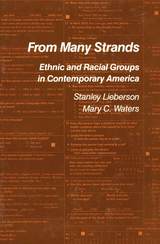 From Many Strands: Ethnic and Racial Groups in Contemporary America
Stanley Lieberson
Russell Sage Foundation, 1988 The 1980 Census introduced a radical change in the measurement of ethnicity by gathering information on ancestry for all respondents, regardless of how long ago their forebears migrated to America, and by allowing respondents of mixed background to list more than one ancestry. The result, presented for the first time in this important study, is a unique and sometimes startling picture of the nation's ethnic makeup. From Many Strands focuses on each of the sixteen principal European ethnic groups, as well as on major non-European groups such as blacks and Hispanics. The authors describe differences and similarities across a range of dimensions, including regional distribution, income, marriage patterns, and education. While some findings lend support to the "melting pot" theory of assimilation (levels of educational attainment have become more comparable and ingroup marriage is declining), other findings suggest the persistence of pluralism (settlement patterns resist change and some current occupational patterns date from the turn of the century). In these contradictions, and in the striking number of respondents who report no ethnic background or report it incorrectly, Lieberson and Waters find evidence of considerable ethnic flux and uncover the growing presence of a new, "unhyphenated American" ethnic strand in the fabric of national life. A Volume in the Russell Sage Foundation Census Series
 From Market-Places to a Market Economy: The Transformation of Rural Massachusetts, 1750-1850
Winifred Barr Rothenberg
University of Chicago Press, 1992 In this highly original empirical study, Winifred Barr Rothenberg documents the emergence of a market economy in rural Massachusetts between 1785 and 1800—decades before America's first industrial revolution. Drawing the data from exhaustive research in farm account books, probate documents, and town tax valuations the author makes a significant contribution to the long-standing and vigorous debate about the pace, pattern, and genesis of growth in the early American economy.
Rothenberg forcefully disputes recent historical interpretations of the preindustrial New England village as a so-called moral economy, insulated from the exigencies of the market. She discovers the simultaneous emergence of markets for farm produce, farm labor, and rural capital. Then, linking market integration to labor productivity growth and agricultural improvement, she confirms that market-led growth in Massachusetts agriculture lay at the origins of the American industrial revolution.
 From Martyrdom to Power: The Partido Acción Nacional in Mexico
Yemile Mizrahi
University of Notre Dame Press, 2003 From Martyrdom to Power provides a comprehensive examination of the origins, development, and rising electoral prominence of Mexico’s Partido Acción Nacional (PAN). Yemile Mizrahi, widely recognized as a leading authority on this topic, has based this book on extensive research and original field work over the past ten years. Her personal interviews with government officials and party leaders and her surveys of public opinion in three Mexican states enrich this unique study.
Mizrahi’s theoretical and empirical analysis of the electoral success of PAN is situated within a larger assessment of political parties and the changes they undergo. Her discussion of how and why political parties adjust to changes in the political landscape is particularly relevant to scholars of Latin America. Mizrahi contends that PAN party leaders have not acted quickly or decisively enough in making internal changes that will allow them to make a smooth transition from a survivalist minority party to Mexico’s ruling party. In contrast to the past, when the PAN’s main problems were associated with its inefficacy in the electoral arena, today the party confronts problems associated with its electoral success. Mizrahi argues that PAN’s relatively unchanged party structure presents serious obstacles to electoral expansion. Mizrahi’s account is analytically powerful and offers clear policy and political suggestions for her subject itself.
 From Martyrs to Planetary Croats: The Croatian Diaspora in Argentina
Nikolina Židek
Central European University Press, 2025 After the collapse of the fascist Independent State of Croatia (1941-1945), the most important contingent of political emigrants - about ten thousand people - found refuge in Perón's Argentina. This study presents the history of this emigrant community from its beginnings to the present day. The traumas of military defeat, the loss of an independent state, the post-war murders and forced migration initially formed the community’s identity. Over time, however, this Croatian diaspora also managed to reconfigure itself in the context of Western politics during the Cold War as victims of communism and Yugoslavia, and finally as democrats. For 45 years, this Argentinian community felt itself to be the active guardian of Croatian freedom. However, with the advent of independent Croatia in 1991, they found themselves faced with a disconcerting choice: whether to be Croats in the diaspora or Croats in the independent homeland.Extensive archival research, supplemented by oral testimony, helped Nikolina Židek identify instruments of intergenerational memory transmission between the first emigrant group in Argentina and their children and grandchildren, who share an identity rooted in traumatic history. She pieces together the puzzle of how a community that cherished its memory of the past became "planetary Croats" using new tools such as social media to connect with like-minded Croats in the homeland and around the world.
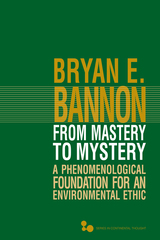 From Mastery to Mystery: A Phenomenological Foundation for an Environmental Ethic
Bryan E. Bannon
Ohio University Press, 2014 From Mastery to Mystery is an original and provocative contribution to the burgeoningfield of ecophenomenology. Informed by current debates in environmental philosophy, Bannon critiques the conception of nature as u200a“substance” that he finds tacitly assumed by the major environmental theorists. Instead, this book reconsiders the basic goals of an environmental ethic by questioning the most basic presupposition that most environmentalists accept: that nature is in need of preservation. Beginning with Bruno Latour’s idea that continuing to speak of nature in the way we popularly conceive of it is ethically and politically disastrous, this book describes a way in which the concept of nature can retain its importance in our discussion of the contemporary state of the environment. Based upon insights from the phenomenological tradition, specifically the work of Martin Heidegger and Maurice Merleau-Ponty, the concept of nature developed in the book preserves the best antihumanistic intuitions of environmentalists without relying on either a reductionistic understanding of nature and the sciences or dualistic metaphysical constructions.
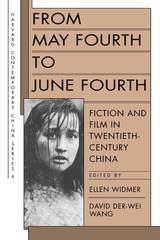 From May Fourth to June Fourth: Fiction and Film in Twentieth-Century China
Ellen Widmer
Harvard University Press, 1993 What do the Chinese literature and film inspired by the Cultural Revolution (1966–1976) have in common with the Chinese literature and film of the May Fourth movement (1918–1930)? This new book demonstrates that these two periods of the highest literary and cinematic creativity in twentieth-century China share several aims: to liberate these narrative arts from previous aesthetic orthodoxies, to draw on foreign sources for inspiration, and to free individuals from social conformity.
Although these consistencies seem readily apparent, with a sharper focus the distinguished contributors to this volume reveal that in many ways discontinuity, not continuity, prevails. Their analysis illuminates the powerful meeting place of language, imagery, and narrative with politics, history, and ideology in twentieth-century China.
Drawing on a wide range of methodologies, from formal analysis to feminist criticism, from deconstruction to cultural critique, the authors demonstrate that the scholarship of modern Chinese literature and film has become integral to contemporary critical discourse. They respond to Eurocentric theories, but their ultimate concern is literature and film in China’s unique historical context. The volume illustrates three general issues preoccupying this century’s scholars: the conflict of the rural search for roots and the native soil movement versus the new strains of urban exoticism; the diacritics of voice, narrative mode, and intertextuality; and the reintroduction of issues surrounding gender and subjectivity.
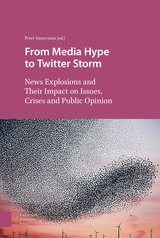 From Media Hype to Twitter Storm: News Explosions and Their Impact on Issues, Crises and Public Opinion
Edited by Peter Vasterman
Amsterdam University Press, 2018 The word media hype is often used as rhetorical argument to dismiss waves of media attention as overblown, disproportional and exaggerated. But these explosive news waves, as well as - nowadays - the twitter storms, are object of scientific research, because they are an important phenomenon in the public area. Sometimes it is indeed 'much ado about nothing' but in many cases these media storms have play an important role in political issues, scandals and crises. Twitter storms sometimes ruin reputations within hours. Although different concepts are used, such as media hypes, news waves, media storms, information cascades or risk amplification, all the studies in this book refer to the same process in which key events trigger a chain of reactions and interactions, building up huge news waves in the media or rapidly spreading social epidemics in the social media. This book offers the first comprehensive overview of this important topic. It is not only interesting for scholars and students in media and journalism, but also for professionals in PR and communication, crisis communication and reputation management.
From Melies to New Media: Spectral Projections
Wendy Haslem
Intellect Books, 2019 From Méliès to New Media is an exploration of the presence and importance of film history in digital culture. The author demonstrates that new media forms are not only indebted to, but firmly embedded within the traditions and conventions of early film culture. This book presents a comparative examination of pre-cinema and new media: early film experiments with contemporary music videos; silent films and their digital restorations; German Expressionist film and post-noir cinema; French Gothic film and the contemporary digital remake; and more. Using a media archaeology approach, Wendy Haslem envisages the potential of new discoveries that foreground forgotten or marginalized contributions to film history.
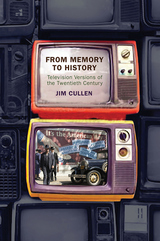 From Memory to History: Television Versions of the Twentieth Century
Jim Cullen
Rutgers University Press, 2021 Our understanding of history is often mediated by popular culture, and television series set in the past have provided some of our most indelible images of previous times. Yet such historical television programs always reveal just as much about the era in which they are produced as the era in which they are set; there are few more quintessentially late-90s shows than That ‘70s Show, for example.
From Memory to History takes readers on a journey through over fifty years of historical dramas and sitcoms that were set in earlier decades of the twentieth century. Along the way, it explores how comedies like M*A*S*H and Hogan’s Heroes offered veiled commentary on the Vietnam War, how dramas ranging like Mad Men echoed current economic concerns, and how The Americans and Halt and Catch Fire used the Cold War and the rise of the internet to reflect upon the present day. Cultural critic Jim Cullen is lively, informative, and incisive, and this book will help readers look at past times, present times, and prime time in a new light.
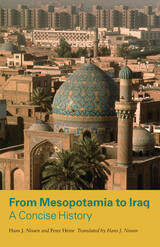 From Mesopotamia to Iraq: A Concise History
Hans J. Nissen and Peter Heine
University of Chicago Press, 2009 The recent reopening of Iraq’s National Museum attracted worldwide attention, underscoring the country’s dual image as both the cradle of civilization and a contemporary geopolitical battleground. A sweeping account of the rich history that has played out between these chronological poles, From Mesopotamia to Iraq looks back through 10,000 years of the region’s deeply significant yet increasingly overshadowed past. Hans J. Nissen and Peter Heine begin by explaining how ancient Mesopotamian inventions—including urban society, a system of writing, and mathematical texts that anticipated Pythagoras—profoundly influenced the course of human history. These towering innovations, they go on to reveal, have sometimes obscured the major role Mesopotamia continued to play on the world stage. Alexander the Great, for example, was fascinated by Babylon and eventually died there. Seventh-century Muslim armies made the region one of their first conquests outside the Arabian peninsula. And the Arab caliphs who ruled for centuries after the invasion built the magnificent city of Baghdad, attracting legions of artists and scientists. Tracing the evolution of this vibrant country into a contested part of the Ottoman Empire, a twentieth-century British colony, a republic ruled by Saddam Hussein, and the democracy it has become, Nissen and Heine repair the fragmented image of Iraq that has come to dominate our collective imagination. In hardly any other continuously inhabited part of the globe can we chart such developments in politics, economy, and culture across so extended a period of time. By doing just that, the authors illuminate nothing less than the forces that have made the world what it is today.
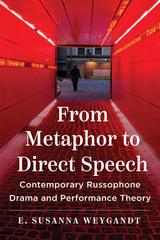 From Metaphor to Direct Speech: Contemporary Russophone Drama and Performance Theory
E. Susanna Weygandt
University of Wisconsin Press, 2025 New Drama—a collection of actors, directors, and playwrights in Russia, Ukraine, and Belarus—is one of the most active and vibrant artistic movements in the Russophone world today yet remains understudied in the West. E. Susanna Weygandt demonstrates that the major innovation of New Drama is a sonic turn, an aesthetic development that moves away from traditional, Stanislavskian embodied performance to something almost purely aural. New Drama, which began in the tumult following the collapse of the Soviet Union and continues even in an increasingly censorious Russia today, emphasizes contemporary social issues and privileges disadvantaged voices, using documentary modes to literally bring the voices of the dispossessed to the ears of the audience members.
As a result, the Russophone New Dramatists speak dissent and dramatize resistance. Ultimately, they shift theatrical productions from something constrained and limited, in both place and time, to an ephemeral but unbounded gateway for social activism. The sonic stage thus effectively functions as a social forum, transposing action from the actors to the audience. From Metaphor to Direct Speech therefore contributes to cultural as well as performance studies, offering a compelling look not just at developments in theatrical modes but also at dissent and cultural aesthetics in Russia today.
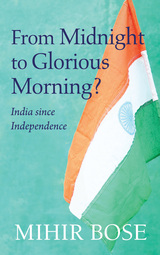 From Midnight to Glorious Morning?: India Since Independence
Mihir Bose
Haus Publishing, 2017 Mihir Bose was born in January 1947. Eight months later, India became a modern, free nation. The country he knew growing up in the 1960s has undergone vast and radical change. India today exports food, sends space probes to Mars, and, all too often, Indian businesses rescue their ailing competitors in the West.
In From Midnight to Glorious Morning?, Bose travels the length and breadth of India to explore how a country that many doubted would survive has been transformed into one capable of rivaling China as the world’s preeminent economic superpower. Multifarious challenges still continue to plague the country: although inequality and corruption are issues not unique to India, such a rapid ascent to global prominence creates a precarious position. However, as Bose outlines, this rapid ascent provides evidence that India is ever capable of making great strides in the face of great adversity.
Bose’s penetrating analysis of the last seventy years asks what is yet to be done for India in order to fulfill the destiny with which it has been imbued. The predictions of doom in August 1947 have proved to be unfounded; the growth of the nation in population and capital has been exponential, and there is much to celebrate. But Bose’s nuanced, personal, and trenchant book shows that it is naïve to pretend the hoped-for bright morning has yet dawned.
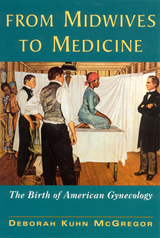 From Midwives to Medicine: The Birth of American Gynecology
McGregor, Deborah K
Rutgers University Press, 1998 From Midwives to Medicine examines the development of modern medical treatment of women and the related history of women's health in the mid-1800s. McGregor looks not only at the medical figures who devised and practiced the innovative therapist, but also at the history of the patient experience in the development and the professionalization of a medical specialty. In exploring the controversial career of J. Marion Sims, "the father of gynecology," and the history of the Woman's Hospital of the State of New York, McGregor chronicles the emergence of a practice involving previously untried medical techniques and the use of experimentation on patients according to a social hierarchy based on race and sex.
Using patient records and archival material from the female governors and administrators at the hospital, From Midwives to Medicine shows how a new medical practice developed out of the changing patterns and historical experiences of childbirth, as well as out of the context of the social relations f the sexes. Sim's patients were slave women in the antebellum South, poor Irish immigrants in the industrial North, and upper-class white. Protestant, Manhattan socialites who sought help for their "hysterical" symptoms. During his career, which began in the South and flourished at the Women's Hospital in New York. Sims performed and perfected his technique to "cure" vesico-vaginal fistulas, the tears of childbirth, from which so many women suffered. But Sims achieved these successes on the operating table only after years of practicing his "silver suture" technique on unanesthetized slave women, who he believed "by the nature of their race... had a specific physiological tolerance for pain unknown to whites."
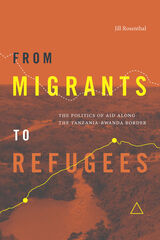 From Migrants to Refugees: The Politics of Aid along the Tanzania-Rwanda Border
Jill Rosenthal
Duke University Press, 2023 In From Migrants to Refugees Jill Rosenthal tells the history of how Rwandan migrants in a Tanzanian border district became considered either citizens or refugees as nation-state boundaries solidified in the wake of decolonization. Outlining the process by which people who have long lived and circulated across the Rwanda-Tanzania border came to have a national identity, Rosenthal reveals humanitarian aid’s central role in the ideological processes of decolonization and nation building. From precolonial histories to the first Rwandan refugee camps during decolonization in the 1960s to the massive refugee camps in the 1990s, Rosenthal highlights the way that this area became a testing ground for novel forms of transnational aid to refugees that had global implications. As local and national actors, refugees, and international officials all attempted to control the lives and futures of refugee groups, they contested the authority of the nation-state and the international refugee regime. This history, Rosenthal demonstrates, illuminates how tensions between state and international actors divided people who share a common history, culture, and language across national borders.
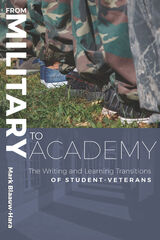 From Military to Academy: The Writing and Learning Transitions of Student-Veterans
Mark Blaauw-Hara
Utah State University Press, 2021 Grounded in case-study research, this book explores the writing and learning transitions of military veterans at the college level. Providing meaningful research into the ways adult learners bring their knowledge to the classroom, From Military to Academy offers new ways of thinking about pedagogy beyond the “traditional” college experience.
From Military to Academy is a detailed picture of how student-veterans may experience the shift to the college experience and academic writing. Grounding his research in the experiences of student-veterans at a community college, Blaauw-Hara integrates adult learning theory, threshold concepts, genre analysis, and student-veteran scholarship to help readers understand the challenges student-veterans experience and the strengths they bring as they enter the academic writing environment. Each chapter takes a different theoretical approach to frame student-veterans’ experiences, and Blaauw-Hara ends each chapter with specific, actionable pedagogical suggestions.
Composition studies scholars especially have demonstrated an ongoing interest in and commitment to understanding the experiences of student-veterans from military service to postsecondary education. From Military to Academy helps college writing faculty and writing program administrators understand and support the growing numbers of student-veterans who are making the transition to higher education.
From Mineralogy to Geology: The Foundations of a Science, 1650-1830
Rachel Laudan
University of Chicago Press, 1987 "A fine treatment of this critical time in geology's history. Although it goes against our standard histories of the field, Laudan defends her views convincingly. Her style is direct, with carefully reasoned personal opinions and interpretations clearly defined."—Jere H. Lipps, The Scientist
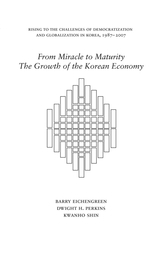 From Miracle to Maturity: The Growth of the Korean Economy
Barry Eichengreen, Dwight H. Perkins, and Kwanho Shin
Harvard University Press, 2012 The economic growth of South Korea has been a remarkable success story. After the Korean War, the country was one of the poorest economies on the planet; by the twenty-first century, it had become a middle-income country, a member of the Organization of Economic Cooperation and Development (the club of advanced economies), and home to some of the world’s leading industrial corporations. And yet, many Koreans are less than satisfied with their country’s economic performance, given the continuing financial volatility and sluggish growth since the Korean economic crisis of 1997–1998.
From Miracle to Maturity offers a comprehensive qualitative and quantitative analysis of the growth of the Korean economy, starting with the aggregate sources of growth (growth of the labor force, the stock of capital, and productivity) and then delving deeper into the roles played by structural change, exports, foreign investment, and financial development. The authors provide a detailed examination of the question of whether the Korean economy is now underperforming and ask, if so, what can be done to solve the problem.
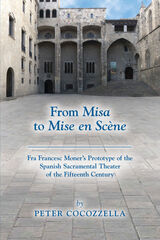 From Misa to Mise en Scène: Fra Francesc Moner’s Prototype of the Spanish Sacramental Theater of the Fifteenth Century
Peter Cocozzella
Arizona Center for Medieval and Renaissance Studies, 2020 As both layman and Franciscan friar, the Catalan writer known as Francesc Moner (ca 1463–1495) is one of the leading exponents of the bilingual (Catalan-Castilian) culture that flourished in Barcelona in the late 1400s. In his approach to Sepultura d’amor (Burial of Love), Moner’s longest poem, Peter Cocozzella focuses on the author’s ingenious version of a kind of parody that desacralizes but does not desecrate the celebration of the funeral Mass. Cocozzella discovers the aspects of Moner’s unconventional idea of a theater based on the dramatics of the monologue and on the transformation of the divine ritual into a human analogue of transubstantiation. This allegorical pattern validates the profile of the masterpiece in question as one of the earliest manifestations of the auto sacramental, the distinctive theatrical genre scripted in the language of Castile. The book includes the text of Sepultura and its translation.
 From Mission to Madness: LAST SON OF THE MORMON PROPHET
Valeen Tippetts Avery
University of Illinois Press, 1998 Brilliant and charismatic, David Hyrum Smith was a poet, painter, singer, philosopher, naturalist, and highly effective missionary for the Reorganized Church of Jesus Christ of Latter Day Saints. In this richly detailed biography, Valeen Tippetts Avery chronicles the life of the last son of Joseph Smith and his first wife, Emma. Avery draws on a large body of correspondence for details of David's life and on his poetry to reveal his personality and emotional struggles. She tells of his mental deterioration, starting with a probable breakdown early in 1870 and ending with his death in 1904 in the Northern Illinois Hospital and Asylum for the Insane in Elgin, where he had been confined for twenty-seven years.
"This is an astonishing accomplishment which not only tells the reader about a neglected historical figure, but about myriad neglected dimensions of both Mormon history and the history of religion in general." -- Jan Shipps, author of Mormonism: The Story of a New Religious Tradition
"This will stand alone as a biography of David H. Smith. . . . But it is also an insightful look at the times and environment from which the Smith family, and its ideas, emerged." -- Paul M. Edwards, author of Our Legacy of Faith: A Brief History of the Reorganized Church
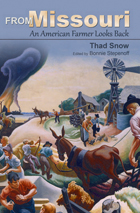 From Missouri: An American Farmer Looks Back
Thad Snow, Edited by Bonnie Stepenoff
University of Missouri Press, 2012 After years of subjecting the editors of St. Louis newspapers to eloquent letters on subjects as diverse as floods, tariffs, and mules, Thad Snow published his memoir From Missouri in his mid-seventies in 1954. He was barely retired from farming for more than half a century, mostly in the Missouri Bootheel, or “Swampeast Missouri,” as he called it. Now back in print with a new introduction by historian Bonnie Stepenoff, these sketches of a life, a region, and an era will delight readers new to this distinctive American voice as well as readers already familiar with this masterpiece of the American Midwest.
Snow purchased a thousand acres of southeast Missouri swampland in 1910, cleared it, drained it, and eventually planted it in cotton. Although he employed sharecroppers, he grew to become a bitter critic of the labor system after a massive flood and the Great Depression worsened conditions for these already-burdened workers. Shocking his fellow landowners, Snow invited the Southern Tenant Farmers Union to organize the workers on his land. He was even once accused of fomenting a strike and publicly threatened with horsewhipping.
Snow’s admiration for Owen Whitfield, the African American leader of the Sharecroppers’ Roadside Demonstration, convinced him that nonviolent resistance could defeat injustice. Snow embraced pacifism wholeheartedly and denounced all war as evil even as America mobilized for World War II after the attack on Pearl Harbor. In the late 1940s and early 1950s, he became involved with creating Missouri’s conservation movement. Near the end of his life, he found a retreat in the Missouri Ozarks, where he wrote this recollection of his life.
This unique and honest series of personal essays expresses the thoughts of a farmer, a hunter, a husband, a father and grandfather, a man with a soft spot for mules and dogs and all kinds of people. Snow’s prose reveals much about a way of life in the region during the first half of the twentieth century, as well as the social and political events that affected the entire nation. Whether arguing that a good stock dog should be left alone to do its work, explaining the process of making swampland suitable for agriculture, or putting forth his case for world peace, Snow’s ideas have a special authenticity because they did not come from an ivory tower or a think tank—they came From Missouri.
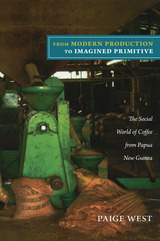 From Modern Production to Imagined Primitive: The Social World of Coffee from Papua New Guinea
Paige West
Duke University Press, 2012 In this vivid ethnography, Paige West tracks coffee as it moves from producers in Papua New Guinea to consumers around the world. She illuminates the social lives of the people who produce coffee, and those who process, distribute, market, and consume it. The Gimi peoples, who grow coffee in Papua New Guinea's highlands, are eager to expand their business and social relationships with the buyers who come to their highland villages, as well as with the people working in Goroka, where much of Papua New Guinea's coffee is processed; at the port of Lae, where it is exported; and in Hamburg, Sydney, and London, where it is distributed and consumed. This rich social world is disrupted by neoliberal development strategies, which impose prescriptive regimes of governmentality that are often at odds with Melanesian ways of being in, and relating to, the world. The Gimi are misrepresented in the specialty coffee market, which relies on images of primitivity and poverty to sell coffee. By implying that the "backwardness" of Papua New Guineans impedes economic development, these images obscure the structural relations and global political economy that actually cause poverty in Papua New Guinea.
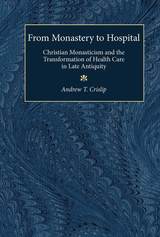 From Monastery to Hospital: Christian Monasticism and the Transformation of Health Care in Late Antiquity
Andrew T. Crislip
University of Michigan Press, 2005 From Monastery to Hospital traces the origin of the late Roman hospital to the earliest groups of Christian monastics. Often characterized as holy men and miracle-workers who transformed late antique spirituality, monks held an equally significant impact on the development of medicine in Late Antiquity. Andrew Crislip illuminates the innovative approaches to health care within the earliest monasteries that provided the model for the greatest medical achievement of Late Antiquity: the hospital. From Monastery to Hospital draws on some of the most vibrant areas of scholarship of the ancient world, including asceticism, the study of the body, history of the family, and the history of medicine. The book will be of interest to scholars and students of early Christianity, Roman History, the history of medicine, and Catholic, Coptic, and Eastern Orthodox history and theology. It will also be of interest to the broader field of history of Christianity, especially with its connections to charitable traditions in the church through the modern period. Andrew Crislip is Assistant Professor of Religion at the University of Hawaii.
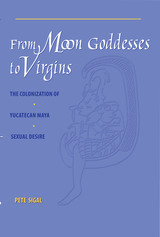 From Moon Goddesses to Virgins: The Colonization of Yucatecan Maya Sexual Desire
By Pete Sigal
University of Texas Press, 2000 For the preconquest Maya, sexuality was a part of ritual discourse and performance, and all sex acts were understood in terms of their power to create, maintain, and destroy society. As postconquest Maya adapted to life under colonial rule, they neither fully abandoned these views nor completely adopted the formulation of sexuality prescribed by Spanish Catholicism. Instead, they evolved hybridized notions of sexual desire, represented in the figure of the Virgin Mary as a sexual goddess, whose sex acts embodied both creative and destructive components. This highly innovative book decodes the process through which this colonization of Yucatan Maya sexual desire occurred. Pete Sigal frames the discussion around a series of texts, including the Books of Chilam Balam and the Ritual of the Bacabs, that were written by seventeenth and eighteenth century Maya nobles to elucidate the history, religion, and philosophy of the Yucatecan Maya communities. Drawing on the insights of philology, discourse analysis, and deconstruction, he analyzes the sexual fantasies, fears, and desires that are presented, often unintentionally, in the "margins" of these texts and shows how they illuminate issues of colonialism, power, ritual, and gender.
From Moonshine To Madison Avenue: Cultural History Of The Nascar Winston Cup Series
Mark D. Howell
University of Wisconsin Press, 1997 NASCAR Winston Cup stock car racing is America’s fastest growing and most popular spectator sport. This book is a cultural and social reading of Winston Cup racing, the people who made the sport what it is today, and the corporations who sponsor the participants during their thirty-two race, ten-month quest for the national championship.
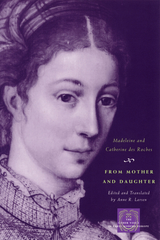 From Mother and Daughter: Poems, Dialogues, and Letters of Les Dames des Roches
Madeleine and Catherine des Roches
University of Chicago Press, 2006 Among the best-known and most prolific French women writers of the sixteenth century, Madeleine (1520–87) and Catherine (1542–87) des Roches were celebrated not only for their uncommonly strong mother-daughter bond but also for their bold assertion of poetic authority for women in the realm of belles lettres. The Dames des Roches excelled in a variety of genres, including poetry, Latin and Italian translations, correspondence, prose dialogues, pastoral drama, and tragicomedy; collected in From Mother and Daughter are selections from their celebrated oeuvre, suffused with an engaging and enduring feminist consciousness.
Madeleine and Catherine spent their entire lives in civil war–torn Poitiers, where a siege of the city, vandalism, and desecration of churches fueled their political and religious commentary. Members of an elite literary circle that would inspire salon culture during the next century, the Dames des Roches addressed the issues of the day, including the ravages of religious civil wars, the weak monarchy, education for women, marriage and the family, violence against women, and the status of women intellectuals. Through their collaborative engagement in shared public discourse, both mother and daughter were models of moral, political, and literary agency.
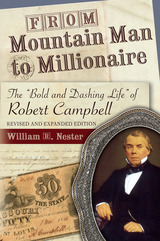 From Mountain Man to Millionaire: The "Bold and Dashing Life" of Robert Campbell, Revised and Expanded Edition
William R. Nester
University of Missouri Press, 2011 The western fur trade era—a time when trappers and traders endured constant danger from man, beast, and weather—was one of the most colorful periods in American history. Over a decade ago, William R. Nester wrote the first biography of Robert Campbell (1804–1879); the subsequent discovery of nearly five hundred new documents, most from two major caches of letters, led to this even-more-detailed and vivid account of Campbell’s self-described “bold and dashing life.” Campbell came to America from Ireland in 1822 and entered the fur trade soon after. He quickly rose from trapper to brigade leader to partner, all within a half dozen years, and this new edition includes an expanded narrative of his adventures in the Rocky Mountain fur trade. In the mid-1830s, having amassed considerable wealth, Campbell retired from the mountains and embarked on a new career. He returned to St. Louis and built up a business empire that embraced mercantile, steamboat, railroad, and banking interests, thus becoming a leading force behind the region’s economic development. A more extensive account of the cutthroat business world in which Campbell operated now enriches this portion of the book. Nester masterfully depicts the “sterling character” for which Campbell was renowned. Campbell enjoyed deep and enduring friendships and strong familial ties, both in America and abroad. Although he was an outstanding businessman and philanthropist, his personal life was marred by tragedy. Ten of his thirteen children died prematurely. Despite those tragic losses, his faith in God never faltered. He believed that all worldly successes should honor God and once wrote that , “all worldly gain is but dross.” This edition elucidates the complex relations among his family and chronicles both tragic events and humorous incidents in more depth.
Exploring the letters, journals, and account books that Campbell left behind, Nester places him in the context of the times in which he lived, showing the economic, political, social, and cultural forces that provided the opportunities and challenges that shaped his life. Nester provides new insights into Campbell’s ownership of slaves, his attitudes toward slavery, and his behind-the-scenes political and economic activities during the Civil War. This comprehensive exploration of Robert Campbell’s life depicts a fascinating era in American history.
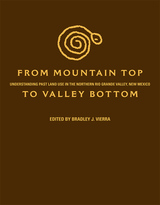 From Mountain Top to Valley Bottom: Understanding Past Land Use in the Northern Rio Grande Valley, New Mexico
Bradley J. Vierra
University of Utah Press, 2013 The American Southwest is characterized by environmentally and culturally diverse landscapes, which include the northern Rio Grande valley as it cuts through north-central New Mexico from Taos to Albuquerque. The region has a long and rich history of anthropological research primarily focused on the archaeological remains found along this valley corridor. Only recently has research involving large-scale surveys and excavations been conducted on the nearby mesas and mountains that form the rugged margins of the river valley. From Mountain Top to Valley Bottom incorporates this new research into a perspective that links the ever-changing and complementary nature of lowland and upland land use.
The essays in this collection are unified by three specific themes: landscape, movement, and technology. Landscape involves the ecological backdrop of the northern Rio Grande valley, including past and present environments. Movement refers to the positioning of people across the landscape along with the dynamic and fluid nature with which people—past and present—view their relationship with the “above” and “below.” Technology not only refers to the tools and facilities that past people may have used but to the organization of labor needed to cooperatively exploit a variety of subsistence resources and the exchange of products across the region. This volume provides both a cross section of current research from expert scholars and a broad perspective that seeks to integrate new data from lowland and upland contexts. From Mountain Top to Valley Bottom will appeal to those interested in obsidian source studies, geoarchaeology, past climatic regimes, foraging societies, early agriculture, ceramic technology, subsistence, early village formation, ethnogenesis, and historic multiethnic economies.
From Multiculturalism to Democratic Discrimination: The Challenge of Islam and the Re-emergence of Europe’s Nationalism
Alberto Spektorowski and Daphna Elfersy
University of Michigan Press, 2020 The effect of Islam on Western Europe has been profound. Spektorowski and Elfersy argue that it has transformed European democratic values by inspiring an ultra-liberalism that now faces an ultra-conservative backlash. Questions of what to do about Muslim immigration, how to deal with burqas, how to deal with gender politics, have all been influenced by western democracies’ grappling with ideas of inclusion and most recently, exclusion. This book examines those forces and ultimately sees, not an unbridgeable gap, but a future in which Islam and European democracies are compatible, rich, and evolving.
 From Myth to Fiction: The Saga of Hadingus
Georges Dumézil
University of Chicago Press, 1973 In this work the distinguished religious historian Georges Dumézil considers how the early mythology of a people can be creatively transposed into the epic of their origin or the "history" of their kings, or the source of their fiction. The Saga of Hadingus, written by a twelfth-century Danish "historian," Saxo-Grammaticus, provides an extraordinarily interesting instance of this kind of transposition. By comparing this work to a myth as it was handed down to Saxo, Professor Dumézil demonstrates how the saga can be seen as a literary structure derived from the religious structure of the myth.
As Professor Dumézil and others have shown, some Indo-European peoples, after their conversion to Christianity, have reordered an earlier mythology to constitute the epic of their origins. For instance, Celtic mythology became history in one case and a source of fiction in another; and from the two texts, Welsh and Irish, by comparison one can reconstruct the original myth.
The Scandinavian nations provide a unique case, for here the pre-Christian texts are still read and have preserved much of the area's mythology in its original form. In addition, we have the work of Saxo and other known writers who composed and signed human transpositions of this mythology purporting to be history. This permits Professor Dumézil to make observations of a rare kind, for knowing something of the author's personality facilitates an understanding of the process of transposition itself.
Professor Dumézil shows how Saxo began by wanting only to tell the story of Denmark and its rulers as nobly as he could—and then later on to extend that narrative back in time. This led him to the only extant Scandinavian literature—that centered on Iceland—that he reordered and reinterpreted to the greater glory of Denmark.
In order to provide a content for the reign of the third king of the Danish Skoldunger dynasty, Hadingus, Saxo simply reworked a Scandinavian account of the career of the god Njördr. In this light Professor Dumézil reads The Saga of Hadingus as a fascinating substitution of a psychological and completely personal narrative for a story of purely social value.
This book contains six appendixes including two that consider the relationship between myth and folklore. They complement Professor Dumézil's careful exegeses and imaginative scholarship to make this the most important, specialized work on Scandinavian mythology available in English.
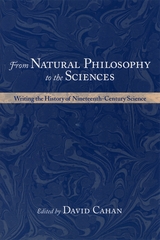 From Natural Philosophy to the Sciences: Writing the History of Nineteenth-Century Science
Edited by David Cahan
University of Chicago Press, 2003 During the nineteenth century, much of the modern scientific enterprise took shape: scientific disciplines were formed, institutions and communities were founded, and unprecedented applications to and interactions with other aspects of society and culture occurred.
In this book, eleven leading historians of science assess what their field has taught us about this exciting time and identify issues that remain unexamined or require reconsideration. They treat both scientific disciplines—biology, physics, chemistry, the earth sciences, mathematics, and the social sciences—in their specific intellectual and sociocultural contexts as well as the broader topics of science and medicine; science and religion; scientific institutions and communities; and science, technology, and industry.
Providing a much-needed overview and analysis of a rapidly expanding field, From Natural Philosophy to the Sciences will be essential for historians of science, but also of great interest to scholars of all aspects of nineteenth-century life and culture.
Contributors:
Bernadette Bensaude-Vincent, Jed Z. Buchwald, David Cahan, Joseph Dauben, Frederick Gregory, Michael Hagner, Sungook Hong, David R. Oldroyd, Theodore M. Porter, Robert J. Richards, Ulrich Wengenroth
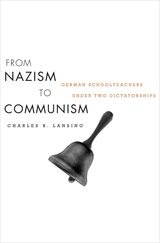 From Nazism to Communism: German Schoolteachers under Two Dictatorships
Charles B. Lansing
Harvard University Press, 2010 Tracing teachers' experiences in the Third Reich and East Germany, Charles Lansing analyzes developments in education of crucial importance to both dictatorships. Lansing uses the town of Brandenburg an der Havel as a case study to examine ideological reeducation projects requiring the full mobilization of the schools and the active participation of a transformed teaching staff. Although lesson plans were easily changed, skilled teachers were neither quickly made nor easily substituted. The men and women charged in the postwar era with educating a new “antifascist” generation were, to a surprising degree, the same individuals who had worked to “Nazify” pupils in the Third Reich. But significant discontinuities existed as well, especially regarding the teachers' professional self-understanding and attitudes toward the state-sanctioned teachers' union. The mixture of continuities and discontinuities helped to stabilize the early GDR as it faced its first major crisis in the uprising of June 17, 1953.
This uniquely comparative work sheds new light on an essential story as it reconceptualizes the traditional periodization of postwar German and European history.
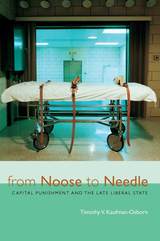 From Noose to Needle: Capital Punishment and the Late Liberal State
Timothy V. Kaufman-Osborn
University of Michigan Press, 2002 From Noose to Needle contributes a new perspective on the controversial topic of capital punishment by asking how the conduct of state killing reveals broader contradictions in the contemporary liberal state, especially, but not exclusively, in the United States. Moving beyond more familiar legal and sociological approaches to this matter, Timothy V. Kaufman-Osborn asks several questions. Why do executions no longer take the form of public spectacles? Why are certain methods of execution considered barbaric? Why must the liberal state strictly segregate the imposition of a death sentence, whether by judge or jury, from its actual infliction, whether by a state official or an ordinary citizen? Why are women so infrequently sentenced to death and executed? How does the state seek to hide the suffering inflicted by capital punishment through its endorsement of a bio-medical conception of pain? How does the nearly-universal shift to lethal injection pose problems for the late liberal state by confusing its punitive and welfare responsibilities?
Drawing on a wide range of theoretical sources, including John Locke, Max Weber, Nicos Poulantzas, Friedrich Nietzsche, J. L. Austin, Michel Foucault, Judith Butler, Pierre Bourdieu, Elaine Scarry, and others, Kaufman-Osborn grounds his appropriation of these authors in analyses of specific recent executions, including that of Wesley Allan Dodd and Charles Campbell in Washington, Karla Faye Tucker in Texas, and Allen Lee Davis in Florida.
From Noose to Needle will be of interest to students of law, political theory, and sociology as well as more general readers interested in the troublesome issue of capital punishment.
Timothy V. Kaufman-Osborn is Baker Ferguson Professor of Politics and Leadership, Whitman College.
 From North Africa to France: Family Migration in Text and Film
Isabel Hollis-Touré
University of London Press, 2015 Over the past four decades immigration to France from the Francophone countries of North Africa (Morocco, Algeria and Tunisia) has changed in character. For much of the twentieth century, migrants who crossed the Mediterranean to France were men seeking work, who frequently undertook manual labour, working long hours in difficult conditions. Recent decades have seen an increase in family reunification - the arrival of women and children from North Africa, either accompanying their husbands or joining them in France. Contemporary creative representations of migration are shaped by this shift in gender and generation from a solitary, mostly male experience to one that included women and children. Just as the shift made new demands of the 'host' society, it made new demands of authors and filmmakers as they seek to represent migration. This study reveals how text and film present new ways of thinking about migration, moving away from the configuration of the migrant as man and worker, to take into account women, children, and the ties between. Isabel Hollis-Touré is a Research Fellow at Queen's University Belfast. She has published widely on North African migration to France.
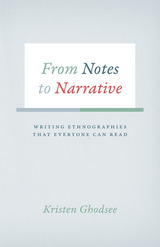 From Notes to Narrative: Writing Ethnographies That Everyone Can Read
Kristen Ghodsee
University of Chicago Press, 2016 Ethnography centers on the culture of everyday life. So it is ironic that most scholars who do research on the intimate experiences of ordinary people write their books in a style that those people cannot understand. In recent years, the ethnographic method has spread from its original home in cultural anthropology to fields such as sociology, marketing, media studies, law, criminology, education, cultural studies, history, geography, and political science. Yet, while more and more students and practitioners are learning how to write ethnographies, there is little or no training on how to write ethnographies well.
From Notes to Narrative picks up where methodological training leaves off. Kristen Ghodsee, an award-winning ethnographer, addresses common issues that arise in ethnographic writing. Ghodsee works through sentence-level details, such as word choice and structure. She also tackles bigger-picture elements, such as how to incorporate theory and ethnographic details, how to effectively deploy dialogue, and how to avoid distracting elements such as long block quotations and in-text citations. She includes excerpts and examples from model ethnographies. The book concludes with a bibliography of other useful writing guides and nearly one hundred examples of eminently readable ethnographic books.
From Nothing
Daniel Tobin
Four Way Books, 2016 From Nothing, a book-length poem in 33 sections, explores the conflicted and exemplary life of Belgian physicist and priest Georges Lemaître, known as “the father of the Big Bang,” and his life’s profound implications, through what John Barth called the principle of metaphoric means: “the writer’s investiture in as many aspects of the text as possible with emblematic significance.” Though associative and even multivalent in its orchestration, From Nothing weaves its many frequencies into a resonant whole.
From NWICO to WSIS: 30 Years of Communication Geopolitics: Actors and Flows, Structures and Divides
Edited by Divina Frau-Meigs, Jérémie Nicey, Michael Palmer, Julia Pohle, and Patricio Tupper
Intellect Books, 2012 Two major regulatory activities have framed global media policies since World War II: the New World Information and Communication Order (NWICO) and the more recent World Summit on the Information Society (WSIS). Through extensive research and testimonies from those involved, this book presents an in-depth account from the 1970s to today of the major issues concerning information flow in international geopolitics, including a look at the negotiations surrounding the major policy debates. Few studies of NWICO and WSIS have considered the continuity between the two activities—or included in the debate the crucial intermediary period between—and this book provides new insight into an issue of multilingual and multicultural importance.
From Old Regime to Industrial State: A History of German Industrialization from the Eighteenth Century to World War I
Richard H. Tilly and Michael Kopsidis
University of Chicago Press, 2020 In From Old Regime to Industrial State, Richard H. Tilly and Michael Kopsidis question established thinking about Germany’s industrialization. While some hold that Germany experienced a sudden breakthrough to industrialization, the authors instead consider a long view, incorporating market demand, agricultural advances, and regional variations in industrial innovativeness, customs, and governance. They begin their assessment earlier than previous studies to show how the 18th-century emergence of international trade and the accumulation of capital by merchants fed commercial expansion and innovation. This book provides the history behind the modern German economic juggernaut.
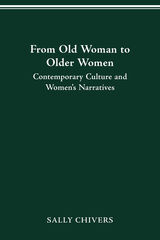 FROM OLD WOMAN TO OLDER WOMEN: Contemporary Culture and Women’s Narratives
Sally Chivers
Ohio State University Press, 2003 Sally Chivers provides a fascinating look at and challenge to how North American popular culture has portrayed old age as a time of disease, decline, and death. Within contemporary Canadian literary and film production, a tradition of articulate central elderly female characters challenges what the aging body has come to signify in a broader cultural context. Rather than seek positive images of aging, which can do their own prescriptive damage, the author focuses on constructive depictions that provide a basis on which to create new stories and readings of growing old. This type of humanities approach to the study of aging promises neither to fixate on nor avoid consideration of the role of the body in the much broader process of getting older. The progression implied in the title from the solitary symbol of The Old Woman toward a community of older women, indicates not a move toward euphemism, but rather an increasing and necessary awareness of the social and cultural dimensions of aging.
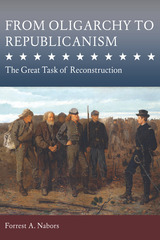 From Oligarchy to Republicanism: The Great Task of Reconstruction
Forrest A. Nabors
University of Missouri Press, 2026 On December 4, 1865, members of the 39th United States Congress walked into the Capitol Building to begin their first session after the end of the Civil War. They understood their responsibility to put the nation back on the path established by the American Founding Fathers. The moment when the Republicans in the Reconstruction Congress remade the nation and renewed the law is in a class of rare events. The Civil War should be seen in this light.
In From Oligarchy to Republicanism: The Great Task of Reconstruction, Forrest A. Nabors shows that the ultimate goal of the Republican Party, the war, and Reconstruction was the same. This goal was to preserve and advance republicanism as the American founders understood it, against its natural, existential enemy: oligarchy. The principle of natural equality justified American republicanism and required abolition and equal citizenship. Likewise, slavery and discrimination on the basis of color stand on the competing moral foundation of oligarchy, the principle of natural inequality, which requires ranks.
The effect of slavery and the division of the nation into two “opposite systems of civilization” are causally linked. Charles Devens, a lawyer who served as a general in the Union Army, and his contemporaries understood that slavery’s existence transformed the character of political society.
One of those dramatic effects was the increased power of slaveowners over those who did not have slaves. When the slave state constitutions enumerated slaves in apportioning representation using the federal three-fifths ratio or by other formulae, intra-state sections where slaves were concentrated would receive a substantial grant of political power for slave ownership. In contrast, low slave-owning sections of the state would lose political representation and political influence over the state. This contributed to the non-slaveholders’ loss of political liberty in the slave states and provided a direct means by which the slaveholders acquired and maintained their rule over non-slaveholders.
This book presents a shared analysis of the slave South, synthesized from the writings and speeches of the Republicans who served in the Thirty-Eighth, Thirty-Ninth or Fortieth Congress from 1863-1869. The account draws from their writings and speeches dated before, during, and after their service in Congress. Nabors shows how the Republican majority, charged with the responsibility of reconstructing the South, understood the South.
Republicans in Congress were generally united around the fundamental problem and goal of Reconstruction. They regarded their work in the same way as they regarded the work of the American founders. Both they and the founders were engaged in regime change, from monarchy in the one case, and from oligarchy in the other, to republicanism. The insurrectionary states’ governments had to be reconstructed at their foundations, from oligarchic to republican. The sharp differences within Congress pertained to how to achieve that higher goal.
From Origin to Destination: Trends and Mechanisms in Social Stratification Research
Edited by Stefani Scherer, Reinhard Pollak, Gunnar Otte, and Markus Gangl
Campus Verlag, 2007 Despite the momentous social and economic change of recent decades, patterns of social stratification have proven to be remarkably stable. In From Origin to Destination, an expert team analyzes the current state of social stratification research from a comparative, international perspective. This volume presents theoretical knowledge as well as empirical evidence on questions such as intergenerational social mobility; inequalities of educational opportunity, gender and ethnicity; and the role of education in the labor market.
 From Out of the Smokies: Stories of Fly Fishing and Life
Charlie Tombras
University of Tennessee Press, 2025 Knoxville native Charlie Tombras may be best known for founding nationally recognized advertising firm the Tombras Group, but in his moving memoir, From out of the Smokies: Stories of Fly Fishing and Life, he chronicles his personal journey, letting business take a backseat.
Born and raised in the Smokies, Tombras grew up exploring mountains and streams, fostering an appreciation for nature and fly fishing that would follow him through a tour of duty in Vietnam and into adulthood. With a relatable, often humorous storytelling style, Tombras recollects adventures spanning eight decades and the resulting lessons of friendship, loss, and love that he learned along the way. Emphasizing the value of hard work and perseverance, Tombras thoughtfully examines his lifelong love of fly fishing and leaves no stone unturned as he takes readers from childhood to adulthood with impressively vivid memories and captivating prose. From exhilarating tales of white water canoeing in Northern Labrador to grief-stricken seasons of loss, Tombras’s memoir explores a vast array of spirit and adventure that provides a nuanced portrait of a successful man—in business and in life.
Through his sporting adventures and other personal experiences, Tombras continues to learn how to weather storms in whatever shape they may take and how to grow in the face of adversity. Much like Tombras’s beloved rivers, From Out of the Smokies will inspire readers to accept and marvel at forces beyond our control.
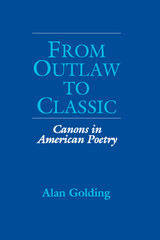 From Outlaw to Classic: Canons in American Poetry
Alan Golding
University of Wisconsin Press, 1995 From Outlaw to Classic presents a sweeping history of the forces that have shaped, and continue to shape, the American poetry canon. Students, scholars, critics, and poets will welcome this enlightening and impressively documented book.
Recent writings by critics and theorists on literary canons have dealt almost exclusively with prose; Alan Golding shows that, like all canons, those of American poetry are characterized by conflict. Choosing a series of varied but representative instances, he analyzes battles and contentions among poets, anthologists, poetry magazine editors, and schools of thought in university English departments. The chapters:
• present a history of American poetry anthologies
• compare competing models of canon-formation, the aesthetic (poet-centered) and the institutional (critic-centered)
• discuss the influence of the New Critics, emphasizing their status as practicing poets, their anti-nationalist reading of American poetry, and the landmark textbook, Understanding Poetry by Cleanth Brooks and Robert Penn Warren
• examine the canonizing effects of an experimental “little magazine,” Origin
• trace how the Language poets address, in both their theory and their method, the canonizing institutions and canonical assumptions of the age.
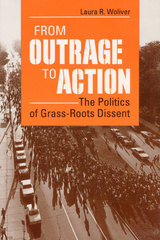 From Outrage to Action: The Politics of Grass-Roots Dissent
Laura R. Woliver
University of Illinois Press, 1993 In one case a local judge declared a five-year-old sexual assault victim a "particularly promiscuous young lady." In another, an innocent black man died in police custody. In these cases and two others, outraged citizens banded together to protest and seek redress for the injustices.
Through in-depth interviews with activists, Laura Woliver examines these community actions, studying the groups involved and linking her conclusions to larger questions of political power and the impact of social movements. Her findings will make fascinating reading for those interested in the rise and fall of grass-roots interest groups, the nature of dissent, and the reasons why people volunteer countless hours, sometimes in the face of community opposition and isolation, to dedicate themselves to a cause. The ad hoc interest groups studied are the Committee to Recall Judge Archie Simonson (Madison), the Coalition for Justice for Ernest Lacy (Milwaukee), Concerned Citizens for Children (Grant County, Wisconsin), and Citizens Taking Action (Madison). Woliver relates the community responses in these cases to those in the Jeffrey Dahmer mass murder case and the beating by Los Angeles police of Rodney King.
From Page to Performance: Essays in Early English Drama
John A. Alford
Michigan State University Press, 1995 This book is a collection of 22 essays by scholars in the field of Medieval Drama, mostly relating to performance both past and present. Alford wrote one essay in the book.
From Page to Place: American Literary Tourism and the Afterlives of Authors
Jennifer Harris
University of Massachusetts Press, 2017 Literary tourism has existed in the United States since at least the early nineteenth century, and now includes sites in almost every corner of the country. From Page to Place examines how Americans have taken up this form of tourism, offering an investigation of the places and practices of literary tourism from literary scholars, historians, tour guides, and collectors. The essays here begin to trace for the first time the histories of some of these sites, the rituals associated with literary tourism, and the ways readers and visitors consume popular literature through touristic endeavors.
In addition to the editors, contributors include Rebecca Rego Barry, Susann Bishop, Ben de Bruyn, Erin Hazard, Caroline Hellman, Michelle McClellan, Mara Scanlon, and Klara-Stephanie Szlezák.
From Palestine to Israel: A Photographic Record of Destruction and State Formation, 1947-1950
Ariella Azoulay
Pluto Press, 2011 In this carefully curated and beautifully presented photobook, Ariella Azoulay offers a new perspective on four crucial years in the history of Palestine/Israel.
The book reconstructs the processes by which the Palestinian majority in Mandatory Palestine became a minority in Israel, while the Jewish minority established a new political entity in which it became a majority ruling a minority Palestinian population. By reading over 200 photographs from that period, most of which were previously confined to Israeli state archives, Azoulay recounts the events and the stories that for years have been ignored or only partially acknowledged in Israel and the West.
Including substantial analytical text, this book will give activists, scholars and journalists a new perspective on the origins of the Palestine-Israel conflict.
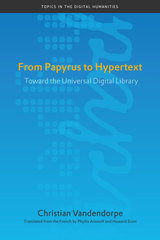 From Papyrus to Hypertext: Toward the Universal Digital Library
Christian Vandendorpe. Translated by Phyllis Aronoff & Howard Scott.
University of Illinois Press, 2008 In this study, Christian Vandendorpe examines how digital media and the Internet have changed the process of reading and writing, significantly altering our approaches toward research and reading, our assumptions about audience and response, and our theories of memory, legibility, and context. Reflecting on the full history of the written word, Vandendorpe provides a clear overview of how materiality makes a difference in the creation and interpretation of texts. Surveying the conventions of reading and writing that have appeared and disappeared in the Internet's wake, Vandendorpe considers various forms of organization, textual design, the use (and distrust) of illustrations, and styles of reference and annotation. He also examines the novel components of digital texts, including hyperlinks and emoticons, and looks at emergent, collaborative genres such as blogs and wikis, which blur the distinction between author and reader. Looking to the future, reading and writing will continue to evolve based on the current, contested trends of universal digitization and accessibility.
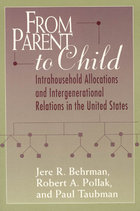 From Parent to Child: Intrahousehold Allocations and Intergenerational Relations in the United States
Jere R. Behrman, Robert A. Pollak, and Paul Taubman
University of Chicago Press, 1995 How do parents allocate human capital among their children? To what extent do parental decisions about resource allocation determine children's eventual economic success?
The analyses in From Parent to Child explore these questions by developing and testing a model in which the earnings of children with different genetic endowments respond differently to investments in human capital. Behrman, Pollak, and Taubman use this model to investigate issues such as parental bias in resource allocations based on gender or birth order; the extent of intergenerational mobility in income, earnings, and schooling in the United States; the relative importance of environmental and genetic factors in determining variations in schooling; and whether parents' distributions offset the intended effects of government programs designed to subsidize children. In allocating scarce resources, parents face a trade-off between equity and efficiency, between the competing desires to equalize the wealth of their children and to maximize the sum of their earnings.
Building on the seminal work of Gary Becker, From Parent to Child integrates careful modeling of household behavior with systematic empirical testing, and will appeal to anyone interested in the economics of the family.
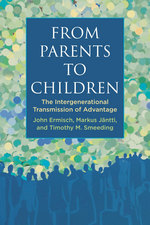 From Parents to Children: The Intergenerational Transmission of Advantage
John Ermisch
Russell Sage Foundation, 2012 Does economic inequality in one generation lead to inequality of opportunity in the next? In From Parents to Children, an esteemed international group of scholars investigates this question using data from ten countries with differing levels of inequality. The book compares whether and how parents' resources transmit advantage to their children at different stages of development and sheds light on the structural differences among countries that may influence intergenerational mobility. How and why is economic mobility higher in some countries than in others? The contributors find that inequality in mobility-relevant skills emerges early in childhood in all of the countries studied. Bruce Bradbury and his coauthors focus on learning readiness among young children and show that as early as age five, large disparities in cognitive and other mobility-relevant skills develop between low- and high-income kids, particularly in the United States and the United Kingdom. Such disparities may be mitigated by investments in early childhood education, as Christelle Dumas and Arnaud Lefranc demonstrate. They find that universal pre-school education in France lessens the negative effect of low parental SES and gives low-income children a greater shot at social mobility. Katherine Magnuson, Jane Waldfogel, and Elizabeth Washbrook find that income-based gaps in cognitive achievement in the United States and the United Kingdom widen as children reach adolescence. Robert Haveman and his coauthors show that the effect of parental income on test scores increases as children age; and in both the United States and Canada, having parents with a higher income betters the chances that a child will enroll in college. As economic inequality in the United States continues to rise, the national policy conversation will not only need to address the devastating effects of rising inequality in this generation but also the potential consequences of the decline in mobility from one generation to the next. Drawing on unparalleled international datasets, From Parents to Children provides an important first step.
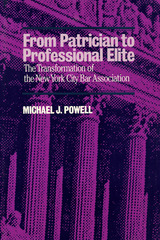 From Patrician to Professional Elite
Walter Powell
Russell Sage Foundation, 1988 The Association of the Bar of the City of New York (ABCNY) is no ordinary professional organization. Formed in 1870 and housed in an imposing mid-town edifice, it was the first modern bar association, nationally known for its eminent membership, its reformist stance—and its intimidating selectivity. During much of its history, the ABCNY appeared to be more an upper-class, WASP legal club than an open, collegial association. How did such an organization fare in the face of post-war pressures for inclusiveness? From Patrician to Professional Elite offers a rare view of the internal dynamics of an institution adapting to a changed environment. The ABCNY maintained its elite identity by adopting a meritocratic organizational model in place of a class-based model. By shedding its overt exclusivity, the ABCNY asserted its legitimacy; by embracing an "open elite" or meritocratic model, the associate retained its high standing and relative homogeneity. In fact, the ABCNY today is dominated by the same functional group of lawyers as before, the corporate legal elite. This fascinating study of organizational change prompts a re-examination of fundamental questions about the class basis of modern professionalism and the dominance of elites within professions, in addition to illuminating the larger question of the role of elite institutions in democratic societies.
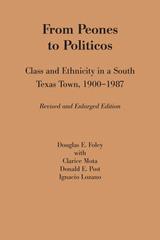 From Peones to Politicos: Class and Ethnicity in a South Texas Town, 1900–1987
By Douglas E Foley, with Clarice Mota, Donald E. Post, and Ignacio Lozano
University of Texas Press, 1988 How does a relatively powerless ethnic group deal with the problems of economic inequality and racial discrimination? How do they gain power in the community? From Peones to Politicos examines these questions in detail, focusing on the changes in Mexicano-Anglo relations in one small South Texas community called North Town. These changes are typical of evolving Mexicano-Anglo relations in much of Texas and the Southwest. The authors divide their study into three historical periods: the rancho era (1900–1930), the colonia era (1930–1970), and the contemporary period (1970–1977). They trace how Mexicano-Anglo relations have evolved away from the extremely exploitative, paternalistic sharecropper system of the rancho era, when open racism, strict social segregation, and effective Anglo political machines prevailed. They reveal, by contrast, how Mexicanos have become a power to be reckoned with by developing their own economic and political leaders and ethnic political organizations and challenging the Anglo control of the city, school, and county governments. The study also shows how Mexican American family practices have been changed by this transformation of the local political economy. This revised edition of From Peones to Politicos presents updated fieldwork and additional discussion of class theory and the study of racial orders. Of special interest are reactions to the study by North Town residents themselves, which appear in the new Part IV.
 From Pews to Polling Places: Faith and Politics in the American Religious Mosaic
J. Matthew Wilson, Editor
Georgetown University Press, 2007 Does religion promote political mobilization? Are individuals motivated by their faith to focus on issues of social justice, personal morality, or both? What is the relationship between religious conviction and partisanship? Does religious identity reinforce or undermine other political identifications like race, ethnicity, and class? The answers to these questions are hardly monolithic, varying between and within major American religious groups. With an electoral climate increasingly shaped by issues of faith, values, and competing moral visions, it is both fascinating and essential to examine the religious and political currents within America's major religious traditions. J. Matthew Wilson and a group of prominent religion and politics scholars examine these topics and assess one question central to these issues: How does faith shape political action in America's diverse religious communities? From Pews to Polling Places seeks to cover a rich mosaic of religious and ethnic perspectives with considerable breadth by examining evangelical Christians, the religious left, Catholics, Mormons, African Americans, Latinos, Jews, and Muslims. Along with these groups, the book takes a unique look at the role of secular and antifundamentalist positions, adding an even wider outlook to these critical concerns. The contributors demonstrate how different theologies, histories, and social situations drive distinct conceptualizations of the relationship between religious and political life. At the same time, however, the book points to important commonalities across traditions that can inform our discussions on the impact of religion on political life. In emphasizing these similarities, the authors explore the challenges of political mobilization, partisanship, and the intersections of religion and ethnicity.
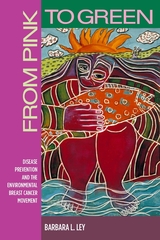 From Pink to Green: Disease Prevention and the Environmental Breast Cancer Movement
Ley, Barbara L
Rutgers University Press, 2009 From the early 1980s, the U.S. environmental breast cancer movement has championed the goal of eradicating the disease by emphasizing the importance of reducing—even eliminating exposure to chemicals and toxins. From Pink to Green chronicles the movement's disease prevention philosophy from the beginning. Challenging the broader cultural milieu of pink ribbon symbolism and breast cancer "awareness" campaigns, this movement has grown from a handful of community-based organizations into a national entity, shaping the cultural, political, and public health landscape. Much of the activists' everyday work revolves around describing how the so called "cancer industry" downplays possible environmental links to protect their political and economic interests and they demand that the public play a role in scientific, policy, and public health decision-making to build a new framework of breast cancer prevention. From Pink to Green successfully explores the intersection between breast cancer activism and the environmental health sciences, incorporating public and scientific debates as well as policy implications to public health and environmental agendas.
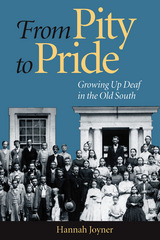 From Pity to Pride: Growing Up Deaf in the Old South
Hannah Joyner
Gallaudet University Press, 2004 The antebellum South’s economic dependence on slavery engendered a rigid social order in which a small number of privileged white men dominated African Americans, poor whites, women, and many people with disabilities. From Pity to Pride examines the experiences of a group of wealthy young men raised in the old South who also would have ruled over this closely regimented world had they not been deaf. Instead, the promise of status was gone, replaced by pity, as described by one deaf scion, “I sometimes fancy some people to treat me as they would a child to whom they were kind.”
In this unique and fascinating history, Hannah Joyner depicts in striking detail the circumstances of these so-called victims of a terrible “misfortune.” Joyner makes clear that Deaf people in the North also endured prejudice. She also explains how the cultural rhetoric of paternalism and dependency in the South codified a stringent system of oppression and hierarchy that left little room for self-determination for Deaf southerners. From Pity to Pride reveals how some of these elite Deaf people rejected their family’s and society’s belief that being deaf was a permanent liability. Rather, they viewed themselves as competent and complete. As they came to adulthood, they joined together with other Deaf Americans, both southern and northern, to form communities of understanding, self-worth, and independence.
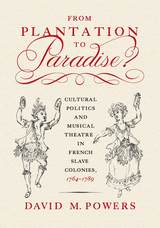 From Plantation to Paradise?: Cultural Politics and Musical Theatre in French Slave Colonies, 1764–1789
David M. Powers
Michigan State University Press, 2014 In 1764 the first printing press was established in the French Caribbean colonies, launching the official documentation of operas and plays performed there, and marking the inauguration of the first theatre in the colonies. A rigorous study of pre–French Revolution performance practices in Guadeloupe, Martinique, and Saint-Domingue (now Haiti), Powers’s book examines the elaborate system of social casting in these colonies; the environments in which nonwhite artists emerged; and both negative and positive contributions of the Catholic Church and the military to operas and concerts produced in the colonies. The author also explores the level of participation of nonwhites in these productions, as well as theatre architecture, décor, repertoire, seating arrangements, and types of audiences. The status of nonwhite artists in colonial society; the range of operas in which they performed; their accomplishments, praise, criticism; and the use of créole texts and white actors/singers à visage noirs (with blackened faces) present a clear picture of French operatic culture in these colonies. Approaching the French Revolution, the study concludes with an examination of the ways in which colonial opera was affected by slave uprisings, the French Revolution, the emergence of “patriotic theatres,” and their role in fostering support for the king, as well as the impact on subsequent operas produced in the colonies and in the United States.
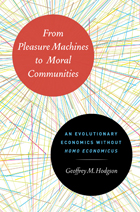 From Pleasure Machines to Moral Communities: An Evolutionary Economics without Homo economicus
Geoffrey M. Hodgson
University of Chicago Press, 2012 Are humans at their core seekers of their own pleasure or cooperative members of society? Paradoxically, they are both. Pleasure-seeking can take place only within the context of what works within a defined community, and central to any community are the evolved codes and principles guiding appropriate behavior, or morality. The complex interaction of morality and self-interest is at the heart of Geoffrey M. Hodgson’s approach to evolutionary economics, which is designed to bring about a better understanding of human behavior.
In From Pleasure Machines to Moral Communities, Hodgson casts a critical eye on neoclassical individualism, its foundations and flaws, and turns to recent insights from research on the evolutionary bases of human behavior. He focuses his attention on the evolution of morality, its meaning, why it came about, and how it influences human attitudes and behavior. This more nuanced understanding sets the stage for a fascinating investigation of its implications on a range of pressing issues drawn from diverse environments, including the business world and crucial policy realms like health care and ecology. This book provides a valuable complement to Hodgson’s earlier work with Thorbjørn Knudsen on evolutionary economics in Darwin’s Conjecture, extending the evolutionary outlook to include moral and policy-related issues.
From Plot to Narrative
Ellis, Elizabeth
Parkhurst Brothers, Inc., 2012 Each of the twelve chapters represents a rung on the ladder of dynamic narrative development. Beginning with the most basic plot outline, Ellis leads readers through exercises and discussions of elements that build a story into a memorable reading or listening experience. The chapters include many topics of interest to all writers, regardless of medium, but some will speak most potently to those writing either fiction or personal narrative. Chapters include Characterization, Point of View, Emotion, Context, Imagery, and Connection [with the reader]. Herself a leading professional storyteller, Ellis also includes a chapter especially for those who plan to craft stories for oral performance.
From Point to Pixel: A Genealogy of Digital Aesthetics
Meredith Hoy
Dartmouth College Press, 2017 In this fiercely ambitious study, Meredith Anne Hoy seeks to reestablish the very definitions of digital art and aesthetics in art history. She begins by problematizing the notion of digital aesthetics, tracing the nineteenth- and twentieth-century movements that sought to break art down into its constituent elements, which in many ways predicted and paved the way for our acceptance of digital art. Through a series of case studies, Hoy questions the separation between analog and digital art and finds that while there may be sensual and experiential differences, they fall within the same technological categories. She also discusses computational art, in which the sole act of creation is the building of a self-generating algorithm. The medium isn’t the message—what really matters is the degree to which the viewer can sense a creative hand in the art.
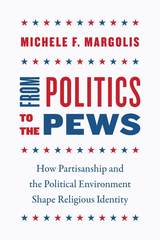 From Politics to the Pews: How Partisanship and the Political Environment Shape Religious Identity
Michele F. Margolis
University of Chicago Press, 2018 One of the most substantial divides in American politics is the “God gap.” Religious voters tend to identify with and support the Republican Party, while secular voters generally support the Democratic Party. Conventional wisdom suggests that religious differences between Republicans and Democrats have produced this gap, with voters sorting themselves into the party that best represents their religious views.
Michele F. Margolis offers a bold challenge to the conventional wisdom, arguing that the relationship between religion and politics is far from a one-way street that starts in the church and ends at the ballot box. Margolis contends that political identity has a profound effect on social identity, including religion. Whether a person chooses to identify as religious and the extent of their involvement in a religious community are, in part, a response to political surroundings. In today’s climate of political polarization, partisan actors also help reinforce the relationship between religion and politics, as Democratic and Republican elites stake out divergent positions on moral issues and use religious faith to varying degrees when reaching out to voters.
 From Pompeii: The Afterlife of a Roman Town
Ingrid D. Rowland
Harvard University Press, 2014 When Vesuvius erupted in 79 CE, the force of the explosion blew the top right off the mountain, burying nearby Pompeii in a shower of volcanic ash. Ironically, the calamity that proved so lethal for Pompeii's inhabitants preserved the city for centuries, leaving behind a snapshot of Roman daily life that has captured the imagination of generations.
The experience of Pompeii always reflects a particular time and sensibility, says Ingrid Rowland. From Pompeii: The Afterlife of a Roman Town explores the fascinating variety of these different experiences, as described by the artists, writers, actors, and others who have toured the excavated site. The city's houses, temples, gardens--and traces of Vesuvius's human victims--have elicited responses ranging from awe to embarrassment, with shifting cultural tastes playing an important role. The erotic frescoes that appalled eighteenth-century viewers inspired Renoir to change the way he painted. For Freud, visiting Pompeii was as therapeutic as a session of psychoanalysis. Crown Prince Hirohito, arriving in the Bay of Naples by battleship, found Pompeii interesting, but Vesuvius, to his eyes, was just an ugly version of Mount Fuji. Rowland treats readers to the distinctive, often quirky responses of visitors ranging from Wolfgang Amadeus Mozart, Charles Dickens, and Mark Twain to Roberto Rossellini and Ingrid Bergman.
Interwoven throughout a narrative lush with detail and insight is the thread of Rowland's own impressions of Pompeii, where she has returned many times since first visiting in 1962.
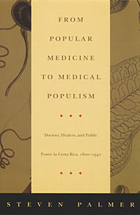 From Popular Medicine to Medical Populism: Doctors, Healers, and Public Power in Costa Rica, 1800–1940
Steven Palmer
Duke University Press, 2003 From Popular Medicine to Medical Populism presents the history of medical practice in Costa Rica from the late colonial era—when none of the fifty thousand inhabitants had access to a titled physician, pharmacist, or midwife—to the 1940s, when the figure of the qualified medical doctor was part of everyday life for many of Costa Rica’s nearly one million citizens. It is the first book to chronicle the history of all healers, both professional and popular, in a Latin American country during the national period.
Steven Palmer breaks with the view of popular and professional medicine as polar opposites—where popular medicine is seen as representative of the authentic local community and as synonymous with oral tradition and religious and magical beliefs and professional medicine as advancing neocolonial interests through the work of secular, trained academicians. Arguing that there was significant and formative overlap between these two forms of medicine, Palmer shows that the relationship between practitioners of each was marked by coexistence, complementarity, and dialogue as often as it was by rivalry. Palmer explains that while the professionalization of medical practice was intricately connected to the nation-building process, the Costa Rican state never consistently displayed an interest in suppressing the practice of popular medicine. In fact, it persistently found both tacit and explicit ways to allow untitled healers to practice. Using empirical and archival research to bring people (such as the famous healer or curandero Professor Carlos Carbell), events, and institutions (including the Rockefeller Foundation) to life, From Popular Medicine to Medical Populism demonstrates that it was through everyday acts of negotiation among agents of the state, medical professionals, and popular practitioners that the contours of Costa Rica’s modern, heterogeneous health care system were established.
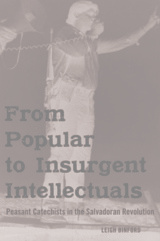 From Popular to Insurgent Intellectuals: Peasant Catechists in the Salvadoran Revolution
Leigh Binford
Rutgers University Press, 2023 From Popular to Insurgent Intellectuals explains how a group of Catholic lay catechists educated in liberation theology came to take up arms and participate on the side of the rebel FMLN during El Salvador’s revolutionary war (1980-92). In the process they became transformed from popular intellectuals to insurgent intellectuals who put their organizational and cognitive skills at the service of a collective effort to create a more egalitarian and democratic society. The book highlights the key roles that peasant catechists in northern Morazán played in disseminating liberation theology before the war and supporting the FMLN during it—as quartermasters, political activists, and musicians, among other roles. Throughout, From Popular to Insurgent Intellectuals highlights the dialectical nature of relations between Catholic priests and urban revolutionaries, among others, in which the latter learned from the former and vice-versa. Peasant catechists proved capable at making independent decisions based on assessment of their needs and did not simply follow the dictates of those with superior authority, and played an important role for the duration of the twelve-year military conflict.
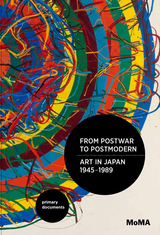 From Postwar to Postmodern, Art in Japan, 1945-1989: Primary Documents
Doryun Chong, Michio Hayashi, Kenji Kajiya, and Fumihiko Sumitomo, eds.
Duke University Press A trove of primary source materials, From Postwar to Postmodern, Art in Japan 1945–1989 is an invaluable scholarly resource for readers who wish to explore the fascinating subject of avant-garde art in postwar Japan. In this comprehensive anthology, an array of key documents, artist manifestos, critical essays, and roundtable discussions are translated into English for the first time. The pieces cover a broad range of artistic mediums—including photography, film, performance, architecture, and design—and illuminate their various points of convergence in the Japanese context. The collection is organized chronologically and thematically to highlight significant movements, works, and artistic phenomena, such as the pioneering artist collectives Gutai and Hi Red Center, the influential photography periodical Provoke, and the emergence of video art in the 1980s. Interspersed throughout the volume are more than twenty newly commissioned texts by contemporary scholars. Including Bert Winther-Tamaki on art and the Occupation and Reiko Tomii on the Yomiuri Independent Exhibition, these pieces supplement and provide a historical framework for the primary source materials. From Postwar to Postmodern, Art in Japan 1945–1989 offers an unprecedented look at over four decades of Japanese art—both as it unfolded and as it is seen from the perspective of the present day. Publication of The Museum of Modern Art
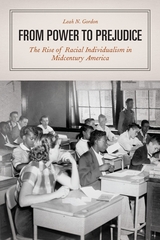 From Power to Prejudice: The Rise of Racial Individualism in Midcentury America
Leah N. Gordon
University of Chicago Press, 2015 Americans believe strongly in the socially transformative power of education, and the idea that we can challenge racial injustice by reducing white prejudice has long been a core component of this faith. How did we get here? In this first-rate intellectual history, Leah N. Gordon jumps into this and other big questions about race, power, and social justice.
To answer these questions, From Power to Prejudice examines American academia—both black and white—in the 1940s and ’50s. Gordon presents four competing visions of “the race problem” and documents how an individualistic paradigm, which presented white attitudes as the source of racial injustice, gained traction. A number of factors, Gordon shows, explain racial individualism’s postwar influence: individuals were easier to measure than social forces; psychology was well funded; studying political economy was difficult amid McCarthyism; and individualism was useful in legal attacks on segregation. Highlighting vigorous midcentury debate over the meanings of racial justice and equality, From Power to Prejudice reveals how one particular vision of social justice won out among many contenders.
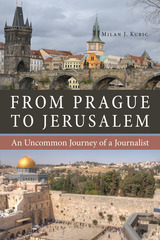 From Prague to Jerusalem: An Uncommon Journey of a Journalist
Milan J. Kubic
Northern Illinois University Press, 2017 After spending his childhood in Nazi-occupied Czechoslovakia and witnessing the Communist takeover of his country in 1948, a young journalist named Milan Kubic embarked on a career as a Newsweek correspondent that spanned thirty-one years and three continents, reporting on some of the most memorable events in the Middle East. Now, Kubic tells this fascinating story in depth.
Kubic describes his escape to the US Zone in West Germany, his life in the Displaced Persons camps, and his arrival in 1950s America, where he worked as a butler and factory worker and served in a US Army intelligence unit during Senator Joe McCarthy’s witch-hunting years. Hired by Newsweek after graduating from journalism school, Kubic covered the White House during the last year of Dwight D. Eisenhower’s presidency, the US Senate run by Lyndon Johnson, and the campaign that elected President John F. Kennedy.
Kubic spent twenty-six years reporting from abroad, including South America, the Indian subcontinent, and Eastern and Western Europe. Of particular interest is his account of the seventeen years—starting with the Six Day War in 1967—when he watched the Israeli-Palestinian conflict from Beirut and Jerusalem. In From Prague to Jerusalem, readers will meet the principal Israeli participants in the Irangate affair, accompany Kubic on his South American tour with Bobby Kennedy, take part in his jungle encounter with the king of Belgium, witness the inglorious end of Timothy Leary’s flight to the Middle East, and observe the debunking of Hitler’s bogus diaries. This riveting memoir will appeal to general readers and scholars interested in journalism, the Middle East, and US history and politics.
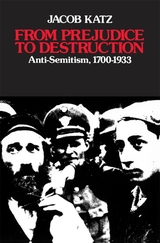 From Prejudice to Destruction: Anti-Semitism, 1700–1933
Jacob Katz
Harvard University Press, 1980 Jacob Katz here presents a major reinterpretation of modern anti-Semitism, which blends history of ideas about the Jews gradually became transformed and then, around 1879, picked up so much social force as to result in the premeditated and systematic destruction of the Jewish people of Europe.
Mr. Katz revises the prevalent thesis that medieval and modern animosities against Jews were fundamentally different. He also rejects the scapegoat theory, according to which the Jews were merely a lightning rod for underlying economic and social tensions. On the contrary, he argues, there were very real tensions between Jews and non-Jews, because the Jews were a highly visible and cohesive group and so came into conflict with non-Jews in competing for social and economic rewards.
In the late 19th century, Mr. Katz argues, hatred of the Jews shifted from their religion to more essential aspects of their character and behavior. The term “anti-Semitism,” he explains, which first came into use around 1870, was meant to describe this change. Thus, ironically, just as Jews were being integrated into the political state, skillful propagandists such as Theodore Fritzche and Houston Stewart Chamberlain were extraordinarily successful in spreading notions of Jewish racial inferiority and its threat to the pure Aryan stock. And so when Hitler came on the scene, the seeds of Jewish race hatred were widely sown.
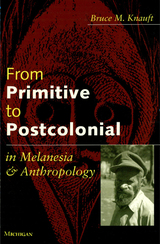 From Primitive to Postcolonial in Melanesia and Anthropology
Bruce M. Knauft
University of Michigan Press, 1999 What have anthropologists taught us about Melanesia--one of anthropology's most important and intensively studied world regions? In this book, Professor Bruce Knauft draws together and critically reanalyzes what we know about major features of Melanesian cultural history, warfare and politics, gender, bodily practices, and spirituality as discerned from more than a century of academic study. From Primitive to Postcolonial in Melanesia and Anthropology is arguably the most comprehensive single reassessment of Melanesia as an ethnographic world area to have been published in several decades. Written for students as well as professional scholars, this work further broadens our understanding by analyzing the history of Melanesian ethnography and relating this history to the larger relationship between Melanesia as a contemporary world area and anthropology as a field of contemporary human study. Bruce M. Knauft is Professor of Anthropology, Emory University, and the author of three previous books as well as some thirty journal articles and chapters. Knauft's interests span a wide range of issues in the anthropology of Melanesia and he is articulate with general issues of cultural theory and anthropological history.
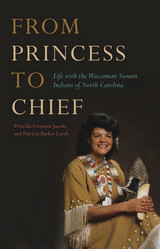 From Princess to Chief: Life with the Waccamaw Siouan Indians of North Carolina
Priscilla Freeman Jacobs
University of Alabama Press, 2013 A collaborative life history of Priscilla Freeman Jacobs, From Princess to Chief tells the story of the first female chief (from 1986 to 2005) of the state-recognized Waccamaw Siouan Indian Tribe of North Carolina. In From Princess to Chief, Priscilla Freeman Jacobs and Patricia Barker Lerch detail Jacobs’s birth and childhood, coming of age, education, young adulthood, marriage and family, Indian activism, and spiritual life. Jacobs is descended from a family of Indian leaders whose activism dates back to the early twentieth century. Her ancestors pressured the local county and state governments to fund their Indian schools, led the drive for the Waccamaw Sioux to be recognized as Indians in state and federal legislation, and finally succeeded in opening the long-awaited Indian schools in the 1930s. Jacobs’s lasting legacies to her community include the many initiatives on which she collaborated with her father, Clifton Freeman, including the acquisition of common land for the tribe, initiation of a tribal board of directors, incorporation of a development association, and the establishment of a day care and many other social and educational programs. In the 1970s Jacobs served on the North Carolina Commission of Indian Affairs and was active in the Coalition of Eastern Native Americans. Introducing the powwow as a way for young people to learn about the traditions of Indian people throughout the state of North Carolina, Jacobs taught many children how to dance and wear Indian regalia with pride and dignity. Throughout her life, Jacobs has worked hard to preserve the traditional customs of her people and to teach others about the folk culture that shaped and molded her as a person. Told from the point of view of an eyewitness to the community’s effort to win federal recognition in 1950 and their lives since, From Princess to Chief helps preserve the story of Jacobs’s Indian community.
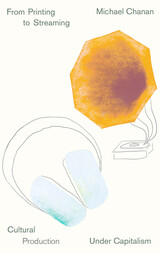 From Printing to Streaming: Cultural Production under Capitalism
Michael Chanan
Pluto Press, 2022 A radical and comprehensive analysis of the commodification of artistic creation and the struggle to realize its potential in the digital age. For mainstream economics, cultural production raises no special questions: creative expression is to be harvested for wealth creation like any other form of labor. As Karl Marx saw it, however, capital is hostile to the arts because it cannot fully control the process of creativity. But while he saw the arts as marginal to capital accumulation, that was before the birth of the mass media. Engaging with the major issues in Marxist theory around art and capitalism, From Printing to Streaming traces how the logic of cultural capitalism evolved from the print age to digital times, tracking the development of printing, photography, sound recording, newsprint, advertising, film, and broadcasting, exploring the peculiarities of each as commodities, and their recent transformation by digital technology, where everything melts into computer code. Chanan demonstrates how these developments have had profound implications for both cultural creation and consumption.
 From Property to Family: American Dog Rescue and the Discourse of Compassion
Andrei S. Markovits and Katherine N. Crosby
University of Michigan Press, 2014 In the wake of the considerable cultural changes and social shifts that the United States and all advanced industrial democracies have experienced since the late 1960s and early 1970s, social discourse around the disempowered has changed in demonstrable ways. In From Property to Family: American Dog Rescue and the Discourse of Compassion, Andrei Markovits and Katherine Crosby describe a “discourse of compassion” that actually alters the way we treat persons and ideas once scorned by the social mainstream. This “culture turn” has also affected our treatment of animals inaugurating an accompanying “animal turn”. In the case of dogs, this shift has increasingly transformed the discursive category of the animal from human companion to human family member. One of the new institutions created by this attitudinal and behavioral change towards dogs has been the breed specific canine rescue organization, examples of which have arisen all over the United States beginning in the early 1980s and massively proliferating in the 1990s and subsequent years. While the growing scholarship on the changed dimension of the human-animal relationship attests to its social, political, moral and intellectual salience to our contemporary world, the work presented in Markovits and Crosby’s book constitutes the first academic research on the particularly important institution of breed specific dog rescue.
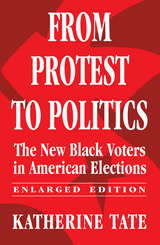 From Protest to Politics: The New Black Voters in American Elections, Enlarged Edition
Katherine Tate
Harvard University Press, 1994 The struggle for civil rights among black Americans has moved into the voting booth. How such a shift came about—and what it means—is revealed in this timely reflection on black presidential politics in recent years.
Since 1984, largely as a result of Jesse Jackson’s presidential bid, blacks have been galvanized politically. Drawing on a substantial national survey of black voters, Katherine Tate shows how this process manifested itself at the polls in 1984, 1988, and 1992. In an analysis of the black presidential vote by region, income, age, and gender, she is able to identify unique aspects of the black experience as they shape political behavior, and to answer longstanding questions about that behavior.
Unique in its focus on the black electorate, this study illuminates a little-understood and tremendously significant aspect of American politics. It will benefit those who wish to understand better the subtle interplay of race and politics, at the voting booth and beyond.
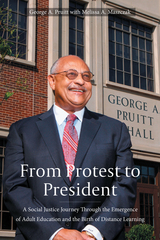 From Protest to President: A Social Justice Journey through the Emergence of Adult Education and the Birth of Distance Learning
George A Pruitt
Rutgers University Press, 2023 From Protest to President describes an inspirational odyssey of a young, Black activist coming of age in Mississippi and Chicago in the tumultuous 1960s and '70s, culminating in a notable thirty-five-year presidency at Thomas Edison State University.
From barbershop encounters with Malcolm X to death threats at Illinois State University and gunfire at Towson State, Pruitt provides a powerful narrative poised at the intersection of social justice, higher education and politics. He recounts leadership experiences at HBCUs and public universities across the country, as he advocated for autonomy at Morgan State and fought to preserve Tennessee State University.
His steadfast activism, integrity and courage led to groundbreaking work in providing access to higher education for working adults and the military.
From his days as a student protester in high school and college to his appearances on Capitol Hill, Pruitt has earned the reputation as a candid and influential leader in higher education.
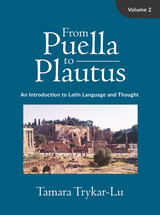 From Puella to Platus: An Introduction to Latin Language and Thought, Volume 2
Tamara Trykar-Lu
Catholic University of America Press, 2019 Whether to enlarge your general education, improve your English, or just because you are curious about the society that has had such a lasting influence on our history, our language, our thoughts, and our culture, you should and can learn Latin.
Tamara Trykar-Lu's charming and delightful introduction to Latin, From Puella to Plautus, Part I, is designed for beginning to intermediate Latin study, at the high school or college level, either with the aid of a teacher and classroom or simply for personal enjoyment and enrichment. A thorough review of English grammar with detailed explanations makes it easy for the reader to grasp new concepts in Latin. Learning Latin vocabulary becomes manageable once you realize how much ‘Latin’ vocabulary there is in English. You will quickly learn to read Latin with short stories and, gradually, more demanding selections. Readers will translate the story of Romulus and Remus and the founding of Rome, but also the tale of Nivea -- Snow White -- and some parts of Shakespeare's plays. Short sections show how English developed, how Latin influenced it, and where they both belong in the world of languages.
Each chapter ends with a brief outline of some aspect of Roman culture, such as housing, fauna and flora, games, crafts, water supply, and cooking – with recipes. And last but not least there are informative tidbits, drawings, cartoons, jokes, riddles, crossword puzzles, and, of course, pictures distributed throughout the book. For while foreign-language study should be logical, coherent, and rigorous, it need not be heavy-handed or pedantic, and certainly not dull. Ideal for use in courses or for brushing up your language skills, From Puella to Plautus is a lively and engaging book about the Latin language and life in the Roman Empire.
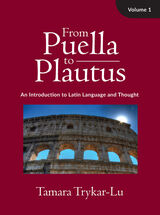 From Puella to Plautus: An Introduction to Latin Language and Thought, Volume 1
Tamara Trykar-Lu
Catholic University of America Press, 2019 Whether to enlarge your general education, improve your English, or just because you are curious about the society that has had such a lasting influence on our history, our language, our thoughts, and our culture, you should and can learn Latin.
Tamara Trykar-Lu's charming and delightful introduction to Latin, From Puella to Plautus, Part I, is designed for beginning to intermediate Latin study, at the high school or college level, either with the aid of a teacher and classroom or simply for personal enjoyment and enrichment. A thorough review of English grammar with detailed explanations makes it easy for the reader to grasp new concepts in Latin. Learning Latin vocabulary becomes manageable once you realize how much ‘Latin’ vocabulary there is in English. You will quickly learn to read Latin with short stories and, gradually, more demanding selections. Readers will translate the story of Romulus and Remus and the founding of Rome, but also the tale of Nivea -- Snow White -- and some parts of Shakespeare's plays. Short sections show how English developed, how Latin influenced it, and where they both belong in the world of languages.
Each chapter ends with a brief outline of some aspect of Roman culture, such as housing, fauna and flora, games, crafts, water supply, and cooking – with recipes. And last but not least there are informative tidbits, drawings, cartoons, jokes, riddles, crossword puzzles, and, of course, pictures distributed throughout the book. For while foreign-language study should be logical, coherent, and rigorous, it need not be heavy-handed or pedantic, and certainly not dull. Ideal for use in courses or for brushing up your language skills, From Puella to Plautus is a lively and engaging book about the Latin language and life in the Roman Empire.
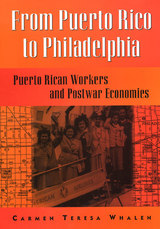 From Puerto Rico To Philadelphia: Puerto Rican Workers and Postwar Economies
Carmen Whalen
Temple University Press, 2001 "We were poor but we had everything we needed," reminisces Dona Epifania. Nonetheless, when a man she knew told her about a job in Philadelphia, she grasped the opportunity to leave Coamas. "He went to Puerto Rico and told me there were beans to cook. I came here and cooked for fourteen workers." In San Lorenzo, Dona Carmen and her husband made the same decision: "We didn't want to, nobody wanted to leave....There wasn't any alternative." Don Florencio recalls that in Salinas work had gotten scarce, "especially for the youth, the young men....The farmworker that was used to cutting cane, already the sugar cane was disappearing," and government licensing regulations made fishing "more difficult for the poor."
Puerto Rican migration to the mainland following World War II took place for a range of reasons -- globalization of the economy, the colonial relationship between the United States and Puerto Rico, state policies, changes in regional and local economies, social networks, and, not least, the decisions made by individual immigrants. In this wide-ranging book, Carmen Whalen weaves them all into a tapestry of Puerto Rican immigration to Philadelphia.
Like African Americans and Mexicans, Puerto Ricans were recruited for low-wage jobs, only to confront racial discrimination as well as economic restructuring. As Whalen shows, they were part of that wave of newcomers who came from areas in the Caribbean, Latin America, and Asia characterized by a heavy U.S. military and economic presence, especially export processing zones looking for a new life in depressed urban environments already populated by earlier labor migrants. But Puerto Rican in-migration was also unique, especially in its regional and gender dimensions. Many migrants came as part of contract labor programs shaped by competing agendas.
By the 1990s, economic conditions, government policies, and racial ideologies had transformed Puerto Rican labor migrants into what has been called "the other underclass." The author analyzes this continuation of "culture and poverty" interpretations and contrasts it with the efforts of Philadelphia's Puerto Ricans to recreate their communities and deal with the impact of economic restructuring and residential segregation in the City of Brotherly Love.
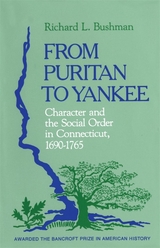 From Puritan to Yankee: Character and the Social Order in Connecticut, 1690–1765
Richard L. Bushman
Harvard University Press, 2005 The years from 1690 to 1765 in America have usually been considered a waiting period before the Revolution. Richard L. Bushman, in his penetrating study of colonial Connecticut, takes another view. He shows how, during these years, economic ambition and religious ferment profoundly altered the structure of Puritan society, enlarging the bounds of liberty and inspiring resistance to established authority.
This is an investigation of the strains that accompanied the growth of liberty in an authoritarian society. Mr. Bushman traces the deterioration of Puritan social institutions and the consequences for human character. He does this by focusing on day-to-day life in Connecticut—on the farms, in the churches, and in the town meetings. Controversies within the towns over property, money, and church discipline shook the “land of steady habits,” and the mounting frustration of common needs compelled those in authority, in contradiction to Puritan assumptions, to become more responsive to popular demands.
In the Puritan setting these tensions were inevitably given a moral significance. Integrating social and economic interpretations, Mr. Bushman explains the Great Awakening of the 1740s as an outgrowth of the stresses placed on the Puritan character. Men, plagued with guilt for pursuing their economic ambitions and resisting their rulers, became highly susceptible to revival preaching.
The Awakening gave men a new vision of the good society. The party of the converted, the “New Lights,” which also absorbed people with economic discontents, put unprecedented demands on civil and ecclesiastical authorities. The resulting dissension moved Connecticut, almost unawares, toward republican attitudes and practices. Disturbed by the turmoil, many observers were, by 1765, groping toward a new theory of social order that would reconcile traditional values with their eighteenth-century experiences.
Vividly written, full of illustrative detail, the manuscript of this book has been called by Oscar Handlin one of the most important works of American history in recent years.
From Pushkin to Tolstoy: An Advanced Russian Reader
Konstantin Reichardt
University of Minnesota Press, 1944 From Pushkin to Tolstoy was first published in 1944. Minnesota Archive Editions uses digital technology to make long-unavailable books once again accessible, and are published unaltered from the original University of Minnesota Press editions.These selections, showing a wide variety of style, will acquaint advanced students of the Russian language with characteristics of the language used by some of the leading representatives of nineteenth-century Russian literature. All of these selections are either complete or can be understood or identified easily. Because the editor believes the student of Russian should try to become accustomed to the Russian accentuation and the use of larger dictionaries, word accents and a special glossary have not been given.
From Quarks to Quasars: Philosophical Problems of Modern Physics
Robert G. Colodny
University of Pittsburgh Press, 1986 In the history of science, only three hundred years separate the discoveries of Galileo and Albert Einstein. Recent science has brought us relativity theory, quantum mechanics, and elementary particle physics-in a radical and mercurial departure from earlier developments. In this collection of essays, four philosophers and one physicist consider the interactions of mathematics and physics with logic and philosophy in the rapidly changing environment of modern science.
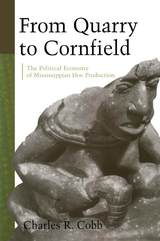 From Quarry to Cornfield: The Political Economy of Mississippian Hoe Production
Charles Richard Cobb
University of Alabama Press, 2001 From Quarry to Cornfield provides an innovative model for examining the technology of hoe production and its contribution to the agriculture of Mississippian communities. Lithic specialist Charles Cobb examines the political economy in Mississippian communities through a case study of raw material procurement and hoe production and usage at the Mill Creek site on Dillow Ridge in southwest Illinois. Cobb outlines the day-to-day activities in a Mississippian chiefdom village that flourished from about A.D. 1250 to 1500. In so doing, he provides a fascinating window into the specialized tasks of a variety of "day laborers" whose contribution to the community rested on their production of stone hoes necessary in the task of feeding the village. Overlooked in most previous studies, the skills and creativity of the makers of the hoes used in village farming provide a basis for broader analysis of the technology of hoe use in Mississippian times. Although Cobb's work focuses on Mill Creek, his findings at this site are representative of the agricultural practices of Mississippian communities throughout the eastern United States. The theoretical underpinnings of Cobb's study make a clear case for a reexamination of the accepted definition of chiefdom, the mobilization of surplus labor, and issues of power, history, and agency in Mississippian times. In a well-crafted piece of writing, Cobb distinguishes himself as one of the leaders in the study of lithic technology. From Quarry to Cornfield will find a well-deserved place in the ongoing discussions of power and production in the Mississippian political economy.
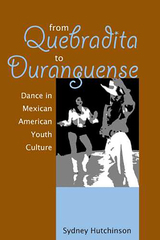 From Quebradita to Duranguense: Dance in Mexican American Youth Culture
Sydney Hutchinson
University of Arizona Press, 2007
Salsa and merengue are now so popular that they are household words for Americans of all ethnic backgrounds. Recent media attention is helping other Caribbean music styles like bachata to attain a similar status. Yet popular Mexican American dances remain unknown and invisible to most non-Latinos. Quebradita, meaning “little break,” is a modern Mexican American dance style that became hugely popular in Los Angeles and across the southwestern United States during the early to mid 1990s. Over the decade of its popularity, this dance craze offered insights into the social and cultural experience of Mexican American youth. Accompanied by banda, an energetic brass band music style, quebradita is recognizable by its western clothing, hat tricks, and daring flips. The dance’s combination of Mexican, Anglo, and African American influences represented a new sensibility that appealed to thousands of young people. Hutchinson argues that, though short-lived, the dance filled political and sociocultural functions, emerging as it did in response to the anti-immigrant and English-only legislation that was then being enacted in California. Her fieldwork and interviews yield rich personal testimony as to the inner workings of the quebradita’s aesthetic development and social significance. The emergence of pasito duranguense, a related yet distinct style originating in Chicago, marks the evolution of the Mexican American youth dance scene. Like the quebradita before it, pasito duranguense has picked up the task of demonstrating the relevance of regional Mexican music and dance within the U.S. context.
 From Quills to Tweets: How America Communicates about War and Revolution
Andrea J. Dew, Marc A. Genest, and S. C. M. Paine, Editors
Georgetown University Press, 2020 While today's presidential tweets may seem a light-year apart from the scratch of quill pens during the era of the American Revolution, the importance of political communication is eternal. This book explores the roles that political narratives, media coverage, and evolving communication technologies have played in precipitating, shaping, and concluding or prolonging wars and revolutions over the course of US history. The case studies begin with the Sons of Liberty in the era of the American Revolution, cover American wars in the nineteenth and twentieth centuries, and conclude with a look at the conflict against ISIS in the Trump era. Special chapters also examine how propagandists shaped American perceptions of two revolutions of international significance: the Russian Revolution and the Chinese Revolution. Each chapter analyzes its subject through the lens of the messengers, messages, and communications-technology-media to reveal the effects on public opinion and the trajectory and conduct of the conflict. The chapters collectively provide an overview of the history of American strategic communications on wars and revolutions that will interest scholars, students, and communications strategists.
|
|
